Q-n-A Webinar 11: Sept 10
Q-n-A with Craig Morrow, eleventh webinar, September 10th 2025
Can you see me?
Can you hear me?
Hey, Mark.
How are you doing today?
Can you hear me, Mark?
All right.
So we got that going.
Hey, David.
How are we doing today?
Very well.
Good.
Kim?
Hey, Kim.
How are you being?
Charles?
Good evening, Scott?
Nick?
All right.
Well, if you can hear I'm guessing you can see me.
How are we doing this evening?
All right.
So, welcome to the next webinar session.
I'm not sure which one this is, but I will be your swing guide today, RST instructor Craig Morrow.
It's been an interesting 24 hours for me, to say the least.
So as usual, protocol, I will let everybody kind of scurry in the room, the ones that are trying to catch us live.
I got a couple emails from people that are like, hey, Craig, I'm going to be there.
I'm going to be getting right at home when it starts, so give me just a second.
So I'm going to do that, let everybody kind of pile in.
You will notice today, you probably already have, that this is a little bit more zoomed in than it has been, and that's because what you don't see behind this camera right now, is I had a flood.
And so that wall and the floor isn't there.
And you can't see that, but everything has been moved forward.
So that's why I'm a little bit more up close and personal today.
And that's about all I got.
So I hope everybody's doing well.
Everybody got this goat swing down?
You should have it down by now.
Got all the movements down.
Using the core, release, all the fun stuff.
I figured with all these webinars, I mean, you should have this down by now.
You don't need me anymore.
Ticker's still kind of going up.
So what's going on out there in the world?
How's everybody doing with their golf?
Anybody got any questions or anything they want to say before I get this thing going?
Yeah, Let's see, is that a mirror behind you?
Yes, That is a mirror behind me right here, and I've got you can't see it.
But I've got one that same size right here.
So it allows me, if I aim this way, because of, the, you know, the rubber floor right here.
When my desk isn't within Club Link, I can see myself from face on and down the line as I'm doing my motion.
So kind of check both views.
It comes in handy, I'll tell you that.
It's even like right here, I can check and see all my motions.
And I still, still to this day will tell you, this is the number one swinging right here.
I'm sure you got one of those somewhere in your house.
And if you'd use that or, you know, if you have some of blue painter's tape or anything like that, I'm telling you.
Let's see.
Kim, we still need you.
Well, thank you.
I appreciate that.
Would you say the goat swing is really a pull from the left while also throwing from the right?
It's a combination of push and pull.
I mean, the vast majority of the drive, it's still a trail-sided driving swing, but there's still pull on this side.
So it's kind of like, and I think that was actually a question on one of the things I'll get to tonight.
it's the same thing as if I'm moving into my downswing.
Let's just use the legs, for instance.
I'm using both legs, all right?
I'm driving my trail leg into my lead leg, so I'm getting my vertical force from here, but I'm also using my trail side to speed up to clear that hip.
So when you say pull from the left in a goat swing, remember, you're not trying to power it.
With your arm, you're not pulling it with your arm.
Okay, so I'm not trying to yank this and push this.
At the same time, I'm trying to drive my trail side and allows my lead side.
As Chuck was talking about, like a serratus and stuff right here.
My lead hip are pulling that way.
But I don't want you to think that you're pulling the arm, you're never trying to take the arm and yank it down.
I see that all too often, where players are trying to power it with their arm.
They're like, I don't understand why I don't have any juice.
And I'm like, it's because all your speed is coming from your arm.
That's what happened with a lot of people when they were training lead side pattern is instead of after learning how to release the club, they would get here and they would start pulling their arm like this hard.
And they'd be like, well, Craig, I can kind of hit straight, but it's not going anywhere.
I'm like, because you're not using the power source.
I'm using my weight and my hip to help sling this into impact.
Kind of like the throwing of the Frisbee analogy is probably the best.
If you have a Frisbee and you're going to throw a Frisbee, would you throw the Frisbee by yanking your arm like that?
I could get speed out of that.
Might be hard to time the accuracy of the throw.
But my arm, as I'm throwing a Frisbee, I'm allowing it to be moved and propelled by my body, just enough tension in it so I maintain structure and it's being propelled by my body until I let it go.
It's not the arm that's doing it.
That's just something that I see way too often is that players are trying to power it with their arms.
I'll give you about 30 more seconds and we'll get going.
Is it being propelled by the hips or the torso?
Both.
The hips, you have to think about, you know, all these things are working.
The hips are really what's driving, but the torso is working right here.
You don't want to try to power it with the torso solely.
And what I'm saying is don't try to rotate your torso as hard as you can, all right?
It's really the hips that are driving to kind of make all the.
The magic happened because the hips are moving this way and then back up this way as you have your oblique clearing right here.
Let's see.
No Mountain Dew.
No, Tom, believe me, I need it right now.
But I was in such a rush to kind of get this kind of set up because I got a wall cut out right there.
I got the carpet pulled up.
I got all sorts of things.
Torso equals abdomen.
Yeah, I mean, your core, I mean, think about it this way, Paul.
And then I'm going to get started with the questions.
Think about it this way.
You know, when you work on your short game and all that, your core and all that's directing the motion, you know, the body's kind of the engine of the swing.
But as I'm starting to move through here, I'm not just trying to rotate my torso as fast as I can.
I can drop, I can get my hips.
And my posture, it's my hips that are really kind of driving that motion right there.
This is still engaged.
It's still working.
But I can pull like that, and my hips don't drive.
Now, I can use my legs and my torso to clear, and I can really get some space right there.
Alexander, why is compression difficult with goat grip?
Seems to promote thinning or flipping.
If you're thinning or flipping it with goat grip, then what you're doing is as you're coming down, you're trying to power it with that hand.
I guarantee you don't have enough rotation to maintain the supination because as you start to come down, that rotation and the supination motion will help you maintain the proper radial deviation to get the strike on it.
If you're thin and flipping, you're either trying to power it with your arm or you're trying to power it with your shoulders and you're catching up with your arm.
So with that being said, let's get going.
Let's get going.
Let's see.
Where do I leave off?
You said, uh-oh, you used to be trail side before rotary swing.
Yes, I was trail side before rotary.
What differences are there in what you were taught then and how rotary swing teaches trail side now out of curiosity?
Well, there was a lot.
But I'll kind of hit the high points on it.
The big thing that I think people start to kind of misconstrued with the trail side swing.
And how I was taught, and why my shoulder is completely shot.
And vice versa is as you come down, I was taught the trail side pattern of taking my trail side, my shoulder, my chest, my upper half, my hips.
And driving it down into the ground, essentially basically driving down and then holding off on the club through the shot.
You've probably seen a lot on YouTube, or just in instruction in general, where they tell you to get down here and have that big swing left.
That's essentially what I was doing is.
I had a big swing left and I was holding off on it for dear life, because that's I was taught.
That release, letting the club rotate was bad.
That's going to yield, hook, that's going to yield, You know, all the worst things that you could possibly imagine.
And so when I was taught trailside, I was taught to drive my body as hard as I can and my right shoulder down and through the shot and don't let the face rotate.
Now, other than completely shredding my shoulder, I was powerful.
I'll give it that.
I was powerful, but my accuracy was absolutely dreadful with the driver.
You know, I'd hit one great, awesome next one.
I feel I can make the same motion four counties over to the right.
So, Until I understood the principle of how the club is supposed to release, or just not even understanding the physics of the release.
I couldn't take care of my accuracy problem.
That's the difference of the way that the trail side of how we teach it.
Okay, when we think of a trail side pattern or goat pattern We're still going with the nature of the golf club.
We're still, we're not fighting the physics of it.
Like when you think of the supination and deviation, all that working down, we're still allowing the club to release.
Like you still want your forearms and hands.
You're still going to have a release through because all that energy has to go somewhere.
And you don't have to get down here and have that 90 degree open hip feel motioning down into here.
The big difference is as we're doing it, we're following the principles that, well, you don't have to have your hips 90 degrees open.
You're not trying to hold it off.
You're not trying to swing left.
You still want the club to be able to snap.
It's not the perfect visual, but in some reviews, I always show people like Freddie Couples because you see how in the simplicity in his swing where, you know, he's just kind of going up.
Coming down, but you see how there's a snap down there and a lot of golf instruction tells you that there is no snap.
That you don't want to let the club rotate.
Which couldn't be any further from the truth.
Uh, so the biggest difference of what I did is in the 90s, it was say, don't, don't, don't do anything with that face, don't, don't let it rotate.
Rotation's bad well once you start letting it rotate.
And you combine it with the fact that you don't have to have your hips 90 degrees open to the target.
Because that's not how a proper vertical post is done.
Kind of makes golf a little bit easier.
Hurts your shoulder less too.
All right.
Question number two.
On the Fast Eddie video Chuck did where he talks about the feeling like he throws the head backwards towards the camera.
It looks like he uses his arm to do that and not just his wrist.
Is that supposed to be done with just the wrist?
Well, the big thing with that throwing motion, and if you're on here tonight, I'm assuming the one where Chuck's working on his long drive, and he's like, hey, when I get up here to the top, I feel like I'm throwing that club straight at the television behind me as I'm driving this way.
He's not throwing it with his arm, all right?
you don't power the swing with your arms, period, flat out, no debate, okay?
The throwing pattern, does the arm and all that get involved?
Absolutely, okay?
But let's think about this.
When I'm throwing, what's kind of the first couple things that happens?
Well, I start to step forward as I'm rearing back, which kind of creates a lot of tension.
And as I start to go this way, what happens as I'm moving laterally?
Well, my arm, starts to come with me with my lateral and rotational motion.
This kind of goes back to what Jack said.
As long as you're moving laterally towards the target, you can feel throwing it as hard as you can.
As soon as you stop doing that, if I didn't move laterally and I just started throwing, yeah, I would probably get into a cast and I'd start hitting it behind it.
But as long as I'm moving this way, that's why I think the throw is the best.
As long as I'm moving this way, I can feel I'm throwing it as hard as I can.
And it's still gonna be with me.
Because, Think about if I'm gonna have hard driving, fast tips and a lot of speed.
I don't want to have, I want to, I want to use that and take advantage of the width.
All right, I don't want to narrow things down and have this really sharp angle, I somehow have to time as I get rid of it.
I want to take advantage of this wide arc.
And the wider that I can kind of keep that right there, the harder I can still kind of drive right here Now, I think one of the biggest misconceptions is that players took that from Chuck's video.
Where did my club go?
Took that from Chuck's video, and they're like, oh, I can just cast.
And yes, Kurt, Ballard said that too.
Oh, Chuck's just telling me just to cast it at the top.
No, Chuck is still.
If you think about the thumb button on the side of the club, the club is still supinating.
The throwing motion is being started or is being controlled, worked by that thumb button, feeling that little boop.
It's right here, feeling that little boop, boop.
And so he feels like he's throwing it that way, but you don't see me steepening the pitch of the shaft or just straight casting.
It's still a supination.
Throw motion because, look at, look at the plane of my shaft.
Right now, it's not going like this.
That would be a cast.
I'm still.
I'm doing the thumb button.
So that when I get down here, as long as I keep moving this way, I can swing as hard as I want.
Now, this has nothing to do with anything.
But I just realized as I went through, I'm a lot closer to this than I usually am.
So, um, That kind of just got me.
But the throwing motion is still this button with the supination.
Okay.
So it's not a cast.
It's a throw.
You still want, as we talked about a few webinars ago, it's still this kind of go to action release where it's supinating, deviating, pronating.
It's just up here.
If you're going to go and you're going to move laterally and you're going to drive your hips and arms and hands hard, you got to get that puppy going.
Because if we think about the dynamics of the golf swing, where are you going to max out in hand speed?
Like when you look at it, is the hand speed down here?
Is it right here?
Well, and the best players in the world, you're going to see they're maxing out their hand speed between here and here.
Because you've got to get it going so that you can decel it down here to transfer that speed to the club head.
If I'm still picking up speed down here, like if I'm trying to accelerate my arm, I'm trying to accelerate my wrist.
As I'm down here through the hitting area, I'm never gonna be able to take advantage of all that speed.
All right, so hopefully that answers the question.
When you want to add more speed or step into one in a trail side pattern.
And are not so much the squish the bug release When you want to add speed and not so much to squish the bug release, how do you add speed without not getting into GDP or passing through it, as you would say?
You're going to pass through GDP, period.
If you're not passing through GDP, you need to come see me or somebody.
Because you have to move through GDP.
There's no point in trying to have a ton of speed, and by the time you get to here, your arm's out to your side and you have no angle.
So you're going to have to move through GDP, period.
But is it literally feeling like you throw harder with your wrist after you get into GDP?
That throw and that snap, the feeling of that happens much, much sooner.
But if you're not a squish the bug, which all the squish the bug is saying is that you're adding more from this side, which you kind of have to do in a trail side pattern.
I mean, it's kind of a little bit of the gas pedal.
But if you're wanting to get a little bit more snap, you know, kind of without.
adding that little bit of that component, which is going to be kind of tough without adding a little bit of the right side right there.
What I would focus on is that you technically feel like you're going to throw it harder from the top, the button move, but I'd really work hard on how you're using your lead leg.
I think it was the club head whip effect video.
Where Chuck talks about all he does from here is he thinks about this and then snapping his left leg.
If you do that, you won't have to add so much from this.
Just know that you're limiting yourself.
You can get more speed that way, you get that cleaner post.
Get it feeling like you're throwing harder from the top, and you get that vertical motion correct.
Like you're whipping that behind you, you're going to get more speed.
The problem is, I like to be efficient, all right, And if I want a little bit more speed, then just adding a little bit more trail side drive right here into my lead leg, I don't have to be like Justin Thomas, but I can get a little bit more initially like this and still have counter torquing.
My foot's going to be here instead of here.
Just that little bit of just.
That's going to give you.
more potential speed.
But if you don't want to squish the bug and push a lot off that foot, then I would focus on feeling like you're throwing harder from your wrist, but make sure you're moving laterally, but really work on that feeling of how this left leg, left hip kind of snapped back because you're going to need an efficient brace to be able to do something with all that wrist action coming down.
All right.
Hey, Craig.
Howdy.
I'm working on trading the lead arm and trail hands separately and then using both to blend the feels.
Love it.
Do you have any tips or progressions for all three?
Lead arm is pretty rough, so I'm starting very small, but even with small swings impacts a mystery.
Okay.
Well, lead arm, I would say the most common thing that I see is a little bit of what I alluded to earlier, is that I like players working on both sides.
It's kind of like if you're a right -hander and you swing left-handed, just to kind of work the other set of muscles.
But as you're going through it, and I know who this individual is now, it pops in my head, that's working on left arm and right arm and then adding both.
I love that because you learn what real muscles are kind of powering the swing.
So let's take left arm, for example.
The biggest problem that I see.
When players are working on like the newer video, how the goats train their lead arm or they're working on little small left arm shots, it goes back to the pulling of the arm.
When I'm winding this back or I'm doing even the step drill where you're here and then coming down.
I saw one today, not calling out the person, but I saw one today that was sitting here doing the lead arm version.
And as the player would start to come down.
Their chest and everything would rotate through the shot like this, which would delay the release of the club.
The most common thing that I see is that players, when they're doing the lead arm version, are trying to hit the ball too far.
That's not the point.
You only have one hand on the club.
I don't care how far you hit it.
What I care about is the efficiency of it, is that this arm is feeling relatively dead to you.
Okay.
And you're feeling how moving your pressures and moving your hip is kind of speeding up this pendulum action.
So see, my arm's just swinging like a pendulum right here.
Like I could literally do this for an hour and I get tired because I'm just letting the weight of the club kind of go back and forth.
But then I start feeling how the weight and being dynamic with how I drive my hips allows this to snap better.
So what I see more players often than not, they don't move their body.
They rip the arm down.
They haven't done anything yet.
And now they move their body through, which the club hasn't released.
Now your contact is going to be terrible.
Soften that up.
Trail side.
What I see is because this arm is very trained for most people is that they go up here towards the top.
They actually start to make a good pivot coming down because it mimics a throwing motion.
And then they go like this.
Because they have the feel of the club and they immediately just start squaring it up.
They get here and they're like, the whole point of this is to understand how I'm going to move without having to move this.
So when I'm making little trail arm only swings and I'm starting to pivot, I'm learning how my trail side is driving.
You can see the width right here that I have.
How I move me.
To get me up here into impact, I haven't done this yet, I haven't done anything with trying to square up the club.
I've literally felt it like it was like this the whole time and then pivoted my body around.
Look at my club face, it's dead square.
I haven't rotated at all yet.
That would be the problem that I see when people are doing it.
Trail hand only is that they get here and they're like, Oh, I can do this.
And they go back to powering it with the arm versus getting here.
And I'm moving my body to get me into position, not this.
I see that all the time with people doing trail handling.
Now blending them both, The lead arm taught you how this kind of felt like a pendulum.
And your lead side helped you have that little bit of pull to the question of the guy earlier that you feel a little pull from that side.
This side teaches you how to trail side helps speed everything up and drives you into impact.
Well, now as you add both arms to the equation, what have you just learned?
That the arms don't do anything.
The arms, they're here.
I just did left arm only.
It wasn't supposed to do anything.
I just did right arm only.
It wasn't supposed to do anything.
So now when I start blending the two, I'm trying to feel the same thing, that my weight's going back, my arms and hands really aren't doing anything.
I feel the supination in my trail.
I feel the pronation in my lead right here, and I'm just going through my check markers of getting it back and letting my body, my legs, pivot into impact.
So if we think about the progression, we think about trying to use those as like a stepping stone to get both hands on the club.
Understand why you're doing that.
Okay, understand why I might have somebody do that.
It's because I need them to get the sense that these guys right here are just conduits, all right?
The arm doesn't produce any power.
It can, but that's also, you know, Anthony, one of our other instructors, he probably had a swing review with him.
And Chuck, you know, when we talk about all these things.
We see this all the time.
Players get capped out on speed.
I can't tell you how many lessons, how many everybody.
It's like, Craig, I'm capped out at 90 miles an hour.
I'm capped out at 92 miles an hour.
Or even, you know, Anthony or somebody will say like, hey, this person came in, same thing.
And what do we see over and over and over again?
They're just powering it with their arms.
When I'm like, literally, if we just made these two rods.
Like, connected you to where you couldn't move these, and we forced you to move your body correctly.
And just allow for a little bit of hands.
You'd be like, Oh, how do I get much more speed in that?
And it's it's just, it's human nature.
We, we have these things, especially as we grow older.
But it's also why, you know, in my unlimited group, I got a nine-year-old that hits it 220 yards and he's this big.
His arms are about this big around, but it's because he understands how to, I mean, he does all his footwork the way that, but it's because he moves himself because he knows he can't get it from his arms.
All right.
So as you're going through the progression, if you're going to use solo arms, understand the whole point.
It's to stop trying to use your arms in your golf swing.
The more you use your arms, the more you're going to have to come get a swing review, get a lesson, visit a webinar.
If you get those guys out, you're going to be a much happier camper, I promise you.
That's why we start with the short game.
Because that's the very first thing that you learn is how to swing without shoving your arm all over the place.
And that just keeps building and building and building.
Where you learn how your engine is doing everything.
Not these guys.
I can manufacture any position.
Doesn't mean that I'm going to go very far, but I can manufacture with arms.
All right.
Somebody on the range told me that I, in the backswing, had my right elbow too close to my body, making the backswing restricted with not enough width.
Is this a well-known problem that needs to be fixed, and how?
Is the right arm being restricted in the backswing a well-known problem and not enough width?
100%.
A lot of that started with the glove drill and the towel under the armpits drill.
I was even taught that.
Where players are taught to tuck in their shirt sleeves or take a glove or take a towel, just as I was talking about the arms, and swing like that.
But the problem is.
If this arm isn't allowed to move, you can't create any elevation.
You can get width doing that, but you can't get any elevation.
If you look at gears, for some of you that don't know what gears is, it's basically the track man for your golf swing.
It tells you all the points that you're doing, where the club is, where your body is, and you can kind of compare yourself to pros and all that.
It puts you in a bunch of dots and stuff.
I've done it.
You look really funny.
You look like you're doing CGI for Marvel or something.
But if you look at like the data on there, you'll see that players, their trail arm has elevation and it does start to move up in the backswing.
And so when you restrict yourself like this, that's not what the best players in the world do.
The best player in the world is allow their right arm to move up and down.
And, you know, you look at a lot of them, they kind of get a little bit more like this and they get a little bit more like this.
And that's why when Chuck talked about that scapula motion, like letting the scap come up, as the scap starts to go up, that allows you to get this kind of higher and wider and bigger arc.
And so when you start to get an extension, it helps out with shifting back towards the lead side with it.
So what I would do, if I were you, first, you got to keep your right arm straight.
Well, how do you keep your right arm straight?
You keep your right arm straight by moving your body.
All right.
So if I learn how to shift and rotate, I don't have to bend my arm.
But the simplest thing to do is grab.
I think I lost all my all my stuff in the flood.
Let's hold on a second.
Found it.
All right.
What I would do is just grab a ball.
All right.
Don't know if it'll bounce, but grab a ball.
And imagine you were going to throw something, all right?
Like you're going to be a major league pitcher.
And just rear back.
What did your arm do?
Is it up?
Is it wide?
Is it not glued to your side?
If I was going to rear back and throw, you can feel how you get some separation.
You get some height with this.
Now do the same thing in a golf stance.
Just let it wind back.
That wouldn't feel very powerful, would it?
If you just glued your arm to your side and did that or letting your arm kind of go up, this is an extreme, but you need to start getting trusting of the feel of letting your arm kind of get some depth to it, get some height to it.
Keep this arm straight, move your body, let it swing up, feel the scapula kind of move up a little bit instead of it staying so glued down that your arm can't go anywhere.
Width is very important.
For me, being a lead sider, it is of the utmost importance because that's where I get a lot of my speed from is maintaining my width.
All right.
What is the importance of having a 104 -degree angle in the right-legged setup and at the top and combine this with side bend in the backswing?
How important is what we do in the backswing for our downswing will it be?
Well, the importance of that angle, you know, when we talk about fascial stretching and loading, to make sure I answer the whole question, right leg gets set up and at the top and combine this with side of it.
Because when we talk about the fascial stretch and loading, when you get that 104 degree angle as you go this way, this helps you elongate the muscles.
like Chuck showed you in the webinar, like that kind of, you know, he called it like the Instagram kick out where you kind of get here and kind of swing up to get these muscles engaged right here.
Keeping that angle allows you to get this proper internal femur rotation and to get the hip depth so you can maximize your fascial stretch right here.
And so when you do that and you start to rotate against the leg right there, The scap can come up into extension so that when you start, if you watch what happens, when I start to go this way, having that angle, I'm using this term loosely, helps you kind of preset getting your pressure back this way.
All right.
So when you maintain that angle, it's helping you maximize that stretch.
But you'll see as I start to finish, what direction are my hips going right now?
You'll see a very subtle motion.
So I go here.
You see how my hips start going?
Because it's helping me kind of max out, and then my hips naturally want to start to move back towards the lead side so that I can get my pressure back soon, and I can really start driving down in the downswing.
So the importance of the angle is to maximize our stretch, but to also.
Get us in the correct position to start making that pressure shift back correctly in the downswing and a little bit more automatic.
Players have an insanely hard time with the transition portion.
All right.
They just do it.
And I understand.
I mean, but they have an insanely hard time of going this direction and now going this direction.
They don't realize, like what we taught in Axiom, it's one motion.
That as I go on my backswing, I'm actually starting to shift my pressure back this way and then rotate open to right here.
This is all one kind of motion.
It's not a segmented motion.
If you're struggling with getting your pressure shift back, you're probably doing it incorrectly in the backswing because that kind of presets you doing that correctly without having to think about it.
So that's why that's so important is because it makes the swing one.
If I could, you know, summarize it.
At the simplest point, that angle and keeping that is so important to make you have a one movement golf swing versus things feeling so segmented.
I got to shift over here.
Okay, now, let me get my weight back over here, now, let me do this.
It helps it kind of preset how you move your pressures and how your pelvis rotates back to the lead side.
What can turn an out-to-in swing arc into an in-to-out?
Supination.
We know this, people.
If I'm here and I'm supinating, if I'm right-handed and I'm moving clockwise from my perspective, from your perspective, it's going counterclockwise.
But if I'm going here and I'm going 12 o'clock, 1 o'clock, 2 o'clock, 3 o'clock.
If I'm supinating, moving in the clockwise direction as I'm moving laterally, you probably can't see because you can't see my right foot, but I'm moving laterally as I'm doing that.
The lateral motion combined with the supination allow me, I mean if I wanted to, to throw as hard out to right field as I possibly could.
How can factors such as supination, clockwise swing motion, staggered stance, and other important points such as this play a role?
Well, the supination has to happen, period, if you're going to have a good swing point.
Period.
Lead side, trail side.
I don't care.
Clockwise motion, that's the supination.
That's the exact same thing.
Now, the staggered stance, I sometimes use this with students.
And so for those of you at home, I'm assuming this is what he's meaning, is taking the trail leg and dropping it back like this so you have a little bit more of a close setup to promote more in-to -out.
That's something that I'll do in a lesson sometimes, especially for players that spin really hard.
And I even have a video on YouTube.
I did, like four years ago for Rotary, where I talk about.
If you take this stance, kind of staggered.
And once you get up here, it's really easy to kind of get your turn.
But you can see where I'm facing right now.
I'm facing this direction.
So once I get up there, if I feel like my hips and my sternum and my chest all stay facing that way, It's going to be very easy for my arms to drop underneath plane and swing out to the right, because it kind of kills excessive steepening and pushing from my right side.
And that's a really good way to get the feeling.
If you look at even like the Bomb Your Driver series, like when I really want to step on a driver, I know my biggest kind of fault is that I'll spin too hard and the club head won't be able to catch up.
So I'll kind of stagger my stance just a little bit.
I'm giving you some insider information here on my game.
I'll stagger my stance just a little bit, almost to where it's not noticeable, like to somebody I'm playing with.
But what that's going to do is allow me to feel.
Like, I'm going to stay closed a little bit longer, so I can really drive my legs harder and stay on that plane.
And really promote a little bit more of that out there and swing path so that I can kind of catch the ball a little bit later, hit a little bit higher, hit a little bit further.
But all those are all the factors that you have to have to have in to out.
You don't have to have a staggered stance.
But this motion, I don't care whether you're Tiger, I don't care whether you're Chuck, I don't care who it is.
If you watch every single player, that's what you're going to see.
Might see varying degrees of it, but that's going to be what you see.
All right.
How is the goat footwork to minimize using muscular power in the swing?
Why is this important is what is gained by it.
What do most golfers do in the wrong way and how to fix it?
Well, I'll go backwards on this one.
What do most golfers do with their footwork?
Most golfers push their hip and leg forward towards the golf ball, and then their lead leg and knee, they externally rotate it this way trying to clear their hips.
So what they tend to do is they tend to early extend and go like this.
I'm exaggerating, but this is what they tend to do is they tend to push really hard off this side, getting that foot way up off the ground too soon, causing their right hip to come in.
And then as they try to post, their pressure gets moving so much towards.
The balls of their feet, that their lead knee starts to externally rotate and they can never post up.
It's kind of like the same syndrome as getting like heavy lead leg.
Like, if you put all your weight over here, it's gonna you gotta work to post up.
That's what I see more often than not, pushing from this, this going that way.
So why is this important?
And what is gained by doing proper footwork?
To minimize using muscular power?
Well, you're still using power from your body.
But it's kind of like I was kidding with Chuck on our little messaging board said Think about a figure skater, all right, that's if I'm like this and I'm nice and wide.
I'm spinning, I'm spinning, I'm spinning.
What happens is I start to tighten up, what happens is I start to bring everything center, I start to speed up.
And so when we think of Going towards the top, now we're using our adductors, ADD, not ABD, adductors, the insides right here, not the outsides, the insides.
As I'm going from here and I'm using my adductors, number one, that helps me pull the weight correctly.
It helps me ensure that I'm moving weight in the right direction, especially if I'm using my left leg right here.
Second thing is, Think about, like the figure skater, all right, it's the only thing I can think of to kind of relate to people.
If I'm nice and wide and now I'm squeezing everything inwards, that's going to be how I'm whoo.
It helps my hip and everything go up, but bringing everything in towards center, that's me going this slow, spinning around and then speeding everything up.
And that's because when I do that, that brings everybody in.
That squeezing of that adduction right there helps me get my proper post up and speed up and throw the club harder.
As soon as I push this way and this knee goes this way, one, you're not going to maximize your vertical force.
Two, this typically right here isn't going to either A, Cause you to get under playing and stuck to where you have to flip.
Or you have to start pushing with your right shoulder and right side to try to get the club to catch up if you want any power with it.
So for less effort, the squeezing of this, that's a lot easier than that.
Once a lot more work produces less.
So hopefully that kind of answers that question.
In the golf swing, it's important to understand that rotation should not be viewed as merely spinning the body around a thousand percent.
You know, it's, we got a great name in rotary swing, but it kind of gives people a false impression that they think like the golf swing is like this kind of in the barrel, in the barrel like this, like very horizontal rotational motion, which RS1 was a little like that.
For those of you who've been around a while, you'll know what RS1 was.
Instead, should focus on creating torque.
Can you explain how to understand the statement and show how to do it correctly?
Well, it's a little bit of what I just showed.
So the rotation is just spinning around.
You don't create power by just rotating horizontally like this.
Like that's not going to do it.
What you're trying to do in the golf swing, or at least in your goat motion right here, you've got to remember that when you hinge forward, everything changes.
So as soon as I hinge forward right here, I've now got this shoulder plane that I'm working on.
My hips are now not rotating flat, but right hip's actually going up, back to square, going back this way.
They kind of work like a U.
And then not only do my hips go like that, And my shoulders go like this on.
My spine.
Now goes from here back into extension as I move into side bend, it now goes into flexion as I go here.
So not to lose the point on the creating torque aspect.
What I'm trying to do is I'm trying to wind and stretch if I'm like this.
And I had a Zoom lesson yesterday where the player was doing the same thing, this right here.
I have no muscle tension, like if I get here and I rotate flat and my hips rotate flat, I don't have any tension.
I don't even have a signal to go the other direction.
But as soon as this hip starts to go internally and up, as soon as my shoulder plane works down and I go back into extension, I can feel something.
Right now, all right.
So I'm winding.
I've got some torque here to use, and now as I start to come down, I've got something I can unwind and fire this.
I have no tension, I have no nothing.
I'm gonna have to use all muscular effort to get back towards the strike on that.
So you want to, I don't want to make this complicated, but you don't want to see the golf swing as such a two-dimensional.
Just this, there's a lot of stuff going on.
That's why, even when Chuck talks about the backspin, he's like, you got a little bit of rotation.
As you're moving this way, then you get a little bit of extension, you get into a little bit of side bend.
Like, you know, your, your body's pretty fascinating when you start breaking this hole down.
But the creating of torque is because you're actually kind of moving like this to stretch versus this.
That doesn't really create anything.
That actually requires a whole lot of effort.
All right.
Connecting to our core, our right hand for power, how does this work?
Show us how to do this and what can we gain from So what's the question?
Connecting to our core.
All right, so my right arm's connected to my core.
How does this work?
And show us what we can gain from it.
Well, I think the punching bag or throwing a punch is basically the best way of kind of picturing that or seeing that.
If I was going to throw a punch, I wouldn't go like this.
Like if I wanted to get knocked out by the guy and want to win the fight, yeah, I would throw a punch like this.
But to my core, what I would do is I would take my core.
and my hips and drive my arms.
So I haven't done anything with my right arm yet, but it's connected to me.
It's not out here flailing in the wind.
All right.
It's connected to me right here.
It's connected to my body so that the driving of my hips and my core is what's transferring that.
So that I can punch through the wall or through the person, whatever we want to look at it.
I'm not doing UFC anytime soon.
So connecting to our core right hand for power, if you were to imagine when you get up here, if you're trying to throw a punch, like if this is a punch, I'm making a golf swing right here, and I wanted to throw a punch at the golf ball, how would I do it?
I wouldn't go like that.
This is the vast majority of golfers.
They get here, they wind up, and they throw their arms this way.
Because that's what they feel they got to do to get power.
Now, even just look at my arm right now.
What's happening?
You can see I'm literally coming over the top.
That's what I see on a daily basis.
All right.
Somebody gets here and they just use their arm.
Well, the point is, is now I have my scapula is moving to the correct position.
My arm is connected to my body.
I haven't done any big flaring or anything crazy like that.
So how am I going to hit this hard?
Is I'm going to think about it like a punch.
I'm going to let my core and my hips.
and everything drive my arm into the punch.
I'm not going to go like this.
So that's how this turns into that.
That.
I haven't done anything with my arm yet.
My arm is, I can, it's all this doing it.
So it's that connection right there that you're motoring.
And I think it was in the, I think it was in the last video.
Chuck said think about as the body is creating power, the hands are creating the speed.
So my body is creating the power into this, and then my hands are delivering the speed by letting it release, which that's the one part that I was told not to do, rounding it back to the earlier question about old trail side, which that's why it's so wear and tear on the body.
Okay?
That's why when I.
Did the old one.
I held on to that.
So where do you think all that energy went?
Instead of being delivered to the club.
All that energy was delivered in the crack.
This didn't like that.
Another way to say it is right hand slaps the wall.
Yeah, that's another way of saying it.
For sure.
So when doing the 4.
25 instant over the top cure.
Will this affect our ability to tuck the right elbow into our side?
It actually makes it easier, which must be difficult with the straight right arm.
Yeah, but remember, your right arm, when you're straightening it, all right, so Chuck says, I've got to remember, drop, extend, kind of pivot.
The arm's dropping.
It's dropping and extending.
So where's my arm right now relative to my side?
Now, if I got up here and I straightened my arm and then I dropped it, yeah, that's going to be, now I'm going to be a little bit in trouble.
But my arm is going down.
I'm dropping it and extending it.
And now as I'm moving laterally, I'm dropping and extending.
I'm connected right here and have no problem getting into impact in this position.
It would also affect getting into GDP.
It's the easiest way to get into GDP.
It's the easiest way, and I'll show you.
Do we have to choose one or another?
No.
It's the same thing Chuck does in his swing.
Same thing I do in my swing.
Even Tiger, if you, you know, that old, old Golf Talk Live or, you know, most of you have probably seen the clip on YouTube or something or watched it live.
I actually watched it live.
Where he talks about his old ole swing where Butch used to make him get here and stop and then feel.
His arm's getting down because all he wanted to do was, Olay, just push as hard as he could off his right leg, get him trapped under, and have to flip his hands.
Peter Kessler's like, well, so what'd you do?
And he's like, well, the drill that he hated the most is he used to stop at the top, and he would do that.
He'd have to feel his arms essentially dropping and extending before he could fire his body because his body would drive so fast.
Fast that his arms and hands couldn't catch up, kind of what we used to call Tiger stuck.
So the dropping and extending to get into GDP is way easier.
Think of the first part of the Goat drill or the second part of the Goat drill.
So Chuck talks to you about the backswing and getting the backswing position loaded and all that, and what does he say?
As you're moving laterally, arms have to come down, arms have to come down.
So if I'm trying to go from here and I start to pivot and I'm dropping and extending, am I not in?
GDP?
Looks like GDP?
To me, that doesn't mean I'm pulling my arms down or anything like that.
The dropping extend gives me that connection, makes it very easy to get there.
Um, let's see, I'll answer one more, then I'll do a couple questions, I'll mark where I'm at.
Let's see if we've got a short one.
Why should we release after impact?
That seems a bit strange, but probably has a good explanation, which is why would you release before impact?
What's the fastest the club's going to be moving in the golf swing?
It's going to be moving after the bottoming out point.
So after it's been released is going to be when it's the fastest.
But this is the conundrum with the release.
What are my wrist positions at impact?
So when I move into impact and I move up into here, what's my trail wrist in?
Trail wrist is in extension.
What's my lead wrist in?
My lead wrist is in flexion.
As soon as I lose that, other than losing control, everything's already starting to slow down.
I can't add.
When I think of my arms, my arms are conduits.
As soon as this happens, none of the speed that I'm doing with my body is going to be transferred through my hands.
It's already been delivered.
What can be delivered?
So as I move into the impact position, my wrist still has to be an extension if I'm going to transfer the force.
From my legs up through my core, through my shoulders, through my arms to my hands.
Because as soon as I do this, I've now lost that connection.
Anything that I can generate or apply force from from my body is now gone.
That's an old flip move, as soon as I flip, it doesn't matter what I do with my body.
Nothing's going through, but while I'm still an extension right here, that's going to be how I transfer the power now.
Also, it goes into the delofting principle I want to take my six iron and turn it into a four iron.
And so as I start to come down, if I were to release it early, I'm actually going to start adding loft to the club.
I want to de-loft that club into impact and combine it with a little bit of later release.
Because if I take my six iron and turn it into a four iron, and now I can transmit force from my body, I mean, now my six iron is going as far as my four iron.
And so essentially, The release has to be after because you can't transfer any of the speed from here.
You've already lost that connection.
It's kind of like if you're throwing and all of a sudden, as soon as your scapula goes up like this, as soon as your scapula goes this way, I don't have any connection to my spine anymore.
That's why you don't throw a ball this way because my arm's not going to speed.
When I'm connected like this now, I can transfer that force through my arm and hand.
Because my shoulder blades actually now pinned to my spine, which has now created a chain link to my arm and hand.
To deliver speed, same thing with the release, I have to have some angle right here before release.
Not only for the delofting and all that, but because these are the conduits for me to transmit that force.
That would be giving up on it too soon, and that would just basically apply all the speed that I have in my hand to power the ball.
Golf ball wouldn't even care.
All right.
So with that being said, my friends, usually the last couple minutes I like to open up but also say thank you again for joining me on a Wednesday.
I hope you found some of the points in Lightning.
I got a lot more questions, so we will do this again.
Don't worry about it.
So I hope you enjoyed it.
And the last, you know, kind of five, ten minutes, I always like to open up for you newbies in the group to the class.
If you have anything that I talked about, a little more clarification on or just you want to throw in a question or something, happy to do it.
And we'll kind of go from there.
All right.
Sorry, y'all had to be so zoomed in today.
I don't like the camera that much zoomed All right, Tom.
You're welcome, Bob.
Kurt, no problem, Paul.
All right, Mark.
Does your right arm actually extend on the way down?
That is a mystery to me.
Explain more.
What do you mean extend?
Just lose flexion?
Yeah.
I mean, think about it this way.
If my arm was this bent with flexion at the top, I'd never be able to hit a golf ball unless my spine moved down like this.
So the arm drops and extends, all right, so your arm has to start to straighten as you get into impact.
I think a lot of players that really got caught up on lag, they forgot that lag was in the wrist.
And they started trying to do it with their elbow.
Like, Oh, let me jam my elbow into my, that's not lag, in fact, you don't, you don't have lag nor width now.
The LAG is the angle between the forearm and your wrist.
And the club right here.
Okay.
Not this thing.
This has nothing to do with it.
So as I get up here towards the top, I want my trail arm staying straight for the width, but I'm going to add flexion to it as I start to finish here.
So at some point in time, I'm going to have to lose some of that flexion.
So, but just to make it simple, Mark, just think about it like a hammer.
I'm sure you've used a hammer before.
If I got a hammer in my hand and I go back this way, all right, my arm is going to move forward, then I'm going to straighten and then my wrist.
This is the same thing like a golf swing.
You're just getting rid of that lever.
So as this lever goes up here, well, if I want to deploy that lever, I'm going to have to deploy that lever.
I don't want to just keep this lever bent like this all the way into here, or I'm going to have to have a spine angle like this, which some players do.
But that's also why when you watch those extreme side armors that are like, that's the only way to do it is to get, I think I just tore something, but that's the only way to get there.
All right.
So hopefully that helps.
Oh, that was brilliant.
I just came up with that.
So that's how, Chuck and I talk about this all the time.
The vast majority of us figuring out like how to do things is questions from y'all.
And then the hamster every now and then starts to pedal.
And something pops out that makes sense.
All right.
Kim, when do you start to clear the hips and how quickly do you clear the left hip?
Depends.
I mean, if you're a potter or poltergeist, what I call him, he gets into his vertical force almost immediately because he has a ton of leverage.
So if you think about it, if you have a ton of leverage in your swing, the faster you're going to have to get to your vertical force.
Or the clearing, because you're going to have to do something to deliver all that.
All right, if you have a nice little wider arc, you don't have to clear them so much.
But when do you start to clear the hips and how?
I want to be careful with this because it's a feel and real aspect.
Just like, you know, Chuck's feel that he feels he's literally throwing the club into the television behind him.
That's what he feels.
He feels that he's doing that.
My downswing literally feels like this.
It is nowhere even close to that.
So I want to be careful with the feel, but when you think about what happens mechanically, the pressure starts to get back.
My lateral and rotational motion is done by the time my lead arm is parallel to the ground in the downswing.
which means that my vertical force needs to be done by the time that my arm and hand are moving through GDP right here, okay?
So when do you start to clear the hips?
As soon as my pressure gets back right here and my hips get square, which is roughly about lead arm parallel to the ground, I'm getting those puppies out of the way because I need that space right there.
It's a lot of emotions creating the space, and now I'm getting the hips out of the way.
So for me, It literally is just right to here.
Like, as soon as there, I'm already starting to clear that.
But that's the feel for me.
That's what happens mechanically.
That's the feel for me.
And how quickly do you clear the left hip?
It depends on what I'm doing.
Like, if I'm.
You won't be able to see my feet, which really stink.
Well, I don't know.
I've got pretty decent swing play.
We'll test it out.
Half the class is left, so.
If something breaks, I won't be laughed at by everybody.
So if I'm hitting just, I don't know what this is.
This is a pitching wedge.
So if I'm hitting a pitching wedge, like just a nice little stock pitching wedge, I'm going to get up to here, move into here, and move through.
All right?
Up to here, up to here, and move through.
Now to your question is how quickly do you clear the left hip?
Well, if I want to hit my pitching wedge, I'm going to scoot forward just a little bit.
If I want to hit my pitching wedge 150, Then I'm going to get to here, here.
Like my hip's going to clear much faster.
But I don't need it.
It smells like burnt rubber now.
But I don't need to hit my pitching wedge 150 every single time.
All right?
I can.
But I speed it up.
I kind of gas it.
I gas it for kind of how much I need it.
If I don't need to gas it a lot, well, I'm just like a little la la la.
I just got to kind of get it done.
But if I'm going to gas it, I got to get that.
I think that's how I think about it.
Ronald, thanks.
No problem, my friend.
Paul, should you be on your lead ankle at impact?
Yes.
Now, I don't want you on the back of your foot.
Like, I don't want you like this.
But your pressure should be moving towards your heel.
All right, because that's going to be how you get that hip out of the way.
If it's towards your toes like this at impact, you're not going to get your vertical force.
You're probably going to blow out your knee.
So both those are not good.
Charles, repetition is probably somewhat tedious for you, but is most helpful for us.
Thank you for your patience.
Well, thank you, Charles.
I appreciate that.
I mean, that's all golf is, isn't it?
Isn't it just repetition?
I mean, if you guys enjoy this series, I have zero problem doing this.
I enjoy this.
I mean, I actually get to stand up, do some things, chit-chat.
I have zero problem doing this, so I'm glad that you're enjoying this.
But with that being said, that's all golf I mean, for those of you that watch, some of you might have.
If you watch my Journey Back videos after my accident, a lot of the comments that I got from players were, I didn't really realize you practice like that.
No matter how many times they tell people, get your 100 reps in or do this and that, they're like, Craig, you literally sat on the driving range and you went like this, hitting the ball 10 yards for an hour and a half.
In every single shot, you did it like this.
Then you checked your position, said what you did.
And I'm like, yeah, because I want to fix my swing and move on with life.
I don't want to do this again.
It's all about the repetition, getting it down to where I don't have to think about it anymore.
I don't have to think about this at all.
And it's not because I did it for 20 years.
It's because I took a month, I ate my vegetables, able to do it without thinking about it.
So you hearing me over and over again, if this is helpful because it's repetition and it kind of beats it in there, happy to do it, my friend.
But that's what you need to do in your golf swing.
Learn how to be boring.
And the only way to be boring is what?
Just says another thing popping in my head.
How are you going to be boring?
Boring is doing the same thing.
Not the definition of insanity, but boring.
It's doing the same thing over and over again.
Oh, I'm just going to eat.
My plain chicken and my broccoli tonight.
Craig's just going to sit there out on the range and work on his release again tonight, which is why he never has to think about his release ever.
Vijay, thank you.
I appreciate that, my friend.
Tom, is the only time the scapula is connected to the spine is when the arm is in supination?
Yeah, so if you think about.
As you start from here, the scapula is going to move up.
And as you supinate right here, that's going to be that big bony triangle right there goes whammo right into your spine.
Now, in a lead side swing, in a lead side swing, you can keep that spine a little bit more connected going back.
You know, if you look at like Chuck's old swings or even look at like my current swing.
You'll see like, when I get up here, my elbow is really pointed down okay, and my spine already kind of gets con, or my shoulder already gets connected at the top.
Because I'm not really motoring it the same way, lead side and trail side, two different swings, I'm not really motoring it the same way, but in a trail side.
Think about like, throwing this is gonna get, or think about like a Freddy couples or something like it's gonna get wet or daily like way up there.
And as I supinate, That's going to be where I get that connection to now, get that drive.
And that's why the longer this goes this way, the more I have to wait for that reconnection.
That's why for me, my swing is nice and tidy.
I ain't got to wait.
I can go.
Paul, love these.
Awesome.
Manny, 53 in pretty decent shape.
95 to 100 mile an hour driver's speed, but I hit my irons approximately 30 to 50 yards less distance than my buddies.
Well, we'd have to kind of see what's going on, Manny.
If you're hitting it that much less, what I had to imagine is you're not getting the right kind of spin on it.
So like my six iron to four iron talk earlier, you're probably not getting the proper loft to kind of get.
some of that spin off and you're probably just spinning the ball like crazy and it's not really carrying anywhere.
So you're getting too much height on it right there.
So it's kind of weak.
and that's typically what happens with players with irons is that they're, they're like this.
And so, you know, it used to drive my roommate crazy.
So back way, way back in the day, uh, when I was doing the whole golf thing, um, my roommate, six 30, big dude.
All right.
I'm five, nine and a half roughly.
It used to drive him nuts.
He's like, Craig, I'm twice your size.
And back then I was 160.
Not today.
And he's like, Craig, it drives me nuts that you hit your irons two clubs further than me.
And the reason why I hit my irons so far were for literally only two points.
One, I've got a lot of whip.
So for my height, I got really long arms, now I've got a lot of width in my swing.
The second thing is if you look at my impact position when I start to get down into here.
I've got a lot of lean, so I've got a lot of width, merry-go-round aspect, and I've got a lot of lean which is really deal off in the club.
So, you know, my nine iron is really shooting off like a seven iron, and that's free speed and just.
So, that's a really good way to kind of cheat the distance.
But that's what I would imagine is going on.
They bring it up on par 3s.
I'm hitting an 8-iron 130.
Yeah, you have to be adding loft.
You have to be.
I figured I'm checking chat GPT for ideal spin and launch for each club.
Yeah, I mean, that's.
You can kind of use the adage, like, if you're using a 7-iron, you want to be kind of in the 6, 7,000s, like.
You can kind of go almost with the club almost.
All right.
But let us take a look.
I mean, post it on the community, forum, swing review.
I'll tell you why you're not getting the distance out of it.
Take me about two seconds.
Players always ask me, like, you know, how long does it take you to, like, figure out, like, what's going on?
I'm like, I didn't even pull out a camera.
Chuck kidded around, you know, when Chuck and I, you know, when we look at golf swings now, it's literally like looking at code, like the matrix.
It's just ones and zeros.
It's like, all right, that piece is working there, there, there, there.
All right, that's what we got to Glenn, thanks.
I appreciate it.
All right.
Anything else?
The next one I will answer and then I will sign off.
It is a strange day in the world today.
So I'm going to get out of here.
Mark, you're welcome.
That wasn't a question, though.
So I guess everybody's got it answered.
All right, good.
I can go on to other things.
I can go find a nice single malt to climb myself into.
I don't know if tonight's going to be a Scotch or a bourbon night.
I haven't decided.
I don't know if it's bourbon or scotch night.
It feels like a scotch night.
Wednesday, yeah, it feels like a scotch night.
Stanley, one of each.
I got to work tomorrow.
What are you talking about?
I got to work tomorrow.
I got a Zoom lesson in the morning.
Mark, Redemption Ride.
That's a solid call.
I don't have that on me right now, though.
But that's a good call.
So I'll figure out something.
All right, my friends.
It was my pleasure.
We will do this again, and I will continue on with that questions and get your questions into the community.
All right?
Get them in there.
I'll put them.
Think about it this way.
I'll leave you with this.
The longer my question list gets, the more you get to see of me.
Could be a good and bad thing for you all, but that's the way I view it.
Everybody have a good evening.
I will see you all on the next Wednesday session, which will be coming up soon.
Pouvez-vous me voir?
Pouvez-vous m'entendre?
Hé, Marc.
Comment vas-tu aujourd'hui?
Tu m'entends, Mark ?
D'accord.
Alors nous avons commencé.
Hé, David.
Comment allons-nous aujourd'hui ?
Très bien.
Bien.
Kim ?
Hé, Kim.
Comment vas-tu ?
Charles ?
Bonsoir, Scott ?
Entaille?
D'accord.
Eh bien, si vous pouvez entendre, je suppose que vous pouvez me voir.
Comment ça va ce soir ?
D'accord.
Alors, bienvenue à la prochaine session de webinaire.
Je ne sais pas exactement de qui il s'agit, mais je serai votre guide de swing aujourd'hui, l'instructeur RST Craig Morrow.
Ces 24 heures ont été pour moi intéressantes, c'est le moins qu'on puisse dire.
Donc, comme d'habitude, protocole oblige, je vais laisser tout le monde se précipiter dans la salle, ceux qui essaient de nous attraper en direct.
J'ai reçu quelques e-mails de personnes qui me disaient : « Hé, Craig, je serai là. »
Je vais rentrer à la maison dès que ça commence, alors donnez-moi juste une seconde.
Alors je vais faire ça, laisser tout le monde entrer.
Vous remarquerez aujourd'hui, vous l'avez probablement déjà fait, que c'est un peu plus zoomé qu'avant, et c'est parce que ce que vous ne voyez pas derrière cette caméra en ce moment, c'est que j'ai eu une inondation.
Et donc ce mur et ce sol ne sont pas là.
Et ça, vous ne pouvez pas le voir, mais tout a avancé.
C'est pourquoi je suis un peu plus proche et personnel aujourd'hui.
Et c'est à peu près tout ce que j'ai eu.
J'espère donc que tout le monde va bien.
Tout le monde a cette balançoire de chèvre ?
Vous devriez l'avoir compris maintenant.
J'ai compris tous les mouvements.
En utilisant le noyau, la libération, toutes les choses amusantes.
Je me suis dit qu'avec tous ces webinaires, vous devriez avoir compris ça maintenant.
Tu n'as plus besoin de moi.
Le ticker continue de monter.
Alors que se passe-t-il dans le monde ?
Comment se porte tout le monde au golf ?
Quelqu'un a des questions ou quelque chose à dire avant que je lance cette chose ?
Ouais, voyons voir, est-ce qu'il y a un miroir derrière toi ?
Oui, c'est un miroir derrière moi ici, et je l'ai, tu ne peux pas le voir.
Mais j'en ai un de la même taille ici.
Donc ça me permet, si je vise de cette façon, à cause du, vous savez, le sol en caoutchouc juste ici.
Lorsque mon bureau n'est pas dans Club Link, je peux me voir de face et le long de la ligne pendant que je fais mon mouvement.
Alors, vérifiez les deux points de vue.
C'est pratique, je peux vous le dire.
C'est comme ici, je peux vérifier et voir tous mes mouvements.
Et je vous le dis encore aujourd'hui, c'est le numéro un qui se balance ici.
Je suis sûr que vous en avez un quelque part dans votre maison.
Et si vous utilisez ça ou, vous savez, si vous avez du ruban de peintre bleu ou quelque chose comme ça, je vous le dis.
Voyons.
Kim, nous avons toujours besoin de toi.
Eh bien, merci.
J'apprécie ça.
Diriez-vous que le swing de la chèvre est en réalité une traction depuis la gauche tout en lançant depuis la droite ?
C'est une combinaison de poussée et de traction.
Je veux dire, la grande majorité du trajet, c'est toujours une balade en bord de sentier, mais il y a toujours de la traction de ce côté.
Donc c'est un peu comme, et je pense que c'était en fait une question sur l'une des choses que j'aborderai ce soir.
c'est la même chose que si j'entrais dans ma phase descendante.
Prenons par exemple les jambes.
J'utilise mes deux jambes, d'accord ?
Je pousse ma jambe arrière vers ma jambe avant, donc j'obtiens ma force verticale à partir d'ici, mais j'utilise également mon côté arrière pour accélérer afin de dégager cette hanche.
Donc, lorsque vous dites de tirer depuis la gauche dans un swing de chèvre, rappelez-vous que vous n'essayez pas de le propulser.
Avec ton bras, tu ne le tires pas avec ton bras.
Bon, je n'essaie pas de tout arracher et de tout pousser.
En même temps, j'essaie de conduire mon côté piste et j'autorise mon côté avance.
Comme Chuck le disait, comme un serratus et tout ça ici.
Mes hanches principales tirent dans ce sens.
Mais je ne veux pas que vous pensiez que vous tirez le bras, vous n'essayez jamais de prendre le bras et de le tirer vers le bas.
Je vois cela trop souvent, lorsque les joueurs essaient de le propulser avec leur bras.
Ils disent : « Je ne comprends pas pourquoi je n’ai pas de jus. »
Et je me dis, c'est parce que toute ta vitesse vient de ton bras.
C'est ce qui est arrivé à beaucoup de gens lorsqu'ils s'entraînaient au modèle côté plomb : au lieu d'apprendre à relâcher le club, ils arrivaient ici et commençaient à tirer leur bras aussi fort.
Et ils disaient : « Eh bien, Craig, je peux en quelque sorte frapper droit, mais ça ne mène nulle part. »
Je me dis que c'est parce que tu n'utilises pas la source d'alimentation.
J'utilise mon poids et ma hanche pour aider à projeter l'objet vers l'impact.
C'est un peu comme l'analogie du lancer de frisbee, qui est probablement la meilleure.
Si vous avez un frisbee et que vous voulez lancer un frisbee, lanceriez-vous le frisbee en tirant votre bras comme ça ?
Je pourrais en tirer de la vitesse.
Il peut être difficile de chronométrer la précision du lancer.
Mais mon bras, lorsque je lance un frisbee, je le laisse bouger et propulser par mon corps, juste assez de tension pour maintenir la structure et il est propulsé par mon corps jusqu'à ce que je le lâche.
Ce n’est pas le bras qui le fait.
C'est juste quelque chose que je vois beaucoup trop souvent, c'est que les joueurs essaient de l'alimenter avec leurs bras.
Je vous donne encore environ 30 secondes et nous pouvons commencer.
Est-ce que c'est propulsé par les hanches ou par le torse ?
Les deux.
Les hanches, il faut y penser, vous savez, toutes ces choses fonctionnent.
Ce sont vraiment les hanches qui conduisent, mais c'est le torse qui travaille ici.
Vous ne voulez pas essayer de l'alimenter uniquement avec le torse.
Et ce que je dis, c'est de ne pas essayer de faire tourner votre torse aussi fort que possible, d'accord ?
Ce sont vraiment les hanches qui poussent à faire tout ça.
La magie s'est produite parce que les hanches bougent de cette façon, puis remontent de cette façon pendant que vous avez votre dégagement oblique juste ici.
Voyons.
Pas de Mountain Dew.
Non, Tom, crois-moi, j'en ai besoin tout de suite.
Mais j'étais tellement pressé de mettre en place ce genre d'installation parce que j'avais un mur découpé juste à côté.
J'ai fait retirer le tapis.
J'ai eu toutes sortes de choses.
Le torse est égal à l'abdomen.
Ouais, je veux dire, ton noyau, je veux dire, pense-y de cette façon, Paul.
Et puis je vais commencer les questions.
Pensez-y de cette façon.
Vous savez, lorsque vous travaillez sur votre jeu court et tout ça, votre tronc et tout ce qui dirige le mouvement, vous savez, le corps est en quelque sorte le moteur du swing.
Mais alors que je commence à avancer ici, je n'essaie pas seulement de faire tourner mon torse aussi vite que possible.
Je peux tomber, je peux récupérer mes hanches.
Et ma posture, ce sont mes hanches qui dirigent vraiment ce mouvement.
C'est toujours engagé.
Ça marche toujours.
Mais je peux tirer comme ça, et mes hanches ne bougent pas.
Maintenant, je peux utiliser mes jambes et mon torse pour dégager, et je peux vraiment obtenir de l'espace à cet endroit.
Alexandre, pourquoi la compression est-elle difficile avec la prise en chèvre ?
Semble favoriser l'amincissement ou le retournement.
Si vous l'éclaircissez ou le retournez avec la prise de chèvre, alors ce que vous faites, c'est que lorsque vous descendez, vous essayez de le propulser avec cette main.
Je vous garantis que vous n'avez pas assez de rotation pour maintenir la supination car lorsque vous commencez à descendre, cette rotation et le mouvement de supination vous aideront à maintenir la déviation radiale appropriée pour obtenir la frappe.
Si vous êtes mince et que vous vous retournez, vous essayez soit de le propulser avec votre bras, soit de le propulser avec vos épaules et vous rattrapez votre bras.
Ceci étant dit, allons-y.
Allons-y.
Voyons.
Où dois-je m'arrêter ?
Vous avez dit, oh-oh, vous étiez au bord du sentier avant le Rotary Swing.
Oui, j'étais sur le côté du sentier avant le Rotary.
Quelles différences y a-t-il entre ce qu'on vous a enseigné à l'époque et la façon dont le swing rotatif enseigne maintenant le côté sentier par curiosité ?
Eh bien, il y en avait beaucoup.
Mais je vais en aborder les points principaux.
La chose la plus importante que les gens commencent à mal interpréter, c'est le balancement latéral du sentier.
Et comment on m'a appris ça, et pourquoi mon épaule est complètement foutue.
Et vice versa, lorsque vous descendez, on m'a appris le modèle du côté du sentier en prenant mon côté du sentier, mon épaule, ma poitrine, ma moitié supérieure, mes hanches.
Et en l'enfonçant dans le sol, en l'enfonçant essentiellement et en maintenant le club pendant le coup.
Vous avez probablement vu beaucoup de choses sur YouTube, ou simplement dans les instructions en général, où ils vous disent de descendre ici et d'avoir ce grand swing à gauche.
C'est essentiellement ce que je faisais.
J'avais un grand swing à gauche et je m'y retenais de toutes mes forces, parce que c'est ce qu'on m'avait appris.
Cette sortie, laisser le club tourner était mauvais.
Cela va donner, crochet, cela va donner, Vous savez, toutes les pires choses que vous puissiez imaginer.
Et donc, quand on m'a appris à tirer sur le terrain, on m'a appris à pousser mon corps aussi fort que possible et mon épaule droite vers le bas et à travers le tir et à ne pas laisser le visage tourner.
Maintenant, à part le fait que je me suis complètement déchiré l’épaule, j’étais puissant.
Je lui donne ça.
J'étais puissant, mais ma précision était absolument épouvantable avec le driver.
Tu sais, j'en aurais un super, génial ensuite.
Je pense que je peux faire la même motion quatre comtés plus à droite.
Donc, jusqu'à ce que je comprenne le principe de la façon dont le club est censé se libérer, ou tout simplement que je ne comprenne même pas la physique de la libération.
Je n'ai pas pu résoudre mon problème de précision.
C'est la différence dans la façon dont nous l'enseignons sur le terrain.
D'accord, quand on pense à un motif de sentier ou à un motif de chèvre, on s'en tient toujours à la nature du club de golf.
Nous sommes toujours, nous ne luttons pas contre la physique.
Comme lorsque vous pensez à la supination et à la déviation, tout cela fonctionne vers le bas, nous permettons toujours au club de se relâcher.
Comme si tu voulais toujours tes avant-bras et tes mains.
Vous allez quand même avoir une libération parce que toute cette énergie doit aller quelque part.
Et vous n'avez pas besoin de descendre ici et d'avoir cette sensation de hanche ouverte à 90 degrés qui descend ici.
La grande différence est que lorsque nous le faisons, nous suivons le principe selon lequel, eh bien, vous n’avez pas besoin d’avoir vos hanches ouvertes à 90 degrés.
Vous n’essayez pas de le retenir.
Vous n’essayez pas de basculer vers la gauche.
Vous voulez toujours que le club puisse claquer.
Ce n'est pas le visuel parfait, mais dans certaines critiques, je montre toujours des gens comme Freddie Couples parce que vous voyez comment dans la simplicité de son swing où, vous savez, il monte en quelque sorte.
En descendant, mais vous voyez comment il y a un claquement là-bas et beaucoup d'instructions de golf vous disent qu'il n'y a pas de claquement.
Que vous ne voulez pas laisser le club tourner.
Ce qui ne pourrait pas être plus éloigné de la vérité.
Euh, donc la plus grande différence dans ce que j'ai fait, c'est que dans les années 90, c'était de dire, ne, ne, ne fais rien avec ce visage, ne, ne le laisse pas tourner.
La rotation est mauvaise une fois que vous commencez à la laisser tourner.
Et vous combinez cela avec le fait que vous n'avez pas besoin d'avoir vos hanches ouvertes à 90 degrés par rapport à la cible.
Parce que ce n’est pas ainsi qu’un bon post vertical est réalisé.
Cela rend le golf un peu plus facile.
Cela fait aussi moins mal à l'épaule.
D'accord.
Question numéro deux.
Dans la vidéo Fast Eddie, Chuck parle de la sensation qu'il ressent lorsqu'il jette sa tête en arrière vers la caméra.
On dirait qu'il utilise son bras pour faire ça et pas seulement son poignet.
Est-ce que cela est censé être fait uniquement avec le poignet ?
Eh bien, le truc le plus important avec ce mouvement de lancer, et si vous êtes ici ce soir, je suppose que c'est celui où Chuck travaille sur son long trajet, et il dit, hé, quand j'arrive ici au sommet, j'ai l'impression de lancer ce club directement sur la télévision derrière moi pendant que je conduis dans cette direction.
Il ne le lance pas avec son bras, d'accord ?
tu n'utilises pas tes bras pour propulser le swing, point final, à fond, pas de débat, d'accord ?
Le schéma de lancer, est-ce que le bras et tout ça sont impliqués ?
Absolument, d'accord ?
Mais réfléchissons à cela.
Quand je lance, quelles sont les premières choses qui se produisent ?
Eh bien, je commence à avancer en reculant, ce qui crée beaucoup de tension.
Et quand je commence à aller dans cette direction, que se passe-t-il quand je me déplace latéralement ?
Eh bien, mon bras commence à m'accompagner dans mon mouvement latéral et rotatif.
Cela revient en quelque sorte à ce que Jack a dit.
Tant que vous vous déplacez latéralement vers la cible, vous pouvez sentir que vous la lancez aussi fort que possible.
Dès que vous arrêtez de faire ça, si je ne bougeais pas latéralement et que je commençais simplement à lancer, oui, je me retrouverais probablement dans un plâtre et je commencerais à le frapper derrière.
Mais tant que je bouge de cette façon, c'est pourquoi je pense que le lancer est le meilleur.
Tant que je bouge de cette façon, je sens que je lance aussi fort que possible.
Et ça restera toujours avec moi.
Parce que, pensez à si je vais avoir une conduite difficile, des conseils rapides et beaucoup de vitesse.
Je ne veux pas avoir, je veux, je veux utiliser ça et profiter de la largeur.
Très bien, je ne veux pas réduire les choses et avoir cet angle vraiment pointu, je dois en quelque sorte chronométrer le temps pendant que je m'en débarrasse.
Je veux profiter de ce large arc.
Et plus je peux garder cela à l'écart, plus je peux continuer à pousser fort ici. Maintenant, je pense que l'une des plus grandes idées fausses est que les joueurs ont pris cela de la vidéo de Chuck.
Où est passé mon club ?
J'ai pris ça de la vidéo de Chuck, et ils se sont dit : "Oh, je peux juste lancer".
Et oui, Kurt, Ballard a dit ça aussi.
Oh, Chuck me dit juste de le lancer en haut.
Non, Chuck est toujours là.
Si vous pensez au bouton du pouce sur le côté du club, le club est toujours en supination.
Le mouvement de lancer est lancé ou contrôlé, actionné par ce bouton du pouce, en ressentant ce petit coup.
C'est juste ici, je sens ce petit « boop, boop ».
Et donc il a l'impression de le lancer de cette façon, mais vous ne me voyez pas accentuer la hauteur du manche ou simplement lancer droit.
C'est toujours une supination.
Lancer un mouvement parce que, regarde, regarde le plan de mon arbre.
En ce moment, ça ne se passe pas comme ça.
Ce serait un casting.
Je suis toujours là.
Je fais le bouton du pouce.
Ainsi, lorsque j'arrive ici, tant que je continue à bouger de cette façon, je peux frapper aussi fort que je le souhaite.
Maintenant, cela n’a rien à voir avec quoi que ce soit.
Mais je me suis rendu compte, au fur et à mesure que j'avançais, que j'étais beaucoup plus proche de cela que d'habitude.
Alors, euh, ça m'a vraiment touché.
Mais le mouvement de lancer est toujours ce bouton avec la supination.
D'accord.
Ce n'est donc pas un casting.
C'est un lancer.
Vous voulez toujours, comme nous en avons parlé il y a quelques webinaires, c'est toujours ce genre de libération d'action où il y a supination, déviation, pronation.
C'est juste ici.
Si vous voulez bouger latéralement et pousser fort vos hanches, vos bras et vos mains, vous devez faire bouger ce chiot.
Parce que si nous pensons à la dynamique du swing de golf, où allez-vous maximiser la vitesse de la main ?
Quand vous le regardez, la vitesse de la main est-elle ici ?
Est-ce que c'est ici ?
Eh bien, et les meilleurs joueurs du monde, vous allez voir qu'ils maximisent la vitesse de leur main entre ici et ici.
Parce que vous devez le faire avancer pour pouvoir le ralentir ici pour transférer cette vitesse à la tête du club.
Si je continue à prendre de la vitesse ici, comme si j'essayais d'accélérer mon bras, j'essaie d'accélérer mon poignet.
Comme je suis ici dans la zone de frappe, je ne pourrai jamais profiter de toute cette vitesse.
Très bien, j’espère que cela répond à la question.
Lorsque vous souhaitez ajouter plus de vitesse ou entrer dans un modèle de sentier.
Et ce n'est pas tant l'écrasement de la sortie du bug Quand on veut ajouter de la vitesse et pas tant l'écrasement de la sortie du bug, comment ajouter de la vitesse sans ne pas entrer dans le PIB ou le traverser, comme on dirait ?
Vous allez passer par le PIB, point final.
Si vous ne passez pas par le PIB, vous devez venir me voir ou voir quelqu'un.
Parce qu’il faut passer par le PIB.
Il ne sert à rien d'essayer d'avoir une tonne de vitesse, et au moment où vous arrivez ici, votre bras est à vos côtés et vous n'avez aucun angle.
Vous allez donc devoir passer par le PIB, point final.
Mais avez-vous vraiment l'impression de lancer plus fort avec votre poignet après avoir atteint le PIB ?
Ce lancer et ce claquement, cette sensation se produit beaucoup, beaucoup plus tôt.
Mais si vous n'êtes pas un squish the bug, tout ce que squish the bug dit, c'est que vous ajoutez plus de ce côté, ce que vous devez en quelque sorte faire dans un modèle de côté de piste.
Je veux dire, c'est un peu comme la pédale d'accélérateur.
Mais si vous souhaitez obtenir un peu plus de snap, vous savez, en quelque sorte sans.
ajouter ce petit peu de ce composant, ce qui va être assez difficile sans ajouter un petit peu du côté droit juste là.
Ce sur quoi je me concentrerais, c'est que vous avez techniquement l'impression que vous allez le lancer plus fort depuis le haut, le mouvement du bouton, mais je travaillerais vraiment dur sur la façon dont vous utilisez votre jambe avant.
Je pense que c'était la vidéo de l'effet fouet de la tête du club.
Chuck parle de tout ce qu'il fait à partir de maintenant, c'est qu'il pense à cela et qu'il se casse la jambe gauche.
Si vous faites cela, vous n’aurez pas à ajouter grand-chose à cela.
Sachez simplement que vous vous limitez.
Vous pouvez obtenir plus de vitesse de cette façon, vous obtenez ce message plus propre.
Ayez l'impression de lancer plus fort depuis le haut et vous obtenez ce mouvement vertical correct.
Comme si vous fouettiez cela derrière vous, vous allez gagner en vitesse.
Le problème, c'est que j'aime être efficace, d'accord. Et si je veux un peu plus de vitesse, alors j'ajoute juste un peu plus de traction côté piste ici dans ma jambe de tête, je n'ai pas besoin d'être comme Justin Thomas, mais je peux en avoir un peu plus au départ comme ça et toujours avoir un contre-couple.
Mon pied va être ici au lieu d'ici.
Juste ce petit peu de juste.
Cela va vous donner.
plus de vitesse potentielle.
Mais si vous ne voulez pas écraser l'insecte et pousser beaucoup sur ce pied, alors je me concentrerais sur la sensation que vous lancez plus fort depuis votre poignet, mais assurez-vous de bouger latéralement, mais travaillez vraiment sur cette sensation de la façon dont cette jambe gauche, cette hanche gauche s'est en quelque sorte cassée en arrière parce que vous allez avoir besoin d'une orthèse efficace pour pouvoir faire quelque chose avec toute cette action du poignet qui descend.
D'accord.
Hé, Craig.
Salut.
Je travaille à échanger le bras principal et les mains arrière séparément, puis à utiliser les deux pour mélanger les sensations.
Aimer.
Avez-vous des conseils ou des progressions pour les trois ?
Le bras principal est assez rugueux, donc je commence très petit, mais même avec de petits swings, les impacts restent un mystère.
D'accord.
Eh bien, bras principal, je dirais que la chose la plus courante que je vois est un peu ce à quoi j'ai fait allusion plus tôt, c'est que j'aime que les joueurs travaillent des deux côtés.
C'est un peu comme si vous étiez droitier et que vous vous balanciez de la main gauche, juste pour faire travailler l'autre ensemble de muscles.
Mais au fur et à mesure que vous le parcourez, et je sais maintenant qui est cet individu, cela me vient à l'esprit, cela fonctionne sur le bras gauche et le bras droit, puis ajoute les deux.
J'adore ça parce que vous apprenez quels sont les vrais muscles qui alimentent le swing.
Prenons par exemple le bras gauche.
Le plus gros problème que je vois.
Lorsque les joueurs travaillent sur la vidéo la plus récente, comme la façon dont les chèvres entraînent leur bras principal ou qu'ils travaillent sur de petits coups du bras gauche, cela revient à tirer le bras.
Lorsque je rembobine cela ou que je fais même l'exercice par étapes où vous êtes ici, puis que vous redescendez.
J'en ai vu un aujourd'hui, sans nommer la personne, mais j'en ai vu un aujourd'hui qui était assis ici en train de faire la version bras de tête.
Et alors que le joueur commençait à descendre.
Leur poitrine et tout le reste tourneraient ainsi pendant le tir, ce qui retarderait la sortie du club.
La chose la plus courante que je vois, c'est que les joueurs, lorsqu'ils font la version bras avant, essaient de frapper la balle trop loin.
Ce n'est pas le sujet.
Vous n'avez qu'une seule main sur le club.
Je me fiche de la distance à laquelle tu le frappes.
Ce qui m'importe, c'est son efficacité, c'est que ce bras vous semble relativement mort.
D'accord.
Et vous sentez comment le fait de déplacer vos pressions et de bouger votre hanche accélère en quelque sorte cette action de pendule.
Alors voyez, mon bras se balance comme un pendule ici.
Comme si je pouvais littéralement faire ça pendant une heure et je me fatiguerais parce que je laisserais simplement le poids du club aller et venir.
Mais ensuite, je commence à sentir comment le poids et le dynamisme avec lequel je conduis mes hanches permettent à cela de mieux se casser.
Donc, ce que je vois le plus souvent chez les joueurs, c'est qu'ils ne bougent pas leur corps.
Ils arrachent le bras.
Ils n'ont encore rien fait.
Et maintenant, ils bougent leur corps, ce que le club n'a pas encore libéré.
Maintenant, votre contact va être terrible.
Adoucis ça.
Côté sentier.
Ce que je vois, c'est que parce que ce bras est très entraîné pour la plupart des gens, ils montent ici vers le haut.
En fait, ils commencent à faire un bon pivot en descendant car cela imite un mouvement de lancer.
Et puis ils font comme ça.
Parce qu'ils ont le feeling du club et ils commencent immédiatement à le mettre en place.
Ils arrivent ici et ils disent : « Le but de tout ça, c'est de comprendre comment je vais me déplacer sans avoir à déplacer ça. »
Ainsi, lorsque je fais de petits mouvements de bras de piste uniquement et que je commence à pivoter, j'apprends comment mon côté piste conduit.
Vous pouvez voir ici la largeur que j'ai.
Comment je me déplace.
Pour me mettre ici à l'impact, je ne l'ai pas encore fait, je n'ai rien fait pour essayer de mettre le club au carré.
J'ai littéralement eu l'impression que c'était comme ça tout le temps, puis j'ai fait pivoter mon corps.
Regardez ma face de club, elle est carrée.
Je n'ai pas encore tourné du tout.
C’est le problème que je vois quand les gens le font.
Le seul truc qu'ils font, c'est qu'ils arrivent ici et se disent : « Oh, je peux le faire. »
Et ils reviennent à l'alimenter avec le bras au lieu d'arriver ici.
Et je bouge mon corps pour me mettre en position, pas ça.
Je vois cela tout le temps chez les personnes qui s'occupent de la gestion des sentiers.
Maintenant, en les mélangeant tous les deux, le bras principal vous a appris à quel point cela ressemblait à un pendule.
Et votre côté principal vous a aidé à avoir ce petit peu d'attraction sur la question du gars plus tôt, que vous ressentez un petit attrait de ce côté-là.
Ce côté vous apprend à suivre le côté qui aide à accélérer tout et vous pousse à l'impact.
Eh bien, maintenant que vous ajoutez les deux bras à l’équation, que venez-vous d’apprendre ?
Que les bras ne font rien.
Les bras, ils sont là.
Je viens de faire uniquement le bras gauche.
Ce n'était pas censé faire quoi que ce soit.
Je n'ai fait que le bras droit.
Ce n'était pas censé faire quoi que ce soit.
Alors maintenant, quand je commence à mélanger les deux, j'essaie de ressentir la même chose, que mon poids revient, mes bras et mes mains ne font vraiment rien.
Je sens la supination dans mon sillage.
Je sens la pronation dans mon pied ici, et je passe simplement par mes marqueurs de contrôle pour la récupérer et laisser mon corps, mes jambes, pivoter vers l'impact.
Donc si nous pensons à la progression, nous pensons à essayer de les utiliser comme un tremplin pour mettre les deux mains sur le club.
Comprendre pourquoi vous faites cela.
D'accord, je comprends pourquoi je pourrais demander à quelqu'un de faire ça.
C'est parce que j'ai besoin qu'ils comprennent que ces gars-là ne sont que des conduits, d'accord ?
Le bras ne produit aucune puissance.
C'est possible, mais c'est aussi, vous savez, Anthony, l'un de nos autres instructeurs, il avait probablement une révision de swing avec lui.
Et Chuck, tu sais, quand on parle de toutes ces choses.
Nous voyons cela tout le temps.
Les joueurs sont limités en termes de vitesse.
Je ne peux pas vous dire combien de leçons, combien tout le monde.
C'est comme si, Craig, j'étais limité à 90 miles à l'heure.
Je suis limité à 92 miles par heure.
Ou même, vous savez, Anthony ou quelqu'un dira, hé, cette personne est entrée, même chose.
Et que voyons-nous encore et encore et encore ?
Ils l'alimentent simplement avec leurs bras.
Quand je me dis, littéralement, si nous faisions simplement ces deux tiges.
Comme si on vous connectait à un endroit où vous ne pouviez pas les déplacer, et on vous forçait à bouger votre corps correctement.
Et prévoyez juste un peu de mains.
Vous diriez : « Oh, comment puis-je obtenir beaucoup plus de vitesse avec ça ? »
Et c'est juste, c'est la nature humaine.
Nous, nous avons ces choses, surtout en vieillissant.
Mais c'est aussi pourquoi, vous savez, dans mon groupe illimité, j'ai un enfant de neuf ans qui frappe à 220 mètres et il est aussi grand.
Ses bras sont à peu près aussi gros, mais c'est parce qu'il sait comment, je veux dire, il fait tout son jeu de jambes de cette façon, mais c'est parce qu'il bouge lui-même parce qu'il sait qu'il ne peut pas l'obtenir de ses bras.
D'accord.
Ainsi, au fur et à mesure que vous progressez, si vous envisagez d'utiliser des armes en solo, comprenez bien l'objectif.
Il s’agit d’arrêter d’essayer d’utiliser vos bras dans votre swing de golf.
Plus vous utilisez vos bras, plus vous allez devoir venir faire une révision de swing, prendre une leçon, assister à un webinaire.
Si vous parvenez à faire sortir ces gars-là, vous serez un campeur beaucoup plus heureux, je vous le promets.
C'est pourquoi nous commençons par le jeu court.
Parce que c'est la toute première chose que vous apprenez, c'est comment balancer sans pousser votre bras partout.
Et cela continue de s’accroître, de s’accroître et de s’accroître.
Où vous apprenez comment votre moteur fait tout.
Pas ces gars-là.
Je peux fabriquer n'importe quelle position.
Cela ne veut pas dire que j'irai très loin, mais je peux fabriquer avec des armes.
D'accord.
Quelqu'un sur le terrain m'a dit que, lors du backswing, j'avais mon coude droit trop près de mon corps, ce qui rendait le backswing limité et pas assez large.
S’agit-il d’un problème bien connu qui doit être résolu, et comment ?
Le bras droit restreint dans le backswing est-il un problème bien connu et pas assez large ?
100%.
Tout cela a commencé avec l’exercice du gant et celui de la serviette sous les aisselles.
On m'a même appris ça.
Là où l'on apprend aux joueurs à rentrer leurs manches de chemise ou à prendre un gant ou une serviette, comme je parlais des bras, et à se balancer comme ça.
Mais le problème est que.
Si ce bras n'est pas autorisé à bouger, vous ne pouvez créer aucune élévation.
Vous pouvez obtenir de la largeur en faisant cela, mais vous ne pouvez pas obtenir d'élévation.
Si vous regardez les engrenages, pour certains d'entre vous qui ne savent pas ce que sont les engrenages, c'est essentiellement l'homme de la piste pour votre swing de golf.
Il vous indique tous les points que vous faites, où se trouve le club, où se trouve votre corps, et vous pouvez en quelque sorte vous comparer aux pros et tout ça.
Cela vous met dans un tas de points et tout.
Je l'ai fait.
Tu as l'air vraiment drôle.
On dirait que tu fais des images de synthèse pour Marvel ou quelque chose comme ça.
Mais si vous regardez les données qui s'y trouvent, vous verrez que le bras arrière des joueurs a une élévation et commence à se déplacer vers le haut lors du backswing.
Et donc, quand vous vous limitez comme ça, ce n'est pas ce que font les meilleurs joueurs du monde.
Le meilleur joueur du monde permet à son bras droit de bouger de haut en bas.
Et, vous savez, vous en regardez beaucoup, ils deviennent un peu plus comme ça et un peu plus comme ça.
Et c'est pourquoi lorsque Chuck a parlé de ce mouvement de l'omoplate, comme laisser l'omoplate remonter, lorsque l'omoplate commence à monter, cela vous permet d'obtenir ce genre d'arc plus haut, plus large et plus grand.
Et donc, lorsque vous commencez à obtenir une extension, cela aide à revenir vers le côté conducteur.
Alors, ce que je ferais, si j'étais vous, tout d'abord, vous devez garder votre bras droit tendu.
Eh bien, comment gardez-vous votre bras droit droit droit ?
Vous gardez votre bras droit droit droit en bougeant votre corps.
D'accord.
Donc si j'apprends à me déplacer et à tourner, je n'ai pas besoin de plier mon bras.
Mais la chose la plus simple à faire est de saisir.
Je crois que j'ai perdu toutes mes affaires dans l'inondation.
Attendons une seconde.
Je l'ai trouvé.
D'accord.
Ce que je ferais, c'est simplement prendre un ballon.
D'accord.
Je ne sais pas si ça rebondira, mais attrape une balle.
Et imagine que tu allais lancer quelque chose, d'accord ?
Comme si tu allais devenir un lanceur de ligue majeure.
Et juste en arrière.
Qu'a fait ton bras ?
C'est en haut ?
Est-ce que c'est large ?
Il n'est pas collé à ton côté ?
Si je devais reculer et lancer, vous pouvez sentir comment vous obtenez une certaine séparation.
Vous obtenez une certaine hauteur avec ça.
Faites maintenant la même chose en position de golf.
Laissez-le simplement revenir en arrière.
Cela ne semblerait pas très puissant, n'est-ce pas ?
Si vous avez simplement collé votre bras sur le côté et que vous avez fait cela ou que vous avez laissé votre bras monter, c'est un extrême, mais vous devez commencer à faire confiance à la sensation de laisser votre bras prendre une certaine profondeur, une certaine hauteur.
Gardez ce bras droit, bougez votre corps, laissez-le se balancer vers le haut, sentez l'omoplate se déplacer un peu vers le haut au lieu de rester si collée que votre bras ne peut aller nulle part.
La largeur est très importante.
Pour moi, en tant que leader, c'est de la plus haute importance car c'est de là que je tire une grande partie de ma vitesse, en maintenant ma largeur.
D'accord.
Quelle est l'importance d'avoir un angle de 104 degrés dans la configuration de la jambe droite et en haut et de combiner cela avec une courbure latérale dans le backswing ?
Quelle importance aura ce que nous faisons lors du backswing pour notre downswing ?
Eh bien, l'importance de cet angle, vous savez, lorsque nous parlons d'étirement et de chargement fascial, pour m'assurer de répondre à toute la question, la jambe droite est placée en haut et combinée avec le côté.
Parce que lorsque nous parlons de l’étirement et de la charge fasciale, lorsque vous obtenez cet angle de 104 degrés lorsque vous procédez de cette manière, cela vous aide à allonger les muscles.
comme Chuck vous l'a montré dans le webinaire, comme ce genre de, vous savez, il l'a appelé comme le coup de pied Instagram où vous arrivez ici et vous vous balancez pour engager ces muscles ici.
Garder cet angle vous permet d'obtenir cette rotation interne appropriée du fémur et d'obtenir la profondeur de la hanche afin que vous puissiez maximiser votre étirement fascial ici.
Et donc, lorsque vous faites cela et que vous commencez à tourner contre la jambe juste là, l'omoplate peut monter en extension de sorte que lorsque vous commencez, si vous regardez ce qui se passe, lorsque je commence à aller dans cette direction, avoir cet angle, j'utilise ce terme au sens large, vous aide en quelque sorte à prérégler votre pression de cette façon.
D'accord.
Ainsi, lorsque vous maintenez cet angle, cela vous aide à maximiser cet étirement.
Mais vous verrez, au fur et à mesure que je commence à finir, dans quelle direction vont mes hanches en ce moment ?
Vous verrez un mouvement très subtil.
Alors je vais ici.
Tu vois comment mes hanches commencent à bouger ?
Parce que cela m'aide en quelque sorte à maximiser, et ensuite mes hanches veulent naturellement commencer à se déplacer vers le côté avant pour que je puisse récupérer ma pression rapidement, et je peux vraiment commencer à conduire vers le bas dans le downswing.
Donc l'importance de l'angle est de maximiser notre étirement, mais aussi.
Mettez-nous dans la bonne position pour commencer à faire en sorte que ce changement de pression revienne correctement dans le downswing et un peu plus automatiquement.
Les joueurs ont énormément de mal avec la partie transition.
D'accord.
Ils le font, tout simplement.
Et je comprends.
Je veux dire, mais ils ont énormément de mal à aller dans cette direction et maintenant dans cette autre direction.
Ils ne réalisent pas, comme nous l’avons enseigné dans Axiom, qu’il s’agit d’un seul mouvement.
Au fur et à mesure que je fais mon backswing, je commence en fait à déplacer ma pression vers l'arrière dans cette direction, puis à tourner vers l'ouverture jusqu'ici.
Tout cela n’est qu’un seul type de mouvement.
Ce n’est pas un mouvement segmenté.
Si vous avez du mal à récupérer votre changement de pression, vous le faites probablement de manière incorrecte dans le backswing, car ce type de préréglages vous permet de le faire correctement sans avoir à y penser.
C'est pourquoi c'est si important, car cela rend le swing unique.
Si je pouvais, vous savez, le résumer.
Au point le plus simple, cet angle et ce maintien sont si importants pour vous permettre d'avoir un swing de golf en un seul mouvement plutôt que des choses qui semblent si segmentées.
Je dois déménager ici.
Ok, maintenant, laisse-moi reprendre mon poids ici, maintenant, laisse-moi faire ça.
Cela aide en quelque sorte à prérégler la façon dont vous déplacez vos pressions et la façon dont votre bassin pivote vers le côté avant.
Qu'est-ce qui peut transformer un arc de swing extérieur vers intérieur en un arc de swing intérieur vers extérieur ?
Supination.
Nous le savons, les gars.
Si je suis ici et que je suis en supination, si je suis droitier et que je me déplace dans le sens des aiguilles d'une montre de mon point de vue, de votre point de vue, cela va dans le sens inverse des aiguilles d'une montre.
Mais si je vais ici et que j'y vais à 12 heures, 13 heures, 14 heures, 15 heures.
Si je suis en supination, en me déplaçant dans le sens des aiguilles d'une montre pendant que je me déplace latéralement, vous ne pouvez probablement pas le voir parce que vous ne pouvez pas voir mon pied droit, mais je me déplace latéralement pendant que je fais cela.
Le mouvement latéral combiné à la supination me permet, si je le souhaite, de lancer aussi fort que possible vers le champ droit.
Comment des facteurs tels que la supination, le mouvement de balancement dans le sens des aiguilles d’une montre, la position décalée et d’autres points importants comme celui-ci peuvent-ils jouer un rôle ?
Eh bien, la supination doit se produire, point final, si vous voulez avoir un bon point de swing.
Période.
Côté plomb, côté piste.
Je m'en fiche.
Mouvement dans le sens des aiguilles d'une montre, c'est la supination.
C'est exactement la même chose.
Maintenant, la position décalée, je l'utilise parfois avec les étudiants.
Et donc pour ceux d'entre vous qui sont à la maison, je suppose que c'est ce qu'il veut dire, c'est prendre la jambe de piste et la laisser tomber comme ça pour avoir une configuration un peu plus rapprochée pour favoriser plus d'entrée-sortie.
C'est quelque chose que je fais parfois dans une leçon, surtout pour les joueurs qui tournent très fort.
Et j'ai même une vidéo sur YouTube.
Je l'ai fait, il y a quatre ans pour le Rotary, où j'en parle.
Si vous adoptez cette position, vous serez en quelque sorte décalé.
Et une fois que vous êtes là-haut, c'est vraiment facile d'obtenir votre tour.
Mais vous pouvez voir où je suis en ce moment.
Je fais face à cette direction.
Donc, une fois que je suis là-haut, si j'ai l'impression que mes hanches, mon sternum et ma poitrine restent tous tournés dans cette direction, il sera très facile pour mes bras de tomber sous le plan et de se balancer vers la droite, car cela tue en quelque sorte l'inclinaison excessive et la poussée de mon côté droit.
Et c’est une très bonne façon de ressentir cette sensation.
Si vous regardez même la série Bomb Your Driver, comme lorsque je veux vraiment appuyer sur un driver, je sais que mon plus gros défaut est que je vais tourner trop fort et que la tête du club ne pourra pas rattraper son retard.
Je vais donc légèrement décaler ma position.
Je vous donne ici quelques informations privilégiées sur mon jeu.
Je vais décaler ma position juste un peu, presque jusqu'à ce que ce ne soit pas perceptible, comme pour quelqu'un avec qui je joue.
Mais ce que cela va faire, c'est me permettre de ressentir.
Par exemple, je vais rester fermé un peu plus longtemps, pour pouvoir vraiment pousser mes jambes plus fort et rester dans ce plan.
Et vraiment promouvoir un peu plus cela là-bas et balancer le chemin pour que je puisse en quelque sorte attraper la balle un peu plus tard, frapper un peu plus haut, frapper un peu plus loin.
Mais tous ces facteurs sont ceux que vous devez prendre en compte.
Vous n’avez pas besoin d’avoir une position décalée.
Mais cette motion, je m'en fiche que tu sois Tiger, je m'en fiche que tu sois Chuck, je m'en fiche de qui il s'agit.
Si vous regardez chaque joueur, c'est ce que vous verrez.
Vous pourriez en voir des degrés divers, mais c'est ce que vous verrez.
D'accord.
Comment le jeu de jambes de la chèvre permet-il de minimiser l'utilisation de la puissance musculaire dans le swing ?
Pourquoi cela est-il important, c'est ce que l'on en retire.
Que font la plupart des golfeurs de manière incorrecte et comment y remédier ?
Bon, je vais revenir en arrière sur celui-ci.
Que font la plupart des golfeurs avec leur jeu de jambes ?
La plupart des golfeurs poussent leur hanche et leur jambe vers l'avant en direction de la balle de golf, puis leur jambe avant et leur genou, ils les font pivoter vers l'extérieur de cette façon en essayant de dégager leurs hanches.
Donc, ce qu’ils ont tendance à faire, c’est de s’étendre tôt et de faire comme ça.
J'exagère, mais c'est ce qu'ils ont tendance à faire : ils ont tendance à pousser très fort de ce côté, en soulevant ce pied du sol trop tôt, ce qui fait que leur hanche droite rentre.
Et puis, alors qu'ils essaient de publier, leur pression augmente considérablement.
La plante de leurs pieds, leur genou avant commence à tourner vers l'extérieur et ils ne peuvent jamais se relever.
C'est un peu le même syndrome que celui d'avoir une jambe lourde et plombée.
Par exemple, si tu mets tout ton poids ici, tu vas devoir travailler pour te tenir debout.
C'est ce que je vois le plus souvent, pousser de ceci, de cela, aller dans ce sens.
Alors pourquoi est-ce important ?
Et que gagne-t-on à faire un bon travail de jambes ?
Pour minimiser l’utilisation de la force musculaire ?
Eh bien, vous utilisez toujours l’énergie de votre corps.
Mais c'est un peu comme si je plaisantais avec Chuck sur notre petit forum de discussion en disant : "Pense à un patineur artistique, d'accord, c'est si je suis comme ça et que je suis bien large".
Je tourne, je tourne, je tourne.
Ce qui se passe, c'est que je commence à me resserrer, ce qui se passe, c'est que je commence à tout centrer, je commence à accélérer.
Et donc, quand nous pensons à aller vers le haut, nous utilisons maintenant nos adducteurs, ADD, pas ABD, les adducteurs, l'intérieur ici, pas l'extérieur, l'intérieur.
Au fur et à mesure que je progresse, j'utilise mes adducteurs, numéro un, cela m'aide à tirer le poids correctement.
Cela m'aide à m'assurer que je déplace mon poids dans la bonne direction, surtout si j'utilise ma jambe gauche ici.
La deuxième chose est de penser à un patineur artistique, par exemple, c'est la seule chose à laquelle je peux penser pour m'identifier aux gens.
Si je suis bien large et que maintenant je serre tout vers l'intérieur, c'est comme ça que je vais être whoo.
Cela aide ma hanche et tout à monter, mais en ramenant tout vers le centre, c'est moi qui vais lentement, qui tourne et qui accélère ensuite tout.
Et c’est parce que lorsque je fais ça, ça rassemble tout le monde.
Cette compression de cette adduction m'aide à obtenir mon bon poste, à accélérer et à lancer le club plus fort.
Dès que je pousse dans ce sens et que ce genou va dans ce sens, premièrement, vous n'allez pas maximiser votre force verticale.
Deuxièmement, cela ne va généralement pas non plus A, vous obligeant à jouer en dessous et à rester coincé là où vous devez retourner.
Ou vous devez commencer à pousser avec votre épaule droite et votre côté droit pour essayer de faire rattraper le club si vous voulez de la puissance avec lui.
Donc, pour moins d'effort, presser ceci, c'est beaucoup plus facile que ça.
Une fois que beaucoup plus de travail produit moins.
J’espère donc que cela répond en quelque sorte à cette question.
Dans le swing de golf, il est important de comprendre que la rotation ne doit pas être considérée comme une simple rotation du corps à mille pour cent.
Vous savez, nous avons un grand nom dans le swing rotatif, mais cela donne aux gens une fausse impression qu'ils pensent que le swing de golf est comme ceci dans le canon, dans le canon comme ceci, comme un mouvement de rotation très horizontal, ce qui était un peu comme ça dans le RS1.
Pour ceux d'entre vous qui sont là depuis un certain temps, vous saurez ce qu'était RS1.
Il faut plutôt se concentrer sur la création d’un couple.
Pouvez-vous expliquer comment comprendre l’énoncé et montrer comment le faire correctement ?
Eh bien, c'est un peu ce que je viens de montrer.
Donc la rotation tourne simplement autour.
Vous ne créez pas d’énergie simplement en tournant horizontalement comme cela.
Comme si ça n'allait pas le faire.
Ce que vous essayez de faire dans le swing de golf, ou du moins dans votre mouvement de chèvre ici, vous devez vous rappeler que lorsque vous vous penchez vers l'avant, tout change.
Donc, dès que je me penche en avant ici, j'ai maintenant ce plan d'épaule sur lequel je travaille.
Mes hanches ne tournent plus à plat, mais ma hanche droite monte, revient à la position carrée, revient dans ce sens.
Ils fonctionnent un peu comme un U.
Et puis non seulement mes hanches vont comme ça, mais mes épaules vont comme ça.
Ma colonne vertébrale.
Maintenant, je passe d'ici à l'extension lorsque je me déplace vers la flexion latérale, puis je passe maintenant à la flexion lorsque je vais ici.
Il ne faut donc pas perdre de vue l'aspect création de couple.
Ce que j'essaie de faire, c'est de m'enrouler et de m'étirer si je suis comme ça.
Et j'ai eu une leçon Zoom hier où le joueur faisait la même chose, ici.
Je n'ai aucune tension musculaire, comme si j'arrivais ici et que je tournais à plat et que mes hanches tournaient à plat, je n'ai aucune tension.
Je n'ai même pas de signal pour aller dans l'autre sens.
Mais dès que cette hanche commence à aller vers l'intérieur et vers le haut, dès que mon plan d'épaule descend et que je reviens en extension, je peux sentir quelque chose.
Tout de suite, d'accord.
Alors je suis en train de remonter.
J'ai un peu de couple ici à utiliser, et maintenant que je commence à descendre, j'ai quelque chose que je peux dérouler et tirer dessus.
Je n'ai aucune tension, je n'ai rien.
Je vais devoir utiliser tous mes efforts musculaires pour revenir vers la frappe sur ce point.
Donc vous voulez, je ne veux pas compliquer les choses, mais vous ne voulez pas voir le swing de golf comme quelque chose de bidimensionnel.
Juste ça, il se passe beaucoup de choses.
C'est pourquoi, même lorsque Chuck parle du backspin, il dit qu'il y a un peu de rotation.
En vous déplaçant de cette façon, vous obtenez un peu d'extension, vous entrez dans un petit virage latéral.
Comme, vous savez, votre corps est assez fascinant lorsque vous commencez à briser ce trou.
Mais la création d'un couple se produit parce que vous bougez en fait comme ça pour vous étirer par rapport à ça.
Cela ne crée pas vraiment quelque chose.
Cela demande en fait beaucoup d’efforts.
D'accord.
Se connecter à notre noyau, notre main droite pour le pouvoir, comment cela fonctionne-t-il ?
Montrez-nous comment faire cela et qu'est-ce que nous pouvons en tirer ? Alors, quelle est la question ?
Se connecter à notre cœur.
Très bien, donc mon bras droit est connecté à mon tronc.
Comment cela marche-t-il?
Et montrez-nous ce que nous pouvons en tirer.
Eh bien, je pense que le sac de frappe ou le fait de lancer un coup de poing est fondamentalement la meilleure façon d'imaginer ou de voir cela.
Si je devais donner un coup de poing, je ne le ferais pas comme ça.
Comme si je voulais être mis KO par ce type et gagner le combat, oui, je lancerais un coup de poing comme celui-ci.
Mais au fond de moi, ce que je ferais, c’est que je prendrais mon cœur.
et mes hanches et conduis mes bras.
Donc je n'ai encore rien fait avec mon bras droit, mais il est connecté à moi.
Il n’est pas là, flottant dans le vent.
D'accord.
C'est connecté à moi ici.
Il est connecté à mon corps de sorte que la poussée de mes hanches et de mon tronc est ce qui transfère cela.
Pour que je puisse percer le mur ou la personne, peu importe comment on veut la regarder.
Je ne ferai pas d'UFC de sitôt.
Alors, en nous connectant à notre main droite principale pour la puissance, si vous deviez imaginer que lorsque vous vous levez ici, si vous essayez de lancer un coup de poing, comme si c'était un coup de poing, je fais un swing de golf ici, et je voulais lancer un coup de poing sur la balle de golf, comment le ferais-je ?
Je n'irais pas comme ça.
C'est la grande majorité des golfeurs.
Ils arrivent ici, ils se retrouvent et ils jettent leurs armes dans cette direction.
Parce que c’est ce qu’ils pensent devoir faire pour obtenir le pouvoir.
Maintenant, regardez simplement mon bras en ce moment.
Ce qui se passe?
Vous pouvez voir que je suis littéralement en train de dépasser les bornes.
C'est ce que je vois au quotidien.
D'accord.
Quelqu'un arrive ici et utilise simplement son bras.
Eh bien, le fait est que maintenant mon omoplate se déplace vers la bonne position.
Mon bras est connecté à mon corps.
Je n'ai pas fait de gros évasement ou quelque chose de fou comme ça.
Alors comment vais-je frapper aussi fort ?
Je vais y penser comme à un coup de poing.
Je vais laisser mon tronc et mes hanches se détendre.
et tout pousse mon bras dans le coup de poing.
Je ne vais pas y aller comme ça.
C'est ainsi que cela se transforme en cela.
Que.
Je n'ai encore rien fait avec mon bras.
Mon bras est, je peux, c'est tout ça qui le fait.
C'est donc cette connexion qui est là, que vous utilisez.
Et je pense que c'était dans la dernière vidéo.
Chuck a dit : pensez que pendant que le corps crée de la puissance, les mains créent de la vitesse.
Donc mon corps crée la puissance dans cela, et ensuite mes mains transmettent la vitesse en le laissant se relâcher, ce qui est la seule partie qu'on m'a dit de ne pas faire, pour revenir à la question précédente sur le côté du vieux sentier, c'est pourquoi cela use autant le corps.
D'accord?
C'est pourquoi quand je.
J'ai fait l'ancien.
Je m'y suis accroché.
Alors, où pensez-vous que toute cette énergie est passée ?
Au lieu d'être livré au club.
Toute cette énergie a été délivrée dans la fissure.
Cela ne m'a pas plu.
Une autre façon de le dire est de frapper le mur avec la main droite.
Ouais, c'est une autre façon de le dire.
À coup sûr.
Donc, quand on fait le 4.
25 cures instantanées par-dessus.
Cela affectera-t-il notre capacité à rentrer le coude droit dans notre flanc ?
En fait, cela rend les choses plus faciles, ce qui doit être difficile avec le bras droit tendu.
Ouais, mais souviens-toi, ton bras droit, quand tu le redresses, d'accord, alors Chuck dit, je dois me rappeler, laisse tomber, étends, en quelque sorte pivote.
Le bras tombe.
Il tombe et s'étend.
Alors, où est mon bras en ce moment par rapport à mon côté ?
Maintenant, si je me levais ici et que je tendais mon bras puis que je le laissais tomber, oui, ça allait être, maintenant je vais avoir un peu d'ennuis.
Mais mon bras descend.
Je le laisse tomber et je le prolonge.
Et maintenant, alors que je me déplace latéralement, je descends et je m'étends.
Je suis connecté ici et je n'ai aucun problème à entrer en action dans cette position.
Cela aurait également un impact sur l’intégration au PIB.
C'est le moyen le plus simple d'accéder au PIB.
C'est le moyen le plus simple, et je vais vous le montrer.
Devons-nous choisir l’un ou l’autre ?
Non.
C'est la même chose que Chuck fait dans son swing.
Je fais la même chose dans mon swing.
Même Tiger, si vous savez, ce vieux, vieux Golf Talk Live ou, vous savez, la plupart d'entre vous ont probablement vu le clip sur YouTube ou quelque chose ou l'ont regardé en direct.
En fait, je l'ai regardé en direct.
Où il parle de son ancien swing où Butch le faisait venir ici, s'arrêter et ensuite sentir.
Son bras descend parce que tout ce qu'il voulait faire, c'était, Olay, pousser aussi fort qu'il le pouvait sur sa jambe droite, le coincer en dessous et devoir retourner ses mains.
Peter Kessler dit : « Eh bien, qu'as-tu fait ? »
Et il disait, eh bien, l'exercice qu'il détestait le plus, c'était qu'il s'arrêtait au sommet, et il faisait ça.
Il devrait sentir ses bras tomber et s'étendre avant de pouvoir tirer avec son corps, car son corps roulerait très vite.
Si vite que ses bras et ses mains ne pouvaient pas le rattraper, un peu comme ce qu'on appelait autrefois le Tigre coincé.
Il est donc beaucoup plus facile de passer d’une version à l’autre pour atteindre le PIB.
Pensez à la première partie de l’exercice de la chèvre ou à la deuxième partie de l’exercice de la chèvre.
Alors Chuck vous parle du backswing et de la façon de charger la position du backswing et tout ça, et que dit-il ?
Lorsque vous vous déplacez latéralement, les bras doivent descendre, les bras doivent descendre.
Donc, si j'essaie de partir d'ici et que je commence à pivoter et que je descends et que je m'étends, ne suis-je pas dedans ?
PIB ?
Cela ressemble au PIB ?
Pour moi, cela ne veut pas dire que je baisse les bras ou quelque chose comme ça.
L'extension de largage me donne cette connexion, ce qui rend l'accès très facile.
Euh, voyons voir, je vais répondre à une autre question, puis je ferai quelques questions, je marquerai où j'en suis.
Voyons si nous en avons un court.
Pourquoi devrions-nous relâcher après l’impact ?
Cela semble un peu étrange, mais il y a probablement une bonne explication, à savoir pourquoi relâcheriez-vous avant l'impact ?
À quelle vitesse le club va-t-il se déplacer le plus rapidement possible lors du swing de golf ?
Il va bouger après le point de creux.
Donc, après sa sortie, ce sera le moment le plus rapide.
Mais c’est là le problème de cette sortie.
Quelles sont les positions de mes poignets lors de l'impact ?
Alors, quand je passe à l'impact et que je monte ici, dans quel sens se trouve mon poignet de traînée ?
Le poignet du sentier est en extension.
Dans quoi est mon poignet principal ?
Mon poignet principal est en flexion.
Dès que je perds ça, à part la perte de contrôle, tout commence déjà à ralentir.
Je ne peux pas ajouter.
Quand je pense à mes bras, mes bras sont des conduits.
Dès que cela se produit, aucune de la vitesse que je fais avec mon corps ne sera transférée à travers mes mains.
Il a déjà été livré.
Que peut-on livrer ?
Ainsi, lorsque je me déplace vers la position d'impact, mon poignet doit toujours être une extension si je veux transférer la force.
De mes jambes jusqu'à mon tronc, à travers mes épaules, à travers mes bras jusqu'à mes mains.
Parce que dès que je fais ça, je perds cette connexion.
Tout ce que je peux générer ou appliquer de la force à partir de mon corps a maintenant disparu.
C'est un vieux mouvement de flip, dès que je me retourne, peu importe ce que je fais avec mon corps.
Rien ne passe, mais tant que je suis encore une extension ici, c'est ainsi que je vais transférer le pouvoir maintenant.
De plus, cela entre dans le principe du délofting. Je veux prendre mon fer six et le transformer en fer quatre.
Et donc, lorsque je commencerai à descendre, si je devais le sortir plus tôt, je commencerai en fait à ajouter du loft au club.
Je veux dé-lofter ce club en impact et le combiner avec un peu de relâchement ultérieur.
Parce que si je prends mon fer six et que je le transforme en fer quatre, et que maintenant je peux transmettre la force de mon corps, je veux dire, maintenant mon fer six va aussi loin que mon fer quatre.
Et donc, fondamentalement, la sortie doit être effectuée après, car vous ne pouvez pas transférer la vitesse à partir d'ici.
Vous avez déjà perdu cette connexion.
C'est un peu comme si vous lanciez un objet et que tout d'un coup, dès que votre omoplate monte comme ça, dès que votre omoplate va dans ce sens, je n'ai plus aucune connexion avec ma colonne vertébrale.
C'est pourquoi vous ne lancez pas une balle de cette façon, car mon bras ne va pas aller vite.
Lorsque je suis connecté comme ça maintenant, je peux transférer cette force à travers mon bras et ma main.
Parce que mes omoplates sont désormais fixées à ma colonne vertébrale, ce qui crée un lien de chaîne avec mon bras et ma main.
Pour donner de la vitesse, même chose avec la sortie, je dois avoir un angle juste ici avant la sortie.
Non seulement pour le déléftage et tout ça, mais parce que ce sont les conduits par lesquels je transmets cette force.
Ce serait abandonner trop tôt, et cela reviendrait à utiliser toute la vitesse dont je dispose pour propulser la balle.
La balle de golf ne s'en soucierait même pas.
D'accord.
Cela étant dit, mes amis, généralement, dans les dernières minutes, j'aime m'ouvrir, mais aussi vous remercier encore une fois de m'avoir rejoint un mercredi.
J'espère que vous avez trouvé certains points dans Lightning.
J'ai beaucoup plus de questions, alors nous allons recommencer.
Ne t'inquiète pas pour ça.
J'espère donc que vous l'avez apprécié.
Et les cinq ou dix dernières minutes, vous savez, j'aime toujours m'ouvrir aux nouveaux venus dans le groupe et à la classe.
Si vous avez quelque chose dont j'ai parlé, un peu plus de précisions ou si vous voulez simplement poser une question ou quelque chose, je serais heureux de le faire.
Et nous allons en quelque sorte partir de là.
D'accord.
Désolé, vous avez dû être très concentrés aujourd'hui.
Je n'aime pas que la caméra soit trop zoomée. Très bien, Tom.
De rien, Bob.
Kurt, pas de problème, Paul.
Très bien, Mark.
Votre bras droit s'étend-il réellement en descendant ?
C'est un mystère pour moi.
Expliquez-en plus.
Que veux-tu dire par étendre ?
Perdre simplement la flexion ?
Ouais.
Je veux dire, pensez-y de cette façon.
Si mon bras était plié de cette façon avec une flexion en haut, je ne serais jamais capable de frapper une balle de golf à moins que ma colonne vertébrale ne descende comme ça.
Donc le bras tombe et s'étend, d'accord, donc votre bras doit commencer à se redresser lorsque vous entrez dans l'impact.
Je pense que beaucoup de joueurs qui se sont vraiment laissés prendre au lag ont oublié que le lag était au niveau du poignet.
Et ils ont commencé à essayer de le faire avec leur coude.
Comme, Oh, laisse-moi enfoncer mon coude dans mon, ce n'est pas du décalage, en fait, tu n'as pas, tu n'as pas de décalage ni de largeur maintenant.
Le LAG est l’angle entre l’avant-bras et votre poignet.
Et le club juste ici.
D'accord.
Pas cette chose.
Cela n'a rien à voir avec ça.
Donc, lorsque je monte ici vers le haut, je veux que mon bras de piste reste droit sur toute la largeur, mais je vais y ajouter de la flexion lorsque je commence à terminer ici.
Donc, à un moment donné, je vais devoir perdre une partie de cette flexion.
Alors, pour faire simple, Mark, pense-y comme à un marteau.
Je suis sûr que vous avez déjà utilisé un marteau.
Si j'ai un marteau dans la main et que je reviens par là, d'accord, mon bras va avancer, puis je vais me redresser et ensuite mon poignet.
C'est la même chose qu'un swing de golf.
Vous vous débarrassez simplement de ce levier.
Donc, lorsque ce levier monte ici, eh bien, si je veux déployer ce levier, je vais devoir déployer ce levier.
Je ne veux pas simplement garder ce levier plié comme ça jusqu'ici, sinon je vais devoir avoir un angle de colonne vertébrale comme celui-ci, ce que font certains joueurs.
Mais c'est aussi pourquoi lorsque vous regardez ces armures latérales extrêmes qui sont comme, c'est la seule façon de le faire est d'obtenir, je pense que je viens de déchirer quelque chose, mais c'est la seule façon d'y arriver.
D'accord.
J'espère donc que cela aide.
Oh, c'était génial.
Je viens de trouver ça.
C'est ainsi que Chuck et moi en parlons tout le temps.
La grande majorité d'entre nous qui cherchent à savoir comment faire les choses se posent des questions de votre part.
Et puis le hamster commence à pédaler de temps en temps.
Et quelque chose apparaît qui a du sens.
D'accord.
Kim, quand commences-tu à dégager les hanches et à quelle vitesse dégages-tu la hanche gauche ?
Ça dépend.
Je veux dire, si vous êtes un potier ou un poltergeist, comme je l'appelle, il entre dans sa force verticale presque immédiatement parce qu'il a une tonne d'effet de levier.
Donc, si vous y réfléchissez, plus vous avez un effet de levier important dans votre swing, plus vite vous devrez atteindre votre force verticale.
Ou le déblaiement, parce qu'il va falloir faire quelque chose pour livrer tout ça.
Très bien, si vous avez un joli petit arc plus large, vous n'avez pas besoin de les dégager autant.
Mais quand commence-t-on à dégager les hanches et comment ?
Je veux être prudent avec ça parce que c'est un aspect ressenti et réel.
Tout comme, vous savez, Chuck a l'impression qu'il jette littéralement le club dans la télévision derrière lui.
C'est ce qu'il ressent.
Il a le sentiment de faire ça.
Mon downswing ressemble littéralement à ça.
C'est loin d'être le cas.
Je veux donc faire attention à la sensation, mais quand on pense à ce qui se passe mécaniquement, la pression commence à revenir.
Mon mouvement latéral et rotationnel est terminé au moment où mon bras avant est parallèle au sol lors du downswing.
ce qui signifie que ma force verticale doit être effectuée au moment où mon bras et ma main se déplacent à travers le PIB ici, d'accord ?
Alors, quand commence-t-on à dégager les hanches ?
Dès que ma pression revient ici et que mes hanches deviennent carrées, ce qui correspond à peu près au bras principal parallèle au sol, je retire ces chiots du chemin parce que j'ai besoin de cet espace juste là.
C'est beaucoup d'émotions qui créent l'espace, et maintenant je me débarrasse des hanches.
Donc pour moi, c'est littéralement juste ici.
Comme, dès que j'y suis, je commence déjà à m'en débarrasser.
Mais c'est ce que je ressens.
C'est ce qui se passe mécaniquement.
C'est ce que je ressens.
Et à quelle vitesse dégagez-vous la hanche gauche ?
Cela dépend de ce que je fais.
Comme si je l'étais.
Vous ne pourrez pas voir mes pieds, qui puent vraiment.
Eh bien, je ne sais pas.
J'ai un jeu de swing assez décent.
Nous allons le tester.
Il reste donc la moitié de la classe.
Si quelque chose se casse, tout le monde ne se moquera pas de moi.
Donc si je frappe juste, je ne sais pas ce que c'est.
C'est un pitching wedge.
Donc si je frappe un pitching wedge, comme un joli petit pitching wedge standard, je vais monter jusqu'ici, me déplacer ici et passer à travers.
D'accord?
Jusqu'ici, jusqu'ici, et avance.
Maintenant, pour répondre à votre question, à quelle vitesse dégagez-vous la hanche gauche ?
Eh bien, si je veux frapper mon pitching wedge, je vais avancer un peu.
Si je veux frapper mon pitching wedge à 150, alors je vais arriver ici, ici.
Comme si ma hanche allait se dégager beaucoup plus vite.
Mais je n'en ai pas besoin.
Ça sent le caoutchouc brûlé maintenant.
Mais je n'ai pas besoin de frapper mon pitching wedge à 150 à chaque fois.
D'accord?
Je peux.
Mais j'accélère le processus.
Je l'ai un peu abusé.
Je le mets en marche en fonction de mes besoins.
Si je n'ai pas besoin de trop l'alimenter, eh bien, je suis juste un peu la la la.
Je dois juste le faire en quelque sorte.
Mais si je dois faire le plein, je dois le faire.
Je pense que c'est comme ça que je pense à ça.
Ronald, merci.
Pas de problème, mon ami.
Paul, dois-tu être sur ta cheville avant au moment de l'impact ?
Oui.
Maintenant, je ne veux pas que tu sois sur le dos de ton pied.
Genre, je ne te veux pas comme ça.
Mais votre pression doit se déplacer vers votre talon.
Très bien, parce que c'est comme ça que vous allez vous débarrasser de cette hanche.
Si c'est vers vos orteils comme ça au moment de l'impact, vous n'obtiendrez pas votre force verticale.
Vous allez probablement vous faire exploser le genou.
Donc, ces deux-là ne sont pas bons.
Charles, la répétition est probablement un peu fastidieuse pour vous, mais elle est très utile pour nous.
Merci pour votre patience.
Eh bien, merci, Charles.
J'apprécie ça.
Je veux dire, c'est tout ce qu'est le golf, n'est-ce pas ?
N'est-ce pas juste une répétition ?
Je veux dire, si vous aimez cette série, je n'ai aucun problème à le faire.
J'aime ça.
Je veux dire, je peux réellement me lever, faire certaines choses, discuter.
Je n'ai aucun problème à faire ça, donc je suis content que vous appréciez ça.
Mais cela étant dit, c'est tout le golf, je veux dire, pour ceux d'entre vous qui regardent, certains d'entre vous l'ont peut-être fait.
Si vous regardez mes vidéos Journey Back après mon accident, beaucoup des commentaires que j'ai reçus des joueurs étaient : je n'avais pas vraiment réalisé que vous vous entraîniez comme ça.
Peu importe combien de fois ils disent aux gens, faites vos 100 répétitions ou faites ceci et cela, ils disent : « Craig, tu t'es littéralement assis sur le practice et tu as fait comme ça, en frappant la balle à 10 mètres pendant une heure et demie. »
Dans chaque prise, tu l'as fait comme ça.
Ensuite, vous avez vérifié votre position et dit ce que vous avez fait.
Et je me dis, ouais, parce que je veux réparer mon swing et continuer ma vie.
Je ne veux pas refaire ça.
Tout est une question de répétition, de faire en sorte que je n'aie plus besoin d'y penser.
Je n’ai pas du tout besoin d’y penser.
Et ce n’est pas parce que je l’ai fait pendant 20 ans.
C'est parce que j'ai pris un mois, j'ai mangé mes légumes, j'ai pu le faire sans y penser.
Alors, vous m'entendez encore et encore, si cela vous est utile parce que c'est une répétition et que cela vous dépasse en quelque sorte, je suis heureux de le faire, mon ami.
Mais c’est ce que vous devez faire dans votre swing de golf.
Apprenez à être ennuyeux.
Et la seule façon d'être ennuyeux, c'est quoi ?
Cela dit simplement une autre chose qui me vient à l’esprit.
Comment vas-tu être ennuyeux ?
Ennuyer, c'est faire la même chose.
Ce n'est pas la définition de la folie, mais c'est ennuyeux.
C'est faire la même chose encore et encore.
Oh, je vais juste manger.
Mon poulet nature et mon brocoli ce soir.
Craig va simplement s'asseoir sur le terrain et travailler à nouveau sur sa sortie ce soir, c'est pourquoi il n'aura jamais à penser à sa sortie.
Vijay, merci.
J'apprécie cela, mon ami.
Tom, le seul moment où l'omoplate est connectée à la colonne vertébrale est lorsque le bras est en supination ?
Ouais, donc si tu y réfléchis.
Au fur et à mesure que vous commencez à partir d’ici, l’omoplate va se déplacer vers le haut.
Et lorsque vous supinez ici, ce gros triangle osseux va s'écraser directement dans votre colonne vertébrale.
Maintenant, dans un swing côté plomb, dans un swing côté plomb, vous pouvez garder cette colonne vertébrale un peu plus connectée en arrière.
Vous savez, si vous regardez les anciennes balançoires de Chuck ou même ma balançoire actuelle.
Vous verrez, quand je monte ici, mon coude est vraiment pointé vers le bas, d'accord, et ma colonne vertébrale est déjà en quelque sorte con, ou mon épaule est déjà connectée en haut.
Parce que je ne le conduis pas vraiment de la même manière, côté conducteur et côté passager, deux swings différents, je ne le conduis pas vraiment de la même manière, mais côté passager.
Pensez à ça, lancer ça va devenir, ou pensez à un couple de Freddy ou quelque chose comme ça va être mouillé ou tous les jours là-haut.
Et pendant que je supine, c'est là que j'obtiendrai cette connexion maintenant, que j'aurai cette motivation.
Et c'est pourquoi plus cela dure, plus je dois attendre cette reconnexion.
C'est pour ça que pour moi, mon swing est beau et bien rangé.
Je n'ai pas besoin d'attendre.
Je peux y aller.
Paul, je les adore.
Génial.
Manny, 53 ans, en assez bonne forme.
La vitesse d'un driver est de 95 à 100 miles par heure, mais je frappe mes fers à une distance d'environ 30 à 50 mètres inférieure à celle de mes copains.
Eh bien, il faudrait voir ce qui se passe, Manny.
Si vous le frappez beaucoup moins, ce que j'ai dû imaginer, c'est que vous n'obtenez pas le bon type de rotation.
Donc, comme je l'ai dit plus tôt concernant le fer six et le fer quatre, vous n'obtenez probablement pas le loft approprié.
une partie de ce spin-off et vous faites probablement juste tourner la balle comme un fou et cela ne mène nulle part.
Donc, vous prenez trop de hauteur là-dessus.
Donc c'est un peu faible.
et c'est généralement ce qui arrive aux joueurs avec des fers, c'est qu'ils sont comme ça.
Et donc, vous savez, ça rendait mon colocataire fou.
Donc, il y a bien longtemps, à l'époque où je jouais au golf, mon colocataire, un grand type de 6 30 ans.
D'accord.
J'ai environ cinq, neuf ans et demi.
Cela le rendait fou.
Il dit : « Craig, je fais deux fois ta taille. »
Et à l’époque, j’avais 160 ans.
Pas aujourd'hui.
Et il me dit : « Craig, ça me rend fou que tu frappes tes fers deux clubs plus loin que moi. »
Et la raison pour laquelle j'ai frappé mes fers jusqu'à présent n'était que pour deux points.
Premièrement, j'ai beaucoup de fouet.
Donc, pour ma taille, j'ai des bras vraiment longs, maintenant j'ai beaucoup de largeur dans mon swing.
La deuxième chose est si vous regardez ma position d’impact lorsque je commence à descendre ici.
J'ai beaucoup d'inclinaison, donc j'ai beaucoup de largeur, un aspect de manège, et j'ai beaucoup d'inclinaison, ce qui est vraiment décalé dans le club.
Donc, vous savez, mon fer neuf tire vraiment comme un fer sept, et c'est une vitesse gratuite et juste.
C'est donc une très bonne façon de tricher sur la distance.
Mais c’est ce que j’imagine qu’il se passe.
Ils le ramènent sur des par 3.
Je frappe un fer 8 à 130.
Oui, vous devez ajouter du loft.
Tu dois l'être.
J'ai pensé que je vérifierais le chat GPT pour la rotation et le lancement idéaux pour chaque club.
Ouais, je veux dire, c'est ça.
Vous pouvez en quelque sorte utiliser l'adage, comme si vous utilisez un fer 7, vous voulez être dans les 6, 7 000, par exemple.
Vous pouvez en quelque sorte suivre le club.
D'accord.
Mais regardons cela de plus près.
Je veux dire, postez-le sur la communauté, le forum, la revue swing.
Je vais vous dire pourquoi vous n'arrivez pas à en tirer la distance.
Prends-moi environ deux secondes.
Les joueurs me demandent toujours combien de temps il leur faut pour comprendre ce qui se passe.
Je me dis que je n'ai même pas sorti d'appareil photo.
Chuck plaisantait, vous savez, quand Chuck et moi, vous savez, quand nous regardons les swings de golf maintenant, c'est littéralement comme regarder du code, comme la matrice.
Ce ne sont que des uns et des zéros.
C'est comme, très bien, cette pièce fonctionne là, là, là, là.
Très bien, c'est ce que nous avons obtenu Glenn, merci.
Je l'apprécie.
D'accord.
Autre chose?
Je répondrai à la prochaine question et ensuite je me déconnecterai.
C’est un jour étrange dans le monde aujourd’hui.
Alors je vais sortir d'ici.
Mark, de rien.
Mais ce n’était pas une question.
Je suppose donc que tout le monde a la réponse.
Très bien, bien.
Je peux passer à autre chose.
Je peux aller chercher un bon single malt dans lequel grimper.
Je ne sais pas si ce soir ce sera une soirée Scotch ou Bourbon.
Je n'ai pas encore décidé.
Je ne sais pas si c'est la soirée bourbon ou scotch.
On dirait une soirée scotch.
Mercredi, oui, on dirait une soirée scotch.
Stanley, un de chaque.
Je dois travailler demain.
De quoi parles-tu?
Je dois travailler demain.
J'ai eu une leçon Zoom ce matin.
Marc, La Chevauchée de la Rédemption.
C'est un appel solide.
Mais je ne l'ai pas sur moi en ce moment.
Mais c'est une bonne décision.
Alors je vais trouver quelque chose.
Très bien, mes amis.
C'était un plaisir pour moi.
Nous allons le refaire et je continuerai à répondre à ces questions et à les transmettre à la communauté.
D'accord?
Faites-les entrer.
Je vais les mettre.
Pensez-y de cette façon.
Je vous laisse avec ça.
Plus ma liste de questions s'allonge, plus vous en saurez sur moi.
Cela pourrait être une bonne ou une mauvaise chose pour vous tous, mais c'est ainsi que je le vois.
Passez tous une bonne soirée.
Je vous retrouve tous lors de la prochaine séance du mercredi, qui aura lieu bientôt.
¿Puedes verme?
¿Puedes oírme?
Hola, Mark.
¿Cómo está hoy?
¿Puedes oírme, Mark?
Está bien.
Así que lo pusimos en marcha.
Hola, David.
¿Cómo estamos hoy?
Muy bien.
Bien.
¿Kim?
Hola, Kim.
¿Cómo estás?
¿Carlos?
Buenas noches, Scott.
¿Mella?
Está bien.
Bueno, si puedes oírme supongo que puedes verme.
¿Cómo estamos esta noche?
Está bien.
Así que, bienvenidos a la próxima sesión del seminario web.
No estoy seguro de cuál es este, pero hoy seré su guía de swing, el instructor de RST Craig Morrow.
Han sido unas 24 horas interesantes para mí, por decir lo menos.
Entonces, como es habitual, el protocolo es que dejaré que todos entren corriendo a la sala, aquellos que están intentando atraparnos en vivo.
Recibí un par de correos electrónicos de personas que decían: "Oye, Craig, voy a estar allí".
Me sentiré como en casa cuando comience, así que dame un segundo.
Así que voy a hacer eso, dejar que todos se amontonen.
Notarán hoy, probablemente ya lo hayan hecho, que esto está un poco más ampliado de lo que estaba, y eso se debe a que lo que no ven detrás de esta cámara ahora mismo es que tuve una inundación.
Y entonces esa pared y el suelo ya no están.
Y eso no lo veis, pero todo ha avanzado.
Así que es por eso que hoy voy a estar un poco más cerca y más personal.
Y eso es todo lo que tengo.
Así que espero que a todos les vaya bien.
¿Todos tienen este columpio de cabra?
Ya deberías tenerlo listo.
Tengo todos los movimientos aprendidos.
Usando el núcleo, soltando, todas las cosas divertidas.
Pensé que con todos estos seminarios web, es decir, ya deberías tenerlo claro.
Ya no me necesitas.
El ticker sigue subiendo.
Entonces, ¿qué está pasando ahí afuera en el mundo?
¿Cómo les va a todos con el golf?
¿Alguien tiene alguna pregunta o algo que quiera decir antes de empezar con esto?
Sí, veamos, ¿es un espejo lo que hay detrás de ti?
Sí, hay un espejo detrás de mí aquí mismo, y no puedes verlo.
Pero tengo uno del mismo tamaño aquí.
Entonces me permite, si apunto hacia este lado, debido a, ya sabes, el piso de goma aquí.
Cuando mi escritorio no está dentro del Club Link, puedo verme de frente y de frente mientras hago mi movimiento.
Así que, compruebe ambos puntos de vista.
Resulta muy útil, te lo aseguro.
Es como si aquí mismo pudiera revisar y ver todos mis movimientos.
Y todavía, hasta el día de hoy te lo diré, este es el número uno que se balancea aquí.
Estoy seguro de que tienes uno de esos en algún lugar de tu casa.
Y si usas eso o, ya sabes, si tienes algo de cinta de pintor azul o algo así, te lo digo.
Vamos a ver.
Kim, todavía te necesitamos.
Bueno, gracias.
Te lo agradezco.
¿Dirías que el swing de la cabra es en realidad un tirón desde la izquierda mientras que también se lanza desde la derecha?
Es una combinación de empujar y tirar.
Quiero decir, la gran mayoría del recorrido, todavía es un paseo por el lado del sendero, pero todavía hay tirón en este lado.
Así que es algo así como, y creo que en realidad esa fue una pregunta sobre una de las cosas que abordaré esta noche.
Es lo mismo que si me estuviera moviendo hacia mi downswing.
Utilicemos sólo las piernas, por ejemplo.
Estoy usando ambas piernas, ¿de acuerdo?
Estoy llevando mi pierna de atrás hacia mi pierna de adelante, por lo que estoy obteniendo mi fuerza vertical desde aquí, pero también estoy usando mi lado de atrás para acelerar y superar esa cadera.
Entonces, cuando dices "tirar desde la izquierda" en un swing de cabra, recuerda, no estás tratando de impulsarlo.
Con el brazo, no estás tirando con el brazo.
Está bien, no estoy tratando de arrancar esto ni empujarlo.
Al mismo tiempo, intento conducir por mi lado de seguimiento y permito mi lado de avance.
Como decía Chuck, como un serrato y cosas así aquí mismo.
Mi cadera delantera está tirando hacia ese lado.
Pero no quiero que pienses que estás tirando del brazo, nunca estás tratando de tomar el brazo y tirarlo hacia abajo.
Veo eso muy a menudo, donde los jugadores intentan impulsarlo con su brazo.
Ellos dicen: no entiendo por qué no tengo jugo.
Y yo pienso, es porque toda tu velocidad viene de tu brazo.
Eso es lo que le pasó a mucha gente cuando estaban entrenando el patrón del lado adelantado, en lugar de aprender cómo soltar el palo, llegaban aquí y comenzaban a tirar el brazo con esta fuerza.
Y ellos decían, bueno, Craig, puedo golpear recto, pero no llego a ninguna parte.
Me gusta, porque no estás usando la fuente de energía.
Estoy usando mi peso y mi cadera para ayudar a lanzarlo hacia el impacto.
La analogía del lanzamiento del frisbee es probablemente la mejor.
Si tienes un frisbee y vas a lanzarlo, ¿lo lanzarías tirando de tu brazo de esa manera?
Podría obtener velocidad de eso.
Podría resultar difícil cronometrar la precisión del lanzamiento.
Pero mi brazo, mientras estoy lanzando un frisbee, permito que se mueva e impulse con mi cuerpo, con la tensión justa para mantener la estructura y que sea impulsado por mi cuerpo hasta que lo suelte.
No es el brazo el que lo hace.
Eso es algo que veo muy a menudo: los jugadores intentan impulsarlo con sus brazos.
Te doy unos 30 segundos más y comenzamos.
¿Es impulsado por las caderas o por el torso?
Ambos.
Las caderas, tienes que pensar en ellas, ya sabes, todas estas cosas están funcionando.
Las caderas son las que realmente impulsan, pero aquí es el torso el que trabaja.
No debes intentar impulsarlo únicamente con el torso.
Y lo que estoy diciendo es que no intentes girar tu torso tan fuerte como puedas, ¿de acuerdo?
En realidad, son las caderas las que impulsan a hacer todo esto.
La magia ocurre porque las caderas se mueven de esta manera y luego vuelven a subir de esta manera mientras tienes el oblicuo despejado aquí.
Vamos a ver.
Sin Mountain Dew.
No, Tom, créeme, lo necesito ahora mismo.
Pero tenía tanta prisa por hacer este tipo de instalación porque tenía un corte en la pared justo ahí.
Conseguí quitar la alfombra.
Tengo todo tipo de cosas.
Torso es igual a abdomen.
Sí, quiero decir, tu núcleo, quiero decir, piénsalo de esta manera, Paul.
Y luego voy a empezar con las preguntas.
Piénsalo de esta manera.
Ya sabes, cuando trabajas tu juego corto y todo eso, tu núcleo y todo lo que dirige el movimiento, ya sabes, el cuerpo es como el motor del swing.
Pero a medida que comienzo a moverme por aquí, no solo intento girar mi torso lo más rápido que puedo.
Puedo caer, puedo levantar mis caderas.
Y mi postura, son mis caderas las que realmente impulsan ese movimiento.
Esto todavía está comprometido.
Sigue funcionando.
Pero yo puedo tirar así y mis caderas no se mueven.
Ahora puedo usar mis piernas y mi torso para despejar, y realmente puedo conseguir algo de espacio allí.
Alexander, ¿por qué es difícil la compresión con el agarre de cabra?
Parece promover el adelgazamiento o volteo.
Si estás adelgazando o dándole la vuelta con agarre de cabra, entonces lo que estás haciendo es, mientras bajas, intentar impulsarlo con esa mano.
Te garantizo que no tienes suficiente rotación para mantener la supinación porque a medida que comienzas a bajar, esa rotación y el movimiento de supinación te ayudarán a mantener la desviación radial adecuada para lograr el golpe.
Si estás delgado y estás dando volteretas, estás intentando impulsarlo con tu brazo o estás intentando impulsarlo con tus hombros y estás alcanzando a tu brazo.
Dicho esto, comencemos.
Vamos adelante.
Vamos a ver.
¿Donde lo dejo?
Dijiste, uh-oh, solías estar en el lado del sendero antes del swing rotatorio.
Sí, yo estaba en el lado del sendero antes de Rotary.
¿Qué diferencias hay entre lo que te enseñaron entonces y cómo te enseñan ahora el swing rotatorio en el sendero, por curiosidad?
Bueno, hubo mucho.
Pero voy a abordar los puntos más destacados.
Lo más importante que creo que la gente empieza a malinterpretar es el swing lateral del sendero.
Y cómo me enseñaron, y por qué mi hombro está completamente destrozado.
Y viceversa, a medida que bajas, me enseñaron el patrón del lado del sendero de tomar mi lado del sendero, mi hombro, mi pecho, mi mitad superior, mis caderas.
Y clavándolo en el suelo, básicamente clavándolo hacia abajo y luego manteniendo el palo presionado durante el tiro.
Probablemente hayas visto mucho en YouTube, o simplemente en las instrucciones en general, donde te dicen que bajes aquí y hagas ese gran swing hacia la izquierda.
Eso es básicamente lo que estaba haciendo.
Me quedaba un gran swing y lo estaba aguantando con todas mis fuerzas, porque eso me habían enseñado.
Ese lanzamiento, dejar girar al club fue malo.
Eso va a dar, gancho, eso va a dar, ya sabes, todas las peores cosas que puedas imaginar.
Y entonces, cuando me enseñaron a tirar al costado del sendero, me enseñaron a impulsar mi cuerpo tan fuerte como pudiera y mi hombro derecho hacia abajo y a través del tiro y no dejar que la cara gire.
Ahora bien, además de destrozarme completamente el hombro, era poderoso.
Lo admito.
Yo era potente, pero mi precisión con el driver era absolutamente pésima.
Ya sabes, me gustaría tener uno grandioso e impresionante el próximo.
Siento que puedo hacer el mismo movimiento cuatro condados a la derecha.
Entonces, hasta que entendí el principio de cómo se supone que debe soltarse el palo, o simplemente ni siquiera entendí la física de la liberación.
No pude resolver mi problema de precisión.
Esa es la diferencia entre la forma en que lo enseñamos y el lado del sendero.
Bien, cuando pensamos en un patrón de lado de sendero o un patrón de cabra, seguimos con la naturaleza del palo de golf.
Todavía no estamos luchando contra la física del asunto.
Al igual que cuando piensas en la supinación y la desviación, todo ese trabajo hacia abajo, todavía estamos permitiendo que el palo se libere.
Como si todavía quisieras tus antebrazos y manos.
Aún así vas a tener una liberación porque toda esa energía tiene que ir a alguna parte.
Y no tienes que bajar aquí y tener esa sensación de cadera abierta de 90 grados moviéndose hacia aquí.
La gran diferencia es que, al hacerlo, seguimos el principio de que no es necesario tener las caderas abiertas 90 grados.
No estás intentando contenerlo.
No estás intentando girar a la izquierda.
Aún quieres que el palo pueda romperse.
No es la imagen perfecta, pero en algunas reseñas siempre muestro gente como Freddie Couples porque se ve la simplicidad de su swing, donde, ya sabes, simplemente va subiendo.
Bajando, pero se ve como hay un chasquido ahí abajo y muchas instrucciones de golf te dicen que no hay chasquido.
Que no quieres dejar que el club gire.
Lo cual no podría estar más lejos de la verdad.
Uh, entonces la mayor diferencia de lo que hice es que en los 90, era decir, no, no, no hagas nada con esa cara, no, no dejes que gire.
La rotación es mala una vez que comienzas a dejarla girar.
Y lo combinas con el hecho de que no tienes que tener las caderas 90 grados abiertas hacia el objetivo.
Porque una publicación vertical no se hace así correctamente.
De alguna manera hace que el golf sea un poco más fácil.
También te duele menos el hombro.
Está bien.
Pregunta número dos.
En el video de Fast Eddie, Chuck habla de la sensación que siente cuando lanza la cabeza hacia atrás, hacia la cámara.
Parece que usa su brazo para hacer eso y no sólo su muñeca.
¿Se supone que esto se debe hacer solo con la muñeca?
Bueno, lo importante con ese movimiento de lanzamiento, y si estás aquí esta noche, supongo que es cuando Chuck está trabajando en su largo drive, y dice, oye, cuando llego aquí arriba, siento como si estuviera lanzando ese palo directamente al televisor detrás de mí mientras conduzco hacia aquí.
No lo está lanzando con el brazo, ¿de acuerdo?
No impulsas el swing con los brazos, punto, a secas, sin debate, ¿de acuerdo?
El patrón de lanzamiento, ¿interviene el brazo y todo eso?
Por supuesto, ¿de acuerdo?
Pero pensemos en esto.
Cuando estoy lanzando, ¿cuáles son las primeras cosas que pasan?
Bueno, empiezo a dar un paso hacia adelante mientras me echo hacia atrás, lo que crea mucha tensión.
Y a medida que empiezo a ir por este camino, ¿qué sucede a medida que me muevo lateralmente?
Bueno, mi brazo comienza a acompañarme con mi movimiento lateral y rotacional.
Esto en cierto modo se relaciona con lo que dijo Jack.
Mientras te mueves lateralmente hacia el objetivo, puedes sentir que lo lanzas tan fuerte como puedas.
Tan pronto como dejes de hacer eso, si no me moviera lateralmente y simplemente comenzara a lanzar, sí, probablemente me pondría un yeso y comenzaría a golpearlo detrás de él.
Pero mientras me muevo de esta manera, es por eso que creo que el lanzamiento es lo mejor.
Mientras me muevo de esta manera, puedo sentir que estoy lanzando lo más fuerte que puedo.
Y seguirá conmigo.
Porque, piensa si voy a tener conducción intensa, puntas rápidas y mucha velocidad.
No quiero tener, quiero, quiero usar eso y aprovechar el ancho.
Está bien, no quiero limitar las cosas y tener este ángulo realmente agudo, de alguna manera tengo que cronometrar el proceso para deshacerme de él.
Quiero aprovechar este amplio arco.
Y cuanto más amplio pueda mantener eso allí, más fuerte puedo seguir presionando aquí. Ahora, creo que uno de los conceptos erróneos más grandes es que los jugadores tomaron eso del video de Chuck.
¿A dónde se fue mi club?
Tomé eso del video de Chuck y dijeron: "Oh, puedo simplemente lanzar".
Y sí, Kurt, Ballard también dijo eso.
Oh, Chuck simplemente me está diciendo que lo lance desde arriba.
No, Chuck todavía está ahí.
Si piensas en el botón del pulgar en el costado del palo, éste todavía está supinando.
El movimiento de lanzamiento se inicia o se controla, se acciona con ese botón del pulgar, sintiendo ese pequeño golpe.
Está aquí mismo, sintiendo ese pequeño bup, bup.
Y entonces él siente que lo está lanzando de esa manera, pero no me ves inclinando el paso del eje o simplemente lanzando en línea recta.
Sigue siendo una supinación.
Lanzar movimiento porque, mira, mira el plano de mi eje.
Por el momento, esto no está sucediendo así.
Eso sería un elenco.
Todavía estoy.
Estoy haciendo el botón del pulgar.
Así que cuando llegue aquí abajo, mientras siga moviéndome de esta manera, puedo golpear tan fuerte como quiera.
Ahora bien, esto no tiene nada que ver con nada.
Pero me di cuenta a medida que avanzaba, que estoy mucho más cerca de esto de lo que normalmente estoy.
Bueno, eh, eso me atrapó.
Pero el movimiento de lanzamiento sigue siendo este botón con la supinación.
Bueno.
Así que no es un elenco.
Es un lanzamiento.
Aún quieres, como hablamos hace algunos seminarios web, todavía es este tipo de liberación de acción donde se supina, se desvía, se prona.
Esta justo aquí arriba.
Si vas a ir y te vas a mover lateralmente y vas a impulsar tus caderas, brazos y manos con fuerza, tienes que hacer que ese cachorro se mueva.
Porque si pensamos en la dinámica del swing de golf, ¿dónde vamos a alcanzar la máxima velocidad de la mano?
Cuando lo miras, ¿la velocidad de la mano está aquí abajo?
¿Esta justo aquí?
Bueno, y los mejores jugadores del mundo, veréis que están maximizando la velocidad de sus manos entre aquí y aquí.
Porque tienes que ponerlo en marcha para poder desacelerarlo aquí y transferir esa velocidad a la cabeza del palo.
Si todavía estoy ganando velocidad aquí abajo, como si estuviera tratando de acelerar mi brazo, estoy tratando de acelerar mi muñeca.
Mientras esté aquí abajo en el área de impacto, nunca podré aprovechar toda esa velocidad.
Muy bien, espero que esto responda la pregunta.
Cuando quieras añadir más velocidad o dar un paso hacia un patrón lateral del sendero.
Y no son tanto el aplastar la liberación del error Cuando quieres agregar velocidad y no tanto aplastar la liberación del error, ¿cómo agregas velocidad sin no entrar en el PIB o pasar por él, como dirías?
Vas a pasar por el PIB, punto.
Si no estás de paso por el PIB, necesitas venir a verme a mí o a alguien.
Porque hay que moverse a través del PIB.
No tiene sentido intentar alcanzar mucha velocidad y, cuando llegas a este punto, tu brazo está extendido hacia el costado y no tienes ángulo.
Así que vamos a tener que avanzar a través del PIB, punto.
Pero, ¿literalmente sientes como si lanzaras más fuerte con la muñeca después de entrar en el PIB?
Ese lanzamiento y ese chasquido, la sensación de eso sucede mucho, mucho antes.
Pero si no eres un Squish the Bug, lo que todo Squish the Bug está diciendo es que estás agregando más de este lado, lo cual tienes que hacer en un patrón del lado del camino.
Quiero decir, es como pisar un poco el acelerador.
Pero si quieres darle un toque más dinámico, ya sabes, más o menos sin él.
añadiendo ese poquito de ese componente, lo cual va a ser un poco difícil sin añadir un poquito del lado derecho allí mismo.
En lo que me centraría es en que técnicamente sientas que vas a lanzar con más fuerza desde arriba, el movimiento del botón, pero realmente trabajaría duro en cómo usas tu pierna delantera.
Creo que fue el video del efecto látigo de la cabeza del palo.
Donde Chuck habla de todo lo que hace a partir de ahora es que piensa en esto y luego se rompe la pierna izquierda.
Si haces eso no tendrás que agregar tanto de esto.
Simplemente recuerda que te estás limitando.
De esa manera puedes obtener más velocidad y obtendrás una publicación más limpia.
Sienta como si estuviera lanzando más fuerte desde arriba y consiga que el movimiento vertical sea correcto.
Como si estuvieras azotando eso detrás de ti, obtendrás más velocidad.
El problema es que me gusta ser eficiente, está bien, y si quiero un poco más de velocidad, entonces solo agrego un poco más de impulso lateral aquí en mi pierna delantera, no tengo que ser como Justin Thomas, pero puedo obtener un poco más inicialmente así y aún tener torque contrario.
Mi pie estará aquí en lugar de aquí.
Sólo ese poquito de justo.
Eso te lo va a dar.
Más velocidad potencial.
Pero si no quieres aplastar el insecto y empujar mucho con ese pie, entonces me concentraría en sentir que estás lanzando más fuerte desde tu muñeca, pero asegúrate de moverte lateralmente, pero realmente trabaja en esa sensación de cómo esta pierna izquierda, la cadera izquierda se recupera porque vas a necesitar un soporte eficiente para poder hacer algo con toda esa acción de la muñeca bajando.
Está bien.
Hola, Craig.
Hola.
Estoy trabajando en intercambiar el brazo principal y las manos posteriores por separado y luego usar ambos para combinar las sensaciones.
Me encanta.
¿Tienes algún consejo o progresión para los tres?
El brazo principal es bastante áspero, por lo que comienzo muy pequeño, pero incluso con pequeños cambios los impactos son un misterio.
Bueno.
Bueno, brazo líder, yo diría que lo más común que veo es un poco de lo que mencioné antes, es que me gustan los jugadores que trabajan en ambos lados.
Es como si fueras diestro y batearas con la mano izquierda, solo para trabajar el otro conjunto de músculos.
Pero a medida que lo hago, y ahora sé quién es esta persona, me viene a la cabeza que está trabajando en el brazo izquierdo y en el brazo derecho y luego agregando ambos.
Me encanta eso porque aprendes qué músculos reales son los que impulsan el swing.
Tomemos el brazo izquierdo, por ejemplo.
El mayor problema que veo.
Cuando los jugadores están trabajando en el video más nuevo, cómo las cabras entrenan su brazo principal o están trabajando en pequeños tiros con el brazo izquierdo, se remonta al tirón del brazo.
Cuando estoy dando vueltas o incluso estoy haciendo el ejercicio de pasos donde estás aquí y luego bajas.
Vi uno hoy, sin mencionar a la persona, pero vi uno hoy que estaba sentado aquí haciendo la versión del brazo principal.
Y a medida que el jugador iba empezando a bajar.
Su pecho y todo giraría a través del disparo de esta manera, lo que retrasaría la liberación del palo.
Lo más común que veo es que los jugadores, cuando están haciendo la versión con el brazo adelantado, intentan golpear la pelota demasiado lejos.
Ese no es el punto.
Sólo tienes una mano en el palo.
No me importa qué tan lejos lo golpees.
Lo que me importa es la eficiencia, es que este brazo se siente relativamente muerto para ti.
Bueno.
Y sientes cómo al mover tus presiones y mover tu cadera, de alguna manera se acelera esta acción del péndulo.
Entonces, mira, mi brazo se balancea como un péndulo aquí mismo.
Como si literalmente pudiera hacer esto durante una hora y me cansara porque simplemente estoy dejando que el peso del palo se mueva de un lado a otro.
Pero luego empiezo a sentir cómo el peso y el dinamismo con el que muevo mis caderas permiten que esto funcione mejor.
Así que lo que veo con más frecuencia en los jugadores es que no mueven su cuerpo.
Le arrancan el brazo.
Todavía no han hecho nada.
Y ahora mueven su cuerpo a través del cual el club no ha liberado.
Ahora tu contacto va a ser terrible.
Suaviza eso.
Lado del sendero.
Lo que veo es que debido a que este brazo está muy entrenado para la mayoría de las personas, es que suben aquí hacia la parte superior.
De hecho, comienzan a hacer un buen pivote al bajar porque imita un movimiento de lanzamiento.
Y luego van así.
Porque tienen la sensación del club y de inmediato comienzan a cuadrarlo.
Llegan aquí y dicen: el objetivo de esto es entender cómo me voy a mover sin tener que mover esto.
Entonces, cuando hago pequeños movimientos solo con el brazo del sendero y comienzo a pivotar, estoy aprendiendo cómo se conduce mi lado del sendero.
Puedes ver el ancho aquí mismo que tengo.
Como me muevo.
Para llegar hasta aquí en el impacto, no he hecho esto todavía, no he hecho nada para intentar cuadrar el palo.
Literalmente lo sentí así todo el tiempo y luego giré mi cuerpo.
Mira la cara de mi palo, está completamente cuadrada.
Aún no he girado en absoluto.
Ese sería el problema que veo cuando la gente lo hace.
Lo único que saben es que llegan aquí y dicen: "Oh, puedo hacer esto".
Y vuelven a impulsarlo con el brazo en lugar de llegar hasta aquí.
Y estoy moviendo mi cuerpo para ponerme en posición, no esto.
Veo eso todo el tiempo con personas que se dedican al manejo de senderos.
Ahora, al combinarlos a ambos, el brazo principal te enseñó cómo se sentía esto como un péndulo.
Y tu lado principal te ayudó a tener ese pequeño tirón hacia la pregunta del chico anterior, que sientes un pequeño tirón desde ese lado.
Este lado te enseña cómo el lado del sendero ayuda a acelerar todo y te impulsa hacia el impacto.
Bien, ahora que sumas ambos brazos a la ecuación, ¿qué acabas de aprender?
Que los brazos no hagan nada.
Los brazos, están aquí.
Solo lo hice en el brazo izquierdo.
No se suponía que hiciera nada.
Solo hice el brazo derecho solamente.
No se suponía que hiciera nada.
Entonces ahora, cuando empiezo a combinar los dos, trato de sentir lo mismo, que mi peso está regresando, mis brazos y mis manos realmente no están haciendo nada.
Siento la supinación en mi rastro.
Siento la pronación en mi delantera aquí mismo, y simplemente estoy revisando mis marcadores de control para recuperarla y dejar que mi cuerpo, mis piernas, giren hacia el impacto.
Entonces, si pensamos en la progresión, pensamos en intentar utilizarlos como un trampolín para poner ambas manos en el palo.
Entiende por qué estás haciendo eso.
Está bien, entiendo por qué podría pedirle a alguien que haga eso.
Es porque necesito que tengan la sensación de que estos tipos aquí son solo conductos, ¿de acuerdo?
El brazo no produce ninguna potencia.
Puede ser, pero también, ya sabes, Anthony, uno de nuestros otros instructores, probablemente tuvo una revisión de swing con él.
Y Chuck, ya sabes, cuando hablamos de todas estas cosas.
Vemos esto todo el tiempo.
Los jugadores tienen un límite de velocidad.
No puedo decirte cuántas lecciones, cuántas cada uno.
Es como, Craig, estoy limitado a 90 millas por hora.
Mi velocidad máxima es de 92 millas por hora.
O incluso, ya sabes, Anthony o alguien dirá algo como, oye, esta persona entró, lo mismo.
¿Y qué vemos una y otra y otra vez?
Simplemente lo impulsan con sus brazos.
Cuando estoy como, literalmente, si simplemente hiciéramos estas dos varillas.
Por ejemplo, te conectamos a un punto en el que no puedes moverlos y te obligamos a mover tu cuerpo correctamente.
Y sólo dejar un poquito de manos.
Pensarías: "Oh, ¿cómo puedo conseguir mucha más velocidad con eso?"
Y es que es la naturaleza humana.
Nosotros tenemos estas cosas, especialmente a medida que envejecemos.
Pero también es por eso que, ya sabes, en mi grupo ilimitado, tengo un niño de nueve años que lanza a 220 yardas y es así de grande.
Sus brazos son más o menos así de grandes, pero es porque él entiende cómo, quiero decir, él hace todo su trabajo de pies de esa manera, pero es porque se mueve solo porque sabe que no puede obtenerlo de sus brazos.
Está bien.
Entonces, a medida que avanzas en la progresión, si vas a usar brazos individuales, entiende el punto completo.
Se trata de dejar de intentar utilizar los brazos en el swing de golf.
Cuanto más uses tus brazos, más tendrás que venir a revisar tu swing, tomar una lección o visitar un seminario web.
Si logras sacar a esos muchachos, serás un campista mucho más feliz, te lo prometo.
Por eso empezamos con el juego corto.
Porque lo primero que aprendes es cómo hacer el swing sin mover el brazo por todos lados.
Y esto continúa creciendo y creciendo y creciendo.
Donde aprenderás cómo tu motor hace todo.
Estos tipos no.
Puedo fabricar cualquier posición.
No quiere decir que vaya a llegar muy lejos, pero puedo fabricar con armas.
Está bien.
Alguien en el campo de prácticas me dijo que en el backswing tenía el codo derecho demasiado cerca del cuerpo, lo que hacía que el backswing estuviera restringido y sin el suficiente ancho.
¿Es éste un problema bien conocido que necesita solución? ¿Y cómo?
¿Es un problema bien conocido que el brazo derecho esté restringido en el backswing y no tenga suficiente ancho?
100%.
Mucho de esto comenzó con el ejercicio del guante y el ejercicio de la toalla debajo de las axilas.
Incluso me enseñaron eso.
Donde a los jugadores se les enseña a meterse las mangas de la camisa o a coger un guante o una toalla, tal como estaba hablando de los brazos, y a hacer el swing de ese modo.
Pero el problema es que.
Si no se permite que este brazo se mueva, no se puede crear ninguna elevación.
Puedes obtener ancho haciendo eso, pero no puedes obtener ninguna elevación.
Si nos fijamos en los engranajes, para algunos de ustedes que no saben qué son, son básicamente los que marcan la pauta de su swing de golf.
Te dice todos los puntos que estás haciendo, dónde está el palo, dónde está tu cuerpo y puedes compararte con los profesionales y todo eso.
Te pone en un montón de puntos y cosas así.
Lo he hecho.
Te ves muy gracioso.
Pareces como si estuvieras haciendo CGI para Marvel o algo así.
Pero si miras los datos allí, verás que los jugadores tienen el brazo trasero elevado y comienza a moverse hacia arriba en el backswing.
Y cuando te limitas de esta manera, eso no es lo que hacen los mejores jugadores del mundo.
El mejor jugador del mundo permite que su brazo derecho se mueva hacia arriba y hacia abajo.
Y, sabes, miras a muchos de ellos, se vuelven un poco más así y un poco más así.
Y es por eso que cuando Chuck habló sobre ese movimiento de la escápula, como dejar que la escápula suba, a medida que la escápula comienza a subir, eso le permite obtener este tipo de arco más alto, más amplio y más grande.
Y entonces, cuando empiezas a obtener una extensión, te ayuda a cambiarte hacia el lado delantero.
Entonces lo que yo haría, si fuera tú, es que primero tienes que mantener el brazo derecho recto.
Bueno, ¿cómo mantienes el brazo derecho recto?
Mantienes el brazo derecho recto mientras mueves el cuerpo.
Está bien.
Entonces, si aprendo a cambiar de posición y a girar, no tengo que doblar el brazo.
Pero lo más sencillo es agarrar.
Creo que perdí todas mis cosas en la inundación.
Esperemos un segundo.
Lo encontré.
Está bien.
Lo único que yo haría sería coger una pelota.
Está bien.
No sé si rebotará, pero agarra una pelota.
E imagina que vas a lanzar algo, ¿de acuerdo?
Como si fueras a ser un lanzador de Grandes Ligas.
Y simplemente retroceda.
¿Qué hizo tu brazo?
¿Esta arriba?
¿Es ancho?
¿No está pegado a tu costado?
Si voy a retroceder y lanzar, puedes sentir cómo se logra cierta separación.
Con esto ganarás algo de altura.
Ahora haga lo mismo en una postura de golf.
Simplemente deja que se enrolle hacia atrás.
Eso no se sentiría muy poderoso, ¿verdad?
Si simplemente pegas tu brazo a tu costado e haces eso o dejas que tu brazo suba, esto es un extremo, pero debes comenzar a confiar en la sensación de dejar que tu brazo adquiera algo de profundidad, algo de altura.
Mantén este brazo recto, mueve tu cuerpo, déjalo oscilar hacia arriba, siente como la escápula se mueve un poco hacia arriba en lugar de quedarse tan pegada que tu brazo no puede ir a ninguna parte.
El ancho es muy importante.
Para mí, ser un líder en el lado, es de suma importancia porque de ahí es de donde obtengo gran parte de mi velocidad, manteniendo mi ancho.
Está bien.
¿Cuál es la importancia de tener un ángulo de 104 grados en la configuración de la pierna derecha y en la parte superior y combinar esto con una flexión lateral en el backswing?
¿Qué importancia tendrá lo que hacemos en el backswing para nuestro downswing?
Bueno, la importancia de ese ángulo, ya sabes, cuando hablamos de estiramiento y carga fascial, para asegurarme de responder toda la pregunta, la pierna derecha se coloca en la parte superior y combina esto con el costado.
Porque cuando hablamos de estiramiento y carga fascial, cuando obtienes ese ángulo de 104 grados al avanzar por este camino, esto te ayuda a alargar los músculos.
como Chuck te mostró en el seminario web, como ese tipo de, ya sabes, lo llamó como la patada de Instagram, donde llegas aquí y te balanceas hacia arriba para activar estos músculos aquí.
Mantener ese ángulo le permite obtener esta rotación interna adecuada del fémur y obtener la profundidad de la cadera para que pueda maximizar el estiramiento fascial aquí.
Y entonces, cuando haces eso y comienzas a rotar contra la pierna allí mismo, la escápula puede subir en extensión para que cuando comiences, si observas lo que sucede, cuando comienzo a ir de esta manera, tener ese ángulo, estoy usando este término libremente, te ayuda a preestablecer la recuperación de tu presión de esta manera.
Está bien.
Entonces, cuando mantienes ese ángulo, te ayuda a maximizar ese estiramiento.
Pero verás cuando empiece a terminar, ¿en qué dirección van mis caderas ahora mismo?
Verás un movimiento muy sutil.
Así que voy aquí.
¿Ves cómo mis caderas empiezan a moverse?
Porque me está ayudando a llegar al máximo, y luego mis caderas naturalmente quieren comenzar a moverse hacia el lado delantero para que pueda recuperar mi presión pronto, y realmente pueda comenzar a conducir hacia abajo en el downswing.
Entonces, la importancia del ángulo es maximizar nuestro estiramiento, pero también.
Colóquenos en la posición correcta para comenzar a realizar ese cambio de presión correctamente en el downswing y un poco más automático.
A los jugadores les resulta increíblemente difícil realizar la parte de transición.
Está bien.
Simplemente lo hacen.
Y lo entiendo.
Quiero decir, pero les resulta increíblemente difícil ir en esta dirección y ahora ir en esta dirección.
No se dan cuenta de que, como enseñamos en Axiom, es un solo movimiento.
Que a medida que hago mi backswing, en realidad comienzo a cambiar mi presión hacia atrás en esta dirección y luego giro para abrirme hacia aquí.
Todo esto es un tipo de movimiento.
No es un movimiento segmentado.
Si estás luchando por recuperar el cambio de presión, probablemente lo estés haciendo incorrectamente en el backswing porque eso te predefine para que lo hagas correctamente sin tener que pensar en ello.
Así que por eso es tan importante, porque hace que el swing sea uno.
Si pudiera, ya sabes, resumirlo.
En el punto más simple, ese ángulo y mantenerlo es tan importante para lograr un swing de golf de un solo movimiento en lugar de que las cosas se sientan tan segmentadas.
Tengo que mudarme aquí.
Bien, ahora déjame recuperar mi peso aquí, ahora déjame hacer esto.
Ayuda a preestablecer cómo mueves tus presiones y cómo tu pelvis gira hacia el lado delantero.
¿Qué puede transformar un arco de swing de afuera hacia adentro en uno de adentro hacia afuera?
Supinación.
Eso ya lo sabemos, gente.
Si estoy aquí y estoy supinando, si soy diestro y me muevo en el sentido de las agujas del reloj desde mi perspectiva, desde tu perspectiva, voy en el sentido contrario de las agujas del reloj.
Pero si voy aquí y voy a las 12 en punto, a la 1 en punto, a las 2 en punto, a las 3 en punto.
Si estoy supinando, moviéndome en el sentido de las agujas del reloj mientras me muevo lateralmente, probablemente no puedas verlo porque no puedes ver mi pie derecho, pero me estoy moviendo lateralmente mientras hago eso.
El movimiento lateral combinado con la supinación me permite, si quisiera, lanzar tan fuerte como pudiera hacia el jardín derecho.
¿Cómo pueden influir factores como la supinación, el movimiento de balanceo en el sentido de las agujas del reloj, la postura escalonada y otros puntos importantes como éste?
Bueno, la supinación tiene que ocurrir, punto, si quieres tener un buen punto de swing.
Período.
Lado del líder, lado del sendero.
No me importa.
Movimiento en el sentido de las agujas del reloj, es decir la supinación.
Es exactamente lo mismo.
Ahora, la postura escalonada, a veces la uso con los estudiantes.
Y entonces, para aquellos de ustedes que están en casa, supongo que esto es lo que quiere decir, tomar el tramo de seguimiento y bajarlo hacia atrás de esta manera para tener una configuración un poco más cerrada para promover más adentro hacia afuera.
Eso es algo que hago en una lección a veces, especialmente para jugadores que giran muy fuerte.
Y hasta tengo un vídeo en YouTube.
Lo hice, como hace cuatro años para Rotary, donde hablo sobre.
Si adoptas esta postura, en cierto modo te tambaleas.
Y una vez que llegas aquí, es muy fácil conseguir tu turno.
Pero puedes ver hacia dónde me estoy enfrentando ahora mismo.
Estoy mirando en esta dirección.
Entonces, una vez que llego allí arriba, si siento que mis caderas, mi esternón y mi pecho permanecen orientados en esa dirección, será muy fácil para mis brazos caer debajo del plano y balancearse hacia la derecha, porque de alguna manera elimina la inclinación excesiva y el empuje de mi lado derecho.
Y esa es una muy buena manera de tener esa sensación.
Si nos fijamos en la serie Bomb Your Driver, cuando realmente quiero pisar el driver, sé que mi mayor defecto es que hago girar demasiado fuerte y la cabeza del palo no puede alcanzarlo.
Así que voy a cambiar mi postura un poco.
Aquí te estoy dando información privilegiada sobre mi juego.
Voy a cambiar mi postura un poco, casi hasta donde no se note, como si estuviera jugando con alguien.
Pero lo que eso hará es permitirme sentir.
O sea, voy a permanecer cerrado un poquito más de tiempo, para poder forzar más mis piernas y permanecer en ese plano.
Y realmente promover un poco más de eso y la trayectoria del swing para que pueda atrapar la pelota un poco más tarde, golpear un poco más alto, golpear un poco más lejos.
Pero todos esos son todos los factores que tienes que tener en cuenta.
No es necesario que tengas una postura escalonada.
Pero este movimiento, no me importa si eres Tiger, no me importa si eres Chuck, no me importa quién sea.
Si observas a cada jugador, eso es lo que verás.
Es posible que veas distintos grados de ello, pero eso es lo que verás.
Está bien.
¿Cómo se realiza el trabajo de pies de la cabra para minimizar el uso de fuerza muscular en el swing?
¿Por qué esto es importante? Lo que se gana con ello.
¿Qué hacen mal la mayoría de los golfistas y cómo solucionarlo?
Bueno, voy a retroceder en esto.
¿Qué hacen la mayoría de los golfistas con su juego de pies?
La mayoría de los golfistas empujan su cadera y pierna hacia adelante en dirección a la pelota de golf, y luego su pierna y rodilla delantera, y la rotan externamente de esta manera tratando de despejar sus caderas.
Entonces lo que tienden a hacer es extenderse temprano y seguir así.
Estoy exagerando, pero esto es lo que tienden a hacer, tienden a empujar muy fuerte de este lado, levantando ese pie del suelo demasiado pronto, lo que hace que su cadera derecha se hunda hacia adentro.
Y luego, a medida que intentan publicar, su presión se desplaza mucho hacia.
Las puntas de sus pies, su rodilla adelantada comienza a rotar externamente y nunca pueden posicionarse.
Es algo así como el mismo síndrome de tener una pierna pesada y adelantada.
Por ejemplo, si pones todo tu peso aquí, tendrás que esforzarte para posicionarte.
Eso es lo que veo más a menudo, empujando esto, esto yendo hacia allá.
Entonces, ¿por qué es esto importante?
¿Y qué se gana con hacer un trabajo de pies adecuado?
¿Minimizar el uso de la fuerza muscular?
Bueno, todavía estás usando el poder de tu cuerpo.
Pero es como si estuviera bromeando con Chuck en nuestro pequeño tablero de mensajes y dijera: Piensa en un patinador artístico, está bien, eso es si soy así y soy agradable y ancho.
Estoy girando, estoy girando, estoy girando.
Lo que pasa es que empiezo a tensarme, lo que pasa es que empiezo a centrar todo, empiezo a acelerar.
Y entonces, cuando pensamos en ir hacia la parte superior, ahora estamos usando nuestros aductores, ADD, no ABD, aductores, los internos aquí, no los externos, los internos.
A medida que voy avanzando desde aquí, voy utilizando mis aductores, el número uno, eso me ayuda a levantar el peso correctamente.
Me ayuda a asegurarme de que estoy moviendo el peso en la dirección correcta, especialmente si estoy usando mi pierna izquierda aquí mismo.
Lo segundo es pensar, por ejemplo, en el patinador artístico. Es lo único que se me ocurre para relacionarme con la gente.
Si estoy bien y ancho y ahora estoy apretando todo hacia adentro, así es como voy a estar.
Me ayuda a subir la cadera y todo lo demás, pero al llevar todo hacia el centro, voy lento, girando y luego acelerando todo.
Y eso es porque cuando hago eso, atraigo a todo el mundo.
Esa compresión de esa aducción me ayuda a colocarme en la posición correcta y a acelerar y lanzar el palo con más fuerza.
Tan pronto como empujo hacia este lado y esta rodilla va hacia este lado, uno, no vas a maximizar tu fuerza vertical.
Dos, esto normalmente no va a A, lo que te hará quedarte corto jugando y atascado en el lugar donde tienes que voltear.
O tienes que empezar a empujar con el hombro derecho y el lado derecho para intentar que el palo te alcance si quieres tener alguna potencia con él.
Entonces, con menos esfuerzo, apretar esto es mucho más fácil que aquello.
Cuanto más trabajo se hace, menos se produce.
Así que espero que esto responda a esa pregunta.
En el swing de golf, es importante entender que la rotación no debe verse simplemente como girar el cuerpo un mil por ciento.
Ya sabes, tenemos un gran nombre en el swing rotatorio, pero de alguna manera da a la gente una falsa impresión de que creen que el swing de golf es como este tipo de barril, en el barril así, como un movimiento de rotación muy horizontal, que RS1 era un poco así.
Para aquellos de vosotros que habéis estado aquí un tiempo, sabréis lo que era RS1.
En lugar de ello, deberíamos centrarnos en crear par.
¿Puedes explicar cómo entender la afirmación y mostrar cómo hacerlo correctamente?
Bueno es un poco de lo que acabo de mostrar.
Así que la rotación simplemente está girando.
No se crea potencia simplemente girando horizontalmente de esta manera.
Como si eso no fuera a funcionar.
Lo que estás intentando hacer en el swing de golf, o al menos en tu movimiento de cabra aquí mismo, tienes que recordar que cuando te inclinas hacia adelante, todo cambia.
Entonces, tan pronto como me inclino hacia adelante aquí, tengo este plano del hombro en el que estoy trabajando.
Mis caderas ahora no giran de manera plana, sino que mi cadera derecha sube, vuelve a la posición cuadrada y regresa en esta dirección.
Funcionan como una U.
Y luego no sólo mis caderas se mueven así, sino que también mis hombros se mueven así.
Mi columna vertebral.
Ahora va desde aquí nuevamente a la extensión mientras me muevo a la flexión lateral, ahora va a la flexión mientras voy aquí.
Así que no hay que perder de vista el aspecto de creación de torque.
Lo que estoy intentando hacer es intentar dar cuerda y estirarme si estoy así.
Y ayer tuve una lección de Zoom donde el jugador estaba haciendo lo mismo, esto aquí.
No tengo tensión muscular, como si llego aquí y giro plano y mis caderas giran planas, no tengo ninguna tensión.
Ni siquiera tengo señal para ir en la otra dirección.
Pero tan pronto como esta cadera empieza a moverse hacia adentro y hacia arriba, tan pronto como mi plano del hombro trabaja hacia abajo y vuelvo a la extensión, puedo sentir algo.
Por ahora, está bien.
Así que estoy dando vueltas.
Tengo algo de torque aquí para usar, y ahora que empiezo a bajar, tengo algo que puedo desenrollar y disparar esto.
No tengo tensión, no tengo nada.
Voy a tener que usar todo mi esfuerzo muscular para volver a golpearlo.
Entonces, no quiero complicar esto, pero no quieres ver el swing de golf como algo bidimensional.
Sólo esto, hay un montón de cosas pasando.
Por eso, incluso cuando Chuck habla del efecto retroceso, dice que tiene un poco de rotación.
A medida que te mueves de esta manera, obtienes un poco de extensión y llegas a una pequeña curva lateral.
Ya sabes, tu cuerpo es bastante fascinante cuando empiezas a descomponer este agujero.
Pero la creación de torque se debe a que en realidad te estás moviendo así para estirarte en lugar de esto.
Eso realmente no crea nada.
Esto en realidad requiere mucho esfuerzo.
Está bien.
Conectándonos con nuestro núcleo, nuestra mano derecha para obtener poder, ¿cómo funciona esto?
Muéstrenos cómo hacer esto y qué podemos ganar con ello. Entonces, ¿cuál es la pregunta?
Conectando con nuestro núcleo.
Muy bien, entonces mi brazo derecho está conectado a mi núcleo.
¿Cómo funciona esto?
Y muéstrenos lo que podemos ganar con ello.
Bueno, creo que el saco de boxeo o lanzar un puñetazo es básicamente la mejor manera de imaginarlo o verlo.
Si tuviera que lanzar un puñetazo no lo haría así.
Como si quisiera que el tipo me noqueara y ganara la pelea, sí, lanzaría un golpe como este.
Pero en lo más profundo de mi ser, lo que yo haría sería tomar mi núcleo.
y mis caderas y conduzco mis brazos.
Así que todavía no he hecho nada con mi brazo derecho, pero está conectado a mí.
No está aquí afuera agitándose en el viento.
Está bien.
Está conectado conmigo aquí mismo.
Está conectado a mi cuerpo de modo que el impulso de mis caderas y mi centro es lo que transfiere eso.
Para poder atravesar la pared o la persona, según como queramos mirarlo.
No participaré en UFC en un futuro próximo.
Entonces, al conectar con el centro de nuestra mano derecha para obtener poder, si te imaginaras que llegas aquí arriba, si estás tratando de lanzar un puñetazo, como si esto fuera un puñetazo, estoy haciendo un swing de golf aquí mismo y quisiera lanzar un puñetazo a la pelota de golf, ¿cómo lo haría?
Yo no iría así
Esta es la gran mayoría de los golfistas.
Llegan aquí, se dan vuelta y lanzan sus brazos hacia aquí.
Porque eso es lo que sienten que tienen que hacer para conseguir poder.
Ahora, sólo mire mi brazo ahora mismo.
¿Lo que está sucediendo?
Puedes ver que literalmente estoy llegando a la cima.
Eso es lo que veo a diario.
Está bien.
Alguien llega aquí y simplemente usa su brazo.
Bueno, el punto es que ahora mi escápula se está moviendo a la posición correcta.
Mi brazo está conectado a mi cuerpo.
No he hecho ningún gran ensanchamiento ni nada loco por el estilo.
Entonces ¿cómo voy a golpear tan fuerte?
Voy a pensar en ello como si fuera un puñetazo.
Voy a dejar que mi centro y mis caderas.
y todo empuja mi brazo hacia el golpe.
No voy a ir así.
Así es como esto se convierte en aquello.
Eso.
Todavía no he hecho nada con mi brazo.
Mi brazo es, puedo, es todo esto lo que lo hace.
Así que es esa conexión la que estás impulsando.
Y creo que fue en el, creo que fue en el último vídeo.
Chuck dijo que hay que pensar que mientras el cuerpo crea potencia, las manos crean la velocidad.
Entonces, mi cuerpo está creando la potencia en esto, y luego mis manos están entregando la velocidad al permitirle liberarse, que es la parte que me dijeron que no hiciera, volviendo a la pregunta anterior sobre el lado del sendero viejo, que es por eso que es tan desgastante para el cuerpo.
¿Bueno?
Por eso cuando yo.
Hice el viejo.
Me aferré a eso.
Entonces, ¿a dónde crees que fue toda esa energía?
En lugar de ser entregados al club.
Toda esa energía se entregó en la grieta.
A esto no le gustó eso.
Otra forma de decirlo es con la mano derecha golpeando la pared.
Sí, esa es otra forma de decirlo.
Con seguridad.
Entonces, al hacer el 4.
25 cura instantánea en toda su extensión.
¿Esto afectará nuestra capacidad para meter el codo derecho hacia nuestro costado?
En realidad lo hace más fácil, lo que debe ser difícil con el brazo derecho recto.
Sí, pero recuerda, tu brazo derecho, cuando lo estás estirando, está bien, entonces Chuck dice, tengo que recordar, dejarlo caer, extenderlo, como pivotear.
El brazo está cayendo.
Esta cayendo y extendiéndose.
Entonces, ¿dónde está mi brazo ahora mismo en relación a mi costado?
Ahora, si me levanto aquí y estiro mi brazo y luego lo dejo caer, sí, eso va a ser, ahora voy a estar en un pequeño problema.
Pero mi brazo está bajando.
Lo estoy dejando y extendiendo.
Y ahora, mientras me muevo lateralmente, estoy cayendo y extendiéndome.
Estoy conectado aquí y no tengo problemas para entrar en impacto en esta posición.
También afectaría la entrada al PIB.
Es la forma más fácil de acceder al PIB.
Es la forma más fácil y te la mostraré.
¿Tenemos que elegir uno u otro?
No.
Es lo mismo que hace Chuck en su swing.
Lo mismo hago en mi swing.
Incluso Tiger, si ya sabes, ese viejo, viejo Golf Talk Live o, ya sabes, la mayoría de ustedes probablemente han visto el clip en YouTube o algo así o lo han visto en vivo.
De hecho lo vi en vivo.
Donde habla de su viejo swing donde Butch solía hacerle llegar hasta aquí, detenerse y luego sentir.
Su brazo está bajando porque todo lo que quería hacer era, Olay, empujar tan fuerte como pudiera con su pierna derecha, dejarlo atrapado debajo y tener que girar sus manos.
Peter Kessler dice algo como, bueno, ¿y qué hiciste?
Y él decía, bueno, el ejercicio que más odiaba era que solía detenerse en la cima, y hacía eso.
Tendría que sentir sus brazos esencialmente cayendo y extendiéndose antes de poder disparar su cuerpo porque su cuerpo se movería muy rápido.
Tan rápido que sus brazos y manos no pudieron alcanzarlo, fue como lo que solíamos llamar el Tigre atrapado.
Por lo tanto, el proceso de caída y extensión para llegar al PIB es mucho más fácil.
Piense en la primera parte del ejercicio de la cabra o en la segunda parte del ejercicio de la cabra.
Entonces Chuck te habla sobre el backswing y cómo cargar la posición del backswing y todo eso, ¿y qué dice?
A medida que te mueves lateralmente, los brazos tienen que bajar, los brazos tienen que bajar.
Entonces, si estoy tratando de ir desde aquí y comienzo a pivotar y me estoy dejando caer y extendiendo, ¿no estoy dentro?
¿PIB?
¿Parece el PIB?
Para mí eso no significa que esté bajando los brazos ni nada parecido.
La extensión de caída me da esa conexión y hace que sea muy fácil llegar allí.
Um, veamos, responderé una más, luego haré un par de preguntas, marcaré dónde estoy.
Veamos si tenemos uno corto.
¿Por qué debemos liberar después del impacto?
Eso parece un poco extraño, pero probablemente tenga una buena explicación: ¿por qué lo lanzarías antes del impacto?
¿Cuál es la velocidad máxima a la que se moverá el palo en el swing de golf?
Se moverá después del punto más bajo.
Entonces, después de su lanzamiento será cuando sea más rápido.
Pero este es el enigma del lanzamiento.
¿Cuáles son las posiciones de mis muñecas en el momento del impacto?
Entonces, cuando me muevo hacia el impacto y me muevo hacia aquí, ¿en qué posición está mi muñeca en el camino?
La muñeca del trail está en extensión.
¿En qué posición está mi muñeca adelantada?
Mi muñeca delantera está en flexión.
Tan pronto como pierdo eso, además de perder el control, todo ya empieza a ralentizarse.
No puedo agregar
Cuando pienso en mis brazos, mis brazos son conductos.
Tan pronto como esto suceda, nada de la velocidad que estoy haciendo con mi cuerpo se transferirá a mis manos.
Ya fue entregado.
¿Que se puede entregar?
Entonces, a medida que me muevo a la posición de impacto, mi muñeca todavía tiene que ser una extensión si voy a transferir la fuerza.
Desde mis piernas hacia arriba, pasando por mi centro, por mis hombros, por mis brazos hasta mis manos.
Porque tan pronto como hago eso, pierdo esa conexión.
Todo lo que puedo generar o aplicar fuerza desde mi cuerpo ya no está.
Ese es un viejo movimiento de voltereta, tan pronto como hago la voltereta, no importa lo que haga con mi cuerpo.
No pasa nada, pero mientras todavía soy una extensión aquí, así es como transferiré el poder ahora.
Además, entra en el principio del desove: quiero tomar mi hierro seis y convertirlo en un hierro cuatro.
Y entonces, a medida que comienzo a bajar, si lo lanzara temprano, en realidad comenzaría a agregarle loft al palo.
Quiero quitarle el loft a ese palo en el impacto y combinarlo con un poco de liberación posterior.
Porque si tomo mi hierro seis y lo convierto en un hierro cuatro, y ahora puedo transmitir fuerza desde mi cuerpo, quiero decir, ahora mi hierro seis llega tan lejos como mi hierro cuatro.
Así que, esencialmente, el lanzamiento tiene que ser posterior porque no se puede transferir ninguna velocidad desde aquí.
Ya has perdido esa conexión.
Es como si estuvieras lanzando y de repente, tan pronto como tu escápula sube así, tan pronto como tu escápula va hacia este lado, ya no tengo ninguna conexión con mi columna.
Por eso no lanzas la pelota de esta manera porque mi brazo no va a acelerar.
Cuando estoy conectado así ahora, puedo transferir esa fuerza a través de mi brazo y mi mano.
Porque ahora mis omóplatos están pegados a mi columna vertebral, lo que ha creado una especie de cadena que une mi brazo y mi mano.
Para entregar velocidad, lo mismo con el lanzamiento, tengo que tener cierto ángulo aquí antes del lanzamiento.
No solamente por el desove y todo eso, sino porque estos son los conductos por donde puedo transmitir esa fuerza.
Eso sería rendirse demasiado pronto y básicamente aplicaría toda la velocidad que tengo en mi mano para potenciar la pelota.
A la pelota de golf ni siquiera le importaría.
Está bien.
Dicho esto, amigos míos, generalmente en los últimos minutos me gusta abrirme, pero también decirles gracias nuevamente por acompañarme un miércoles.
Espero que hayas encontrado algunos de los puntos en Lightning.
Tengo muchas más preguntas, así que lo haremos nuevamente.
No te preocupes por eso.
Así que espero que lo hayas disfrutado.
Y los últimos, ya saben, unos cinco, diez minutos, siempre me gusta abrirles la clase a ustedes, los novatos.
Si tienes algo de lo que hablé, una aclaración más o simplemente quieres plantear una pregunta o algo, con gusto lo haré.
Y partiremos de ahí.
Está bien.
Lo siento, todos tuvieron que estar muy concentrados hoy.
No me gusta la cámara con mucho zoom. Está bien, Tom.
De nada, Bob.
Kurt, no hay problema, Paul.
Está bien, Mark.
¿Tu brazo derecho realmente se extiende al bajar?
Esto es un misterio para mí.
Explique más.
¿Qué quieres decir con extender?
¿Simplemente perder la flexión?
Sí.
Quiero decir, piénsalo de esta manera.
Si mi brazo estuviera tan doblado con flexión en la parte superior, nunca podría golpear una pelota de golf a menos que mi columna se moviera hacia abajo de esta manera.
Entonces el brazo cae y se extiende, muy bien, entonces el brazo tiene que comenzar a enderezarse a medida que entra en el impacto.
Creo que muchos jugadores que quedaron atrapados en el problema del retraso, olvidaron que el retraso estaba en la muñeca.
Y empezaron a intentar hacerlo con el codo.
Como, Oh, déjame meter mi codo en mi, eso no es retraso, de hecho, no tienes, no tienes ni retraso ni ancho ahora.
El LAG es el ángulo entre el antebrazo y la muñeca.
Y el club aquí mismo.
Bueno.
No esta cosa.
Esto no tiene nada que ver.
Entonces, a medida que llego a la cima, quiero que mi brazo de seguimiento se mantenga recto a lo ancho, pero le voy a agregar flexión a medida que comienzo a terminar aquí.
Entonces, en algún momento, tendré que perder algo de esa flexión.
Entonces, para hacerlo simple, Mark, piensa en ello como si fuera un martillo.
Estoy seguro de que alguna vez has utilizado un martillo.
Si tengo un martillo en mi mano y voy hacia atrás por este camino, muy bien, mi brazo se moverá hacia adelante, luego me enderezaré y luego mi muñeca.
Esto es lo mismo que un swing de golf.
Simplemente estás deshaciéndote de esa palanca.
Entonces, a medida que esta palanca sube aquí, bueno, si quiero desplegar esa palanca, tendré que desplegar esa palanca.
No quiero simplemente mantener esta palanca doblada así hasta aquí, o voy a tener que tener un ángulo de columna como este, como lo hacen algunos jugadores.
Pero también es por eso que cuando ves esas armaduras laterales extremas que son como, esa es la única forma de hacerlo, creo que acabo de romper algo, pero esa es la única forma de llegar allí.
Está bien.
Así que espero que esto ayude.
Oh, eso fue brillante.
Se me ocurrió eso recién.
Así es como Chuck y yo hablamos de esto todo el tiempo.
La gran mayoría de nosotros tratamos de descubrir cómo hacer las cosas a partir de preguntas de ustedes.
Y entonces el hámster de vez en cuando empieza a pedalear.
Y aparece algo que tiene sentido.
Está bien.
Kim, ¿cuándo empiezas a limpiar las caderas y con qué rapidez limpias la cadera izquierda?
Depende.
Quiero decir, si eres un alfarero o un poltergeist, como lo llamo, él entra en su fuerza vertical casi inmediatamente porque tiene un montón de influencia.
Entonces, si lo piensas, si tienes mucha influencia en tu swing, más rápido tendrás que alcanzar tu fuerza vertical.
O el despeje, porque algo vas a tener que hacer para entregar todo eso.
Está bien, si tienes un arco un poco más amplio, no tienes que despejarlos tanto.
Pero ¿cuándo empezar a limpiar las caderas y cómo?
Quiero tener cuidado con esto porque es una sensación y un aspecto real.
Al igual que, ya sabes, Chuck siente que literalmente está arrojando el palo al televisor detrás de él.
Eso es lo que él siente.
Él siente que está haciendo eso.
Mi downswing literalmente se siente así.
No está ni cerca de eso.
Así que quiero tener cuidado con la sensación, pero cuando piensas en lo que sucede mecánicamente, la presión comienza a regresar.
Mi movimiento lateral y rotacional finaliza cuando mi brazo adelantado se encuentra paralelo al suelo durante el downswing.
lo que significa que mi fuerza vertical debe realizarse en el momento en que mi brazo y mi mano se mueven a través del PIB aquí mismo, ¿de acuerdo?
Entonces, ¿cuándo empezar a limpiar las caderas?
Tan pronto como mi presión regresa aquí y mis caderas se ponen en escuadra, lo cual es más o menos con el brazo adelantado paralelo al suelo, saco esos cachorros del camino porque necesito ese espacio allí.
Son muchas emociones las que crean el espacio, y ahora estoy quitando las caderas del camino.
Así que para mí, literalmente, es justo lo que necesito aquí.
O sea, que ya estoy empezando a aclarar eso.
Pero esa es la sensación que tengo.
Esto es lo que sucede mecánicamente.
Esa es la sensación que tengo.
¿Y con qué rapidez se limpia la cadera izquierda?
Depende de lo que esté haciendo.
Me gusta si soy yo.
No podrás ver mis pies, que huelen mucho.
Bueno, no lo sé.
Tengo un juego de swing bastante decente.
Lo probaremos.
Queda la mitad de la clase, entonces.
Si algo se rompe no será motivo de risa para todos.
Entonces, si estoy golpeando simplemente, no sé qué es esto.
Esta es una cuña de lanzamiento.
Entonces, si estoy usando un pitching wedge, como un pequeño y lindo pitching wedge estándar, llegaré hasta aquí, me moveré hacia aquí y seguiré adelante.
¿Está bien?
Hasta aquí, hasta aquí y seguimos adelante.
Ahora, tu pregunta es: ¿Qué tan rápido se limpia la cadera izquierda?
Bueno, si quiero golpear mi wedge de lanzamiento, me moveré un poquito hacia adelante.
Si quiero pegarle a mi pitching wedge 150, entonces llegaré hasta aquí, aquí.
Como si mi cadera se fuera a limpiar mucho más rápido.
Pero no lo necesito.
Ahora huele a goma quemada.
Pero no necesito golpear mi wedge 150 grados cada vez.
¿Está bien?
Puedo.
Pero lo acelero.
Lo gasifico un poco.
Lo gasifico según lo necesite.
Si no necesito darle mucho gas, bueno, simplemente soy un poco la la la.
Simplemente tengo que hacerlo.
Pero si voy a ponerle gas, tengo que conseguir eso.
Creo que así es como lo pienso.
Ronald, gracias.
No hay problema, amigo mío.
Paul, ¿deberías apoyar tu tobillo adelantado en el momento del impacto?
Sí.
Ahora, no quiero que estés sobre la parte de atrás de tu pie.
Es decir, no quiero que estés así.
Pero tu presión debe moverse hacia el talón.
Está bien, porque así es como podrás sacar esa cadera del camino.
Si en el momento del impacto el impacto se dirige hacia los dedos del pie, no obtendrá la fuerza vertical.
Probablemente te vas a reventar la rodilla.
Así que ninguno de los dos es bueno.
Charles, la repetición es probablemente algo tediosa para ti, pero es muy útil para nosotros.
Gracias por su paciencia.
Bueno, gracias, Charles.
Te lo agradezco.
Quiero decir, eso es todo lo que es el golf, ¿no?
¿No es sólo repetición?
Quiero decir, si a ustedes les gusta esta serie, no tengo ningún problema en hacer esto.
Me gusta esto
Quiero decir, realmente puedo ponerme de pie, hacer algunas cosas, charlar un rato.
No tengo ningún problema en hacer esto, así que me alegro de que lo estés disfrutando.
Pero dicho esto, es todo golf, quiero decir, para aquellos de ustedes que lo miran, algunos de ustedes quizás lo hayan hecho.
Si ves mis videos de Journey Back después de mi accidente, muchos de los comentarios que recibí de los jugadores fueron: "Realmente no me di cuenta de que practicaba así".
No importa cuántas veces le digan a la gente que haga sus 100 repeticiones o haga esto y aquello, ellos dicen: Craig, literalmente te sentaste en el campo de prácticas e hiciste esto, golpeando la pelota 10 yardas durante una hora y media.
En cada toma lo hiciste así.
Luego revisaste tu posición y dijiste lo que hiciste.
Y yo digo, sí, porque quiero arreglar mi swing y seguir adelante con mi vida.
No quiero volver a hacer esto.
Lo importante es la repetición, llegar hasta el punto en que no tenga que pensar más en ello.
No tengo que pensar en esto en absoluto.
Y no es porque lo hice durante 20 años.
Es que me tomé un mes, comí mis verduras y pude hacerlo sin pensarlo.
Entonces, si me escuchas una y otra vez, si esto es útil porque es repetición y de alguna manera lo supera, feliz de hacerlo, amigo mío.
Pero eso es lo que debes hacer en tu swing de golf.
Aprende a ser aburrido.
¿Y cuál es la única manera de aburrirse?
Sólo dice otra cosa que aparece en mi cabeza.
¿Cómo vas a ser aburrido?
Aburrirse es hacer lo mismo.
No es la definición de locura, sino de aburrimiento.
Es hacer lo mismo una y otra vez.
Oh, sólo voy a comer.
Mi pollo simple y mi brócoli para esta noche.
Craig simplemente se sentará allí en el campo de tiro y trabajará en su liberación nuevamente esta noche, por eso nunca tiene que pensar en su liberación.
Vijay, gracias.
Te lo agradezco, amigo mío.
Tom, ¿el único momento en que la escápula está conectada a la columna es cuando el brazo está en supinación?
Sí, así que si lo piensas.
Al comenzar desde aquí, la escápula se moverá hacia arriba.
Y cuando supinas aquí, ese gran triángulo óseo que está ahí va a impactar directamente en tu columna.
Ahora, en un swing lateral adelantado, en un swing lateral adelantado, puedes mantener esa columna un poco más conectada al ir hacia atrás.
Ya sabes, si miras los viejos swings de Chuck o incluso miras mi swing actual.
Verás, cuando llego aquí arriba, mi codo está realmente apuntando hacia abajo, y mi columna ya está como conectada, o mi hombro ya está conectado en la parte superior.
Porque realmente no lo estoy conduciendo de la misma manera, lado líder y lado seguidor, dos swings diferentes, realmente no lo estoy conduciendo de la misma manera, pero en el lado seguidor.
Piensa en algo como tirar esto, o piensa en una pareja de Freddy o algo así como que se va a mojar o diariamente hasta ahí arriba.
Y mientras supino, ahí es donde obtengo esa conexión ahora, donde obtengo ese impulso.
Y por eso, cuanto más tiempo dure esta situación, más tendré que esperar para lograr esa reconexión.
Por eso para mí mi swing es bonito y ordenado.
No tengo que esperar.
Puedo ir.
Paul, me encantan estos.
Impresionante.
Manny, 53 años, en bastante buena forma.
La velocidad de un conductor es de 95 a 100 millas por hora, pero yo golpeo mis hierros aproximadamente entre 30 y 50 yardas menos de distancia que mis amigos.
Bueno, tendríamos que ver qué está pasando, Manny.
Si lo golpeas con mucha menos frecuencia, lo que tengo que imaginar es que no estás consiguiendo el efecto adecuado.
Entonces, como dije antes sobre el hierro seis y el hierro cuatro, probablemente no estás consiguiendo el loft adecuado.
Parte de ese efecto se sale y probablemente estás girando la pelota como loca y no llega a ninguna parte.
Así que estás alcanzando demasiada altura ahí mismo.
Así que es un poco débil.
Y eso es lo que típicamente sucede con los jugadores con hierros, que son así.
Y bueno, ya sabes, eso solía volver loca a mi compañera de cuarto.
Así que hace mucho, mucho tiempo atrás, cuando me dedicaba al golf, mi compañero de habitación, un tipo grande de 630 libras,.
Está bien.
Tengo cinco, nueve y medio años más o menos.
Solía volverlo loco.
Él dice algo como, Craig, soy el doble de tu tamaño.
Y en aquel entonces tenía 160 años.
Hoy no.
Y él dice: Craig, me vuelve loco que golpees tus hierros dos palos más lejos que yo.
Y la razón por la que he usado mis hierros hasta ahora fue literalmente por sólo dos puntos.
Uno, tengo mucho látigo.
Entonces, para mi altura, tengo brazos muy largos, ahora tengo mucho ancho en mi swing.
La segunda cosa es si miras mi posición de impacto cuando empiezo a bajar aquí.
Tengo mucha inclinación, por lo que tengo mucho ancho, aspecto de tiovivo, y tengo mucha inclinación que realmente se adapta al club.
Entonces, ya sabes, mi hierro nueve realmente dispara como un hierro siete, y eso es velocidad libre y nada más.
Entonces, esa es una muy buena manera de engañar a la distancia.
Pero eso es lo que imagino que está pasando.
Lo suben en el par 3.
Estoy pegando un hierro 8 de 130.
Sí, tienes que añadir loft.
Tienes que serlo.
Pensé que estaba revisando el chat GPT para obtener el giro y lanzamiento ideales para cada palo.
Sí, quiero decir, eso es.
Puedes usar el dicho de que, si usas un hierro 7, lo ideal es que la puntuación sea de entre 6.000 y 7.000.
Casi puedes ir con el club casi.
Está bien.
Pero echemos un vistazo.
Quiero decir, publicarlo en la comunidad, foro, revisión del swing.
Te diré por qué no estás aprovechando la distancia.
Tómame unos dos segundos.
Los jugadores siempre me preguntan, ya sabes, ¿cuánto tiempo te lleva darte cuenta de lo que está pasando?
Yo digo que ni siquiera saqué una cámara.
Chuck bromeaba, ya sabes, cuando Chuck y yo, ya sabes, cuando miramos los swings de golf ahora, es literalmente como mirar un código, como la matriz.
Son solo unos y ceros.
Es como, está bien, esa pieza está funcionando allí, allí, allí, allí.
Muy bien, eso es lo que tenemos, Glenn, gracias.
Te lo agradezco.
Está bien.
¿Algo más?
El siguiente lo responderé y luego me despido.
Hoy es un día extraño en el mundo.
Así que voy a salir de aquí.
Mark, de nada.
Aunque eso no era una pregunta.
Así que supongo que todo el mundo tiene la respuesta.
Está bien, bien.
Puedo pasar a otras cosas.
Puedo ir a buscar un buen whisky de malta para adentrarme en él.
No sé si esta noche será una noche de whisky escocés o de bourbon.
Aún no lo he decidido.
No sé si es noche de bourbon o de whisky.
Parece una noche de whisky.
Miércoles, sí, parece una noche de whisky.
Stanley, uno de cada uno.
Tengo que trabajar mañana.
¿De qué estás hablando?
Tengo que trabajar mañana.
Recibí una lección por Zoom por la mañana.
Marcos, Viaje de Redención.
Esa es una decisión acertada.
Aunque no lo tengo conmigo ahora mismo.
Pero es una buena decisión.
Así que pensaré en algo.
Está bien, mis amigos.
Fue un placer.
Haremos esto nuevamente y continuaré con esas preguntas y haré llegar sus preguntas a la comunidad.
¿Está bien?
Ponlos ahí
Yo los pondré.
Piénsalo de esta manera.
Os dejo con esto.
Cuanto más larga sea mi lista de preguntas, más podrás verme.
Podría ser algo bueno y malo para todos ustedes, pero así es como lo veo.
Que todos tengan una buena noche.
Os veré a todos en la próxima sesión del miércoles, que tendrá lugar pronto.
Kannst du mich sehen?
Können Sie mich hören?
Hallo, Mark.
Wie geht es dir heute?
Kannst du mich hören, Mark?
In Ordnung.
Also haben wir das in Gang gebracht.
Hallo, David.
Wie geht es uns heute?
Sehr gut.
Gut.
Kim?
Hallo, Kim.
Wie geht es dir?
Karl?
Guten Abend, Scott?
Nick?
In Ordnung.
Nun, wenn Sie mich hören können, können Sie mich vermutlich auch sehen.
Wie geht es uns heute Abend?
In Ordnung.
Willkommen zur nächsten Webinar-Sitzung.
Ich bin nicht sicher, welcher das ist, aber ich, RST-Lehrer Craig Morrow, werde heute Ihr Schwungführer sein.
Für mich waren es, gelinde gesagt, interessante 24 Stunden.
Wie üblich, werde ich also gemäß Protokoll alle, die versuchen, uns live zu erreichen, im Raum herumhuschen lassen.
Ich habe ein paar E-Mails von Leuten bekommen, die sagten: „Hey, Craig, ich werde da sein.“
Ich werde gleich zu Hause sein, wenn es losgeht, also geben Sie mir nur eine Sekunde.
Also werde ich das tun und alle einsteigen lassen.
Ihnen wird heute auffallen, und wahrscheinlich ist Ihnen das schon aufgefallen, dass hier etwas stärker herangezoomt wurde als zuvor. Und das liegt daran, dass Sie hinter dieser Kamera im Moment nicht sehen, dass ich eine Überschwemmung hatte.
Und deshalb gibt es diese Wand und diesen Boden nicht.
Und das sieht man nicht, aber alles hat sich weiterentwickelt.
Deshalb bin ich heute etwas näher dran und persönlicher.
Und das ist so ziemlich alles, was ich habe.
Ich hoffe also, dass es allen gut geht.
Hat jeder diese Ziegenschaukel drauf?
Sie sollten es jetzt geschafft haben.
Habe alle Bewegungen drauf.
Verwenden des Kerns, Freigeben, all die lustigen Sachen.
Ich dachte, bei all diesen Webinaren sollten Sie das inzwischen draufhaben.
Du brauchst mich nicht mehr.
Der Ticker steigt immer noch.
Was also ist da draußen in der Welt los?
Wie läuft es bei euch mit dem Golf?
Hat jemand Fragen oder möchte er etwas sagen, bevor ich loslege?
Ja, mal sehen, ist das ein Spiegel hinter dir?
Ja, das ist ein Spiegel hier hinter mir, und Sie können ihn nicht sehen.
Aber ich habe hier eins in der gleichen Größe.
Wenn ich also in diese Richtung ziele, kann ich das dank des Gummibodens hier tun.
Wenn mein Schreibtisch nicht im Club Link steht, kann ich mich während meiner Bewegung von vorne und von der Linie aus sehen.
Überprüfen Sie also beide Ansichten.
Es ist praktisch, das kann ich Ihnen sagen.
Es ist sogar so, als ob ich hier alle meine Bewegungen überprüfen und sehen könnte.
Und ich sage Ihnen bis heute, dass dies hier die Nummer eins unter den Swingern ist.
Ich bin sicher, dass Sie irgendwo bei Ihnen zu Hause eines davon haben.
Und wenn Sie das verwenden würden oder, wissen Sie, wenn Sie blaues Malerband oder etwas in der Art haben, dann sage ich es Ihnen.
Mal sehen.
Kim, wir brauchen dich noch.
Nun, danke.
Das weiß ich zu schätzen.
Würden Sie sagen, dass der Ziegenschwung eigentlich ein Ziehen von links und gleichzeitig ein Werfen von rechts ist?
Es ist eine Kombination aus Drücken und Ziehen.
Ich meine, der überwiegende Teil der Fahrt ist immer noch eine kurvenreiche Fahrt auf der Trailseite, aber auf dieser Seite gibt es immer noch Zugkraft.
Es ist also so, und ich glaube, das war tatsächlich eine Frage zu einem der Dinge, auf die ich heute Abend zu sprechen komme.
es ist dasselbe, als ob ich in meinen Abschwung eintrete.
Nehmen wir zum Beispiel nur die Beine.
Ich benutze beide Beine, okay?
Ich drücke mein hinteres Bein in mein vorderes Bein, sodass ich von hier meine vertikale Kraft bekomme, aber ich nutze auch meine hintere Seite, um schneller zu werden und die Hüfte freizumachen.
Wenn Sie also bei einem Ziegenschwung sagen, dass Sie von links ziehen sollen, denken Sie daran, dass Sie nicht versuchen, Kraft auszuüben.
Mit Ihrem Arm, Sie ziehen es nicht mit Ihrem Arm.
Okay, ich versuche also nicht, das herauszureißen und zu schieben.
Gleichzeitig versuche ich, meine Trail-Seite zu fahren und meine Lead-Seite zuzulassen.
Wie Chuck sagte, so etwas wie ein Serratus und so hier.
Meine vordere Hüfte zieht in diese Richtung.
Aber ich möchte nicht, dass Sie denken, Sie würden am Arm ziehen. Sie versuchen nie, den Arm zu nehmen und nach unten zu reißen.
Ich sehe das nur allzu oft, wenn Spieler versuchen, mit ihrem Arm Druck auszuüben.
Sie sagen: „Ich verstehe nicht, warum ich keinen Saft habe.“
Und ich denke, das liegt daran, dass Ihre gesamte Geschwindigkeit aus Ihrem Arm kommt.
Das ist vielen Leuten passiert, als sie das Führungsmuster trainierten. Anstatt zu lernen, wie man den Schläger loslässt, kamen sie hierher und begannen, ihren Arm so stark zu ziehen.
Und sie würden sagen: „Na ja, Craig, ich kann irgendwie geradeaus schlagen, aber es geht nirgendwo hin.“
Ich denke, weil Sie die Stromquelle nicht verwenden.
Ich nutze mein Gewicht und meine Hüfte, um den Aufprall zu beschleunigen.
Die Analogie mit dem Frisbeewerfen ist wahrscheinlich die beste.
Wenn Sie eine Frisbeescheibe haben und eine Frisbeescheibe werfen möchten, würden Sie die Frisbeescheibe werfen, indem Sie Ihren Arm auf diese Weise reißen?
Dadurch könnte ich Geschwindigkeit gewinnen.
Es könnte schwierig sein, die Genauigkeit des Wurfs zu bestimmen.
Aber wenn ich einen Frisbee werfe, lasse ich zu, dass mein Arm von meinem Körper bewegt und angetrieben wird. Ich habe gerade genug Spannung darin, damit ich die Struktur beibehalte und er von meinem Körper angetrieben wird, bis ich ihn loslasse.
Es ist nicht der Arm, der das tut.
Das ist etwas, was ich viel zu oft sehe: dass Spieler versuchen, mit ihren Armen Druck auszuüben.
Ich gebe Ihnen noch etwa 30 Sekunden und dann legen wir los.
Wird es von den Hüften oder vom Oberkörper angetrieben?
Beide.
Bei den Hüften müssen Sie daran denken, dass all diese Dinge funktionieren.
Die eigentliche Antriebskraft liegt in den Hüften, aber hier arbeitet der Oberkörper.
Sie sollten nicht versuchen, die Kraft ausschließlich mit dem Oberkörper zu erzeugen.
Und was ich sagen will, ist, dass Sie nicht versuchen sollten, Ihren Oberkörper so stark wie möglich zu drehen, okay?
Es sind wirklich die Hüften, die den ganzen Prozess vorantreiben.
Die Magie geschah, weil sich die Hüften in diese Richtung und dann wieder in diese Richtung bewegen, während Sie hier Ihre schrägen Bauchmuskeln freimachen.
Mal sehen.
Kein Mountain Dew.
Nein, Tom, glauben Sie mir, ich brauche es jetzt sofort.
Aber ich hatte es so eilig, diese Art von Aufbau zu bekommen, weil ich genau dort einen Wandausschnitt hatte.
Ich habe den Teppich hochziehen lassen.
Ich habe alle möglichen Dinge bekommen.
Rumpf entspricht Bauch.
Ja, ich meine, dein Innerstes, ich meine, denk mal so darüber nach, Paul.
Und dann fange ich mit den Fragen an.
Denken Sie einmal so darüber nach.
Wissen Sie, wenn Sie an Ihrem Kurzspiel und all dem arbeiten, an Ihrem Rumpf und allem, was die Bewegung steuert, ist der Körper sozusagen der Motor des Schwungs.
Aber während ich anfange, mich hier durchzubewegen, versuche ich nicht nur, meinen Oberkörper so schnell wie möglich zu drehen.
Ich kann fallen, ich kann meine Hüften heben.
Und meine Haltung, es sind meine Hüften, die diese Bewegung tatsächlich vorantreiben.
Dies ist immer noch verlobt.
Es funktioniert immer noch.
Aber ich kann so ziehen und meine Hüften treiben mich nicht an.
Jetzt kann ich meine Beine und meinen Oberkörper zum Freimachen verwenden und mir dort wirklich etwas Platz verschaffen.
Alexander, warum ist die Kompression mit dem Ziegengriff schwierig?
Scheint das Ausdünnen oder Umdrehen zu fördern.
Wenn Sie es mit dem Ziegengriff dünner machen oder umdrehen, versuchen Sie beim Herunterkommen, es mit dieser Hand anzutreiben.
Ich garantiere Ihnen, dass Sie nicht über genügend Rotation verfügen, um die Supination aufrechtzuerhalten, denn wenn Sie anfangen, nach unten zu kommen, werden Ihnen diese Rotation und die Supinationsbewegung dabei helfen, die richtige radiale Abweichung aufrechtzuerhalten, um den Schlag auszuführen.
Wenn Sie dünn sind und einen Salto machen, versuchen Sie entweder, die Kraft mit Ihrem Arm auszuüben, oder Sie versuchen, die Kraft mit Ihren Schultern auszuüben und holen mit Ihrem Arm auf.
Nachdem das gesagt ist, können wir loslegen.
Lasst uns loslegen.
Mal sehen.
Wo höre ich auf?
Sie sagten: „Oh, oh, Sie waren vor dem Rotary Swing am Wegesrand.“
Ja, ich war vor dem Kreisverkehr am Wegesrand.
Welche Unterschiede gibt es zwischen dem, was Sie damals gelernt haben, und dem, was Rotary Swing heute aus Neugierde am Trail Side lehrt?
Nun, es gab eine Menge.
Aber ich werde die wichtigsten Punkte darauf eingehen.
Ich glaube, die Leute verstehen den Trail Side Swing irgendwie falsch.
Und wie ich unterrichtet wurde und warum meine Schulter völlig hinüber ist.
Und umgekehrt, wenn man herunterkommt, wurde mir das Muster für die Wegseite beigebracht, bei dem ich meine Wegseite, meine Schulter, meine Brust, meine obere Hälfte, meine Hüften nehme.
Und ihn in den Boden zu treiben, im Wesentlichen also nach unten zu treiben und dann den Schläger während des Schlags zurückzuhalten.
Sie haben wahrscheinlich schon viel auf YouTube oder in allgemeinen Anleitungen gesehen, wo Ihnen gesagt wird, Sie sollen hier runterkommen und einen großen Schwung nach links machen.
Das ist im Wesentlichen das, was ich getan habe.
Ich hatte noch einen großen Schwung übrig und habe ihn mit aller Kraft zurückgehalten, weil man es mir so beigebracht hatte.
Diese Freigabe, den Club rotieren zu lassen, war schlecht.
Das wird zu Haken führen, das wird zu, wissen Sie, all den schlimmsten Dingen führen, die Sie sich vorstellen können.
Und als ich am Wegesrand unterrichtet wurde, wurde mir beigebracht, meinen Körper so stark wie möglich zu bewegen und meine rechte Schulter nach unten und durch den Schlag zu drücken und das Gesicht nicht rotieren zu lassen.
Abgesehen davon, dass ich mir die Schulter völlig zertrümmert hatte, war ich stark.
Das gebe ich zu.
Ich war kraftvoll, aber meine Genauigkeit mit dem Driver war absolut furchtbar.
Wissen Sie, ich würde beim nächsten Mal einen großartigen, fantastischen Treffer landen.
Ich bin der Meinung, dass ich den gleichen Antrag vier Landkreise weiter rechts stellen kann.
Also, bis ich das Prinzip verstanden habe, wie der Schläger loslassen soll, oder einfach nicht einmal die Physik des Loslassens verstanden habe.
Ich konnte mein Genauigkeitsproblem nicht lösen.
Das ist der Unterschied zwischen der Art und Weise, wie wir es lehren, und der Art und Weise, wie wir es lehren.
Okay, wenn wir an ein Muster am Wegesrand oder ein Ziegenmuster denken, bleiben wir bei der Natur des Golfschlägers.
Wir kämpfen immer noch nicht gegen die Physik.
Wenn Sie beispielsweise an die Supination und Abweichung denken, an die ganze Arbeit nach unten, lassen wir immer noch zu, dass der Schläger losgelassen wird.
Als ob Sie noch Ihre Unterarme und Hände wollen.
Sie werden trotzdem eine Entladung durchmachen, weil die ganze Energie irgendwo hin muss.
Und Sie müssen nicht hier runtergehen und das Gefühl haben, die Hüfte wäre in einem 90-Grad-Winkel geöffnet, wenn Sie sich nach unten bewegen.
Der große Unterschied besteht darin, dass wir dabei dem Prinzip folgen, dass die Hüfte nicht um 90 Grad geöffnet sein muss.
Sie versuchen nicht, es aufzuhalten.
Sie versuchen nicht, nach links zu schwenken.
Sie möchten immer noch, dass der Schläger einrasten kann.
Es ist nicht die perfekte Darstellung, aber in manchen Rezensionen zeige ich immer Leute wie Freddie Couples, weil man an der Einfachheit seines Schwungs erkennt, dass er einfach nach oben geht.
Beim Runterkommen sehen Sie jedoch, dass dort unten ein Druckpunkt vorhanden ist, und in vielen Golfanleitungen wird Ihnen gesagt, dass dort kein Druckpunkt vorhanden ist.
Dass man den Schläger nicht rotieren lassen möchte.
Und das könnte nicht weiter von der Wahrheit entfernt sein.
Äh, der größte Unterschied zu dem, was ich in den 90ern gemacht habe, war, dass ich gesagt habe: Mach nichts, mach nichts, mach nichts mit dem Gesicht, lass es nicht rotieren.
Die Rotation ist schlecht, sobald Sie sie rotieren lassen.
Und Sie kombinieren dies mit der Tatsache, dass Sie Ihre Hüften nicht um 90 Grad zum Ziel öffnen müssen.
Denn so funktioniert ein richtiger vertikaler Pfosten nicht.
Macht das Golfen irgendwie ein bisschen einfacher.
Auch die Schulter tut weniger weh.
In Ordnung.
Frage Nummer zwei.
In dem Fast-Eddie-Video, das Chuck gemacht hat, spricht er über das Gefühl, als würde er den Kopf nach hinten in Richtung Kamera werfen.
Es sieht so aus, als würde er dafür seinen Arm und nicht nur sein Handgelenk verwenden.
Soll das nur mit dem Handgelenk gemacht werden?
Nun, das große Ding bei dieser Wurfbewegung, und wenn Sie heute Abend hier sind, nehme ich an, es ist die, bei der Chuck an seinem langen Schlag arbeitet und sagt: „Hey, wenn ich hier oben ankomme, habe ich das Gefühl, als würde ich den Schläger direkt auf den Fernseher hinter mir werfen, während ich in diese Richtung fahre.“
Er wirft es nicht mit seinem Arm, okay?
Sie geben dem Schwung nicht die nötige Kraft mit den Armen, Punkt, mit Vollgas, keine Diskussion, okay?
Das Wurfmuster, sind der Arm und alles andere beteiligt?
Absolut, okay?
Aber lassen Sie uns darüber nachdenken.
Was passiert als Erstes, wenn ich werfe?
Nun, ich beginne, nach vorne zu treten, während ich mich zurückziehe, was ziemlich viel Spannung erzeugt.
Und was passiert, wenn ich anfange, in diese Richtung zu gehen, während ich mich seitwärts bewege?
Nun, mein Arm beginnt, sich bei meinen seitlichen und rotierenden Bewegungen mit mir zu bewegen.
Das geht irgendwie auf das zurück, was Jack gesagt hat.
Solange Sie sich seitlich auf das Ziel zubewegen, können Sie spüren, wie Sie mit aller Kraft werfen.
Sobald Sie damit aufhören, wenn ich mich nicht seitlich bewege und einfach anfange zu werfen, ja, würde ich wahrscheinlich einen Gips bekommen und anfangen, dahinter zu schlagen.
Aber solange ich mich auf diese Weise bewege, ist der Wurf meiner Meinung nach der beste.
Solange ich mich in diese Richtung bewege, spüre ich, dass ich den Ball mit der größtmöglichen Kraft werfe.
Und es wird immer noch bei mir sein.
Denn denken Sie darüber nach, ob ich hart fahren, schnelle Kurven fahren und viel Geschwindigkeit haben werde.
Ich will nicht haben, ich will, ich will das nutzen und die Breite ausnutzen.
Also gut, ich möchte die Dinge nicht einschränken und diesen wirklich scharfen Winkel haben, ich muss irgendwie den Zeitpunkt finden, wann ich ihn loswerde.
Diesen weiten Bogen möchte ich ausnutzen.
Und je weiter ich das dort halten kann, desto härter kann ich hier noch zuschlagen. Ich glaube, eines der größten Missverständnisse besteht darin, dass die Spieler das aus Chucks Video übernommen haben.
Wo ist mein Club hin?
Ich habe das aus Chucks Video genommen und sie sagen so etwas wie: „Oh, ich kann einfach casten.“
Und ja, Kurt, Ballard hat das auch gesagt.
Oh, Chuck sagt mir nur, ich soll es einfach oben auswerfen.
Nein, Chuck ist still.
Wenn Sie an den Daumenknopf an der Seite des Schlägers denken, ist der Schläger immer noch supiniert.
Die Wurfbewegung wird gestartet oder gesteuert, indem man den Daumenknopf betätigt und das kleine Piepsen spürt.
Es ist genau hier, man spürt dieses kleine Boop, Boop.
Und so hat er das Gefühl, als würde er in diese Richtung werfen, aber Sie sehen nicht, dass ich die Neigung des Schafts steiler mache oder einfach gerade werfe.
Es ist immer noch eine Supination.
Wurfbewegung, denn, schau dir die Ebene meines Schafts an.
Im Moment läuft es nicht so.
Das wäre eine Besetzung.
Ich bin immer noch.
Ich mache den Daumenknopf.
Wenn ich also hier unten ankomme, kann ich, solange ich mich in diese Richtung bewege, so stark schwingen, wie ich will.
Nun, das hat mit nichts etwas zu tun.
Aber als ich das durchging, wurde mir klar, dass ich dem viel näher bin als sonst.
Also, ähm, das hat mich irgendwie gepackt.
Aber die Wurfbewegung ist immer noch dieser Knopf mit der Supination.
Okay.
Es handelt sich also nicht um eine Besetzung.
Es ist ein Wurf.
Sie möchten immer noch, wie wir vor einigen Webinaren besprochen haben, dass es sich immer noch um diese Art der Aktionsfreigabe handelt, bei der es um Supination, Deviation und Pronation geht.
Es ist gleich hier oben.
Wenn Sie loslegen und sich seitwärts bewegen und Ihre Hüften, Arme und Hände kräftig antreiben, müssen Sie das Ding in Gang bringen.
Denn wenn wir über die Dynamik des Golfschwungs nachdenken, wo erreichen Sie die maximale Handgeschwindigkeit?
Wenn Sie es sich ansehen, ist die Handgeschwindigkeit hier unten?
Ist es genau hier?
Nun, und Sie werden sehen, dass die besten Spieler der Welt ihre Handgeschwindigkeit zwischen hier und hier maximieren.
Denn Sie müssen es in Gang bringen, damit Sie es hier unten abbremsen können, um die Geschwindigkeit auf den Schlägerkopf zu übertragen.
Wenn ich hier unten immer noch an Geschwindigkeit zunehme, versuche ich beispielsweise, meinen Arm zu beschleunigen, und mein Handgelenk zu beschleunigen.
Da ich hier unten im Schlagbereich bin, werde ich nie in der Lage sein, diese ganze Geschwindigkeit auszunutzen.
Also gut, das beantwortet hoffentlich die Frage.
Wenn Sie mehr Geschwindigkeit hinzufügen oder in ein Muster am Wegesrand einsteigen möchten.
Und es geht nicht so sehr darum, den Bug-Release zu beseitigen. Wenn Sie die Geschwindigkeit erhöhen und nicht so sehr den Bug-Release beseitigen möchten, wie erhöhen Sie die Geschwindigkeit, ohne nicht in GDP einzudringen oder es zu durchlaufen, wie Sie sagen würden?
Sie werden das BIP durchlaufen, Punkt.
Wenn Sie nicht über GDP kommen, müssen Sie zu mir oder jemand anderem kommen.
Denn Sie müssen sich über das BIP bewegen.
Es hat keinen Sinn, zu versuchen, eine enorme Geschwindigkeit zu erreichen, und wenn Sie hier ankommen, ist Ihr Arm seitlich ausgestreckt und Sie haben keinen Winkel mehr.
Sie müssen sich also über das BIP bewegen, Punkt.
Aber fühlt es sich buchstäblich so an, als würden Sie mit Ihrem Handgelenk härter werfen, nachdem Sie in GDP eingestiegen sind?
Dieser Wurf und dieser Schnappschuss, das Gefühl dafür kommt viel, viel früher.
Aber wenn Sie kein „Squish the Bug“ sind, was mit „Squish the Bug“ nur gemeint ist, dass Sie von dieser Seite mehr hinzufügen, was Sie in etwa in einem Muster am Wegesrand tun müssen.
Ich meine, es ist so etwas wie das Gaspedal.
Aber wenn Sie ein bisschen mehr Schwung haben möchten, wissen Sie, irgendwie ohne.
das Hinzufügen dieses kleinen Teils dieser Komponente, was ziemlich schwierig sein wird, wenn man nicht ein bisschen von der rechten Seite genau dort hinzufügt.
Ich würde mich darauf konzentrieren, dass Sie technisch gesehen das Gefühl haben, dass Sie den Wurf von oben härter ausführen können, die Knopfbewegung, aber ich würde wirklich hart daran arbeiten, wie Sie Ihr Führungsbein einsetzen.
Ich glaube, es war das Video mit dem Schlägerkopf-Peitscheneffekt.
Chuck spricht von allem, was er von hier an tut: Er denkt darüber nach und bricht sich dann das linke Bein.
Wenn Sie das tun, müssen Sie nicht so viel hinzufügen.
Seien Sie sich einfach bewusst, dass Sie sich selbst einschränken.
Auf diese Weise können Sie mehr Geschwindigkeit erreichen und erhalten einen saubereren Pfosten.
Geben Sie sich das Gefühl, als würden Sie von oben härter werfen und die vertikale Bewegung richtig ausführen.
Wenn Sie das hinter sich her peitschen, werden Sie schneller.
Das Problem ist, dass ich gerne effizient bin, okay. Und wenn ich ein bisschen mehr Geschwindigkeit will, dann muss ich einfach hier in meinem Führungsbein etwas mehr Antrieb auf der Hinterseite hinzufügen. Ich muss nicht wie Justin Thomas sein, aber ich kann so anfangs etwas mehr erreichen und habe immer noch ein Gegendrehmoment.
Mein Fuß wird hier sein und nicht hier.
Nur dieses kleine bisschen gerecht.
Das wird dir geben.
mehr potenzielle Geschwindigkeit.
Wenn Sie den Bug aber nicht zerquetschen und viel mit diesem Fuß abstoßen möchten, dann würde ich mich darauf konzentrieren, das Gefühl zu bekommen, dass Sie aus dem Handgelenk heraus stärker werfen. Achten Sie dabei aber darauf, dass Sie sich seitlich bewegen. Arbeiten Sie aber wirklich an dem Gefühl, wie das linke Bein, die linke Hüfte irgendwie zurückgeschnellt ist, denn Sie werden eine effiziente Stütze brauchen, um bei all der Handgelenksbewegung etwas tun zu können.
In Ordnung.
Hallo, Craig.
Hallo.
Ich arbeite daran, den Führungsarm und die hinteren Hände separat zu verwenden und dann beide zu verwenden, um die Gefühle zu vermischen.
Ich liebe es.
Haben Sie für alle drei Tipps oder Fortschritte?
Der Führungsarm ist ziemlich rau, deshalb fange ich ganz klein an, aber selbst bei kleinen Schwüngen sind die Auswirkungen ein Rätsel.
Okay.
Nun, beim Führungsarm würde ich sagen, dass das, was ich am häufigsten sehe, ein wenig von dem ist, was ich vorhin angedeutet habe: Ich mag es, wenn Spieler auf beiden Seiten arbeiten.
Es ist ungefähr so, als ob Sie Rechtshänder wären und mit der linken Hand schwingen würden, nur um die andere Muskelgruppe zu trainieren.
Aber während Sie es durchgehen, und ich weiß jetzt, wer diese Person ist, kommt mir die Idee, dass ich am linken und rechten Arm arbeite und dann beides zusammenfüge.
Das gefällt mir, weil man lernt, welche Muskeln den Schwung antreiben.
Nehmen wir zum Beispiel den linken Arm.
Das größte Problem, das ich sehe.
Wenn Spieler wie im neueren Video daran arbeiten, wie die Ziegen ihren Führungsarm trainieren, oder wenn sie an kleinen Schüssen mit dem linken Arm arbeiten, geht es wieder um das Ziehen des Arms.
Wenn ich das zurückspulte oder sogar die Stufenübung mache, bei der Sie hier sind und dann nach unten kommen.
Ich habe heute einen gesehen, ohne die Person zu nennen, aber ich habe heute einen gesehen, der hier saß und die Version mit dem Führungsarm machte.
Und als der Spieler anfing, herunterzukommen.
Ihre Brust und alles andere würde sich durch den Schlag auf diese Weise drehen, was das Loslassen des Schlägers verzögern würde.
Am häufigsten sehe ich, dass Spieler bei der Version mit dem Führungsarm versuchen, den Ball zu weit zu schlagen.
Darum geht es nicht.
Sie haben den Schläger nur mit einer Hand.
Es ist mir egal, wie weit Sie es schlagen.
Was mir wichtig ist, ist die Effizienz, dass sich dieser Arm für Sie relativ tot anfühlt.
Okay.
Und Sie spüren, wie die Bewegung Ihres Drucks und Ihrer Hüfte diese Pendelbewegung irgendwie beschleunigt.
Sehen Sie, mein Arm schwingt hier wie ein Pendel.
Ich könnte das buchstäblich eine Stunde lang machen und werde trotzdem müde, weil ich das Gewicht des Schlägers einfach hin und her schwanken lasse.
Aber dann spüre ich, wie das Gewicht und die Dynamik meiner Hüftbewegungen dafür sorgen, dass es besser schnappt.
Was ich also bei den meisten Spielern sehe, ist, dass sie ihren Körper nicht bewegen.
Sie reißen den Arm herunter.
Sie haben noch nichts getan.
Und jetzt bewegen sie ihren Körper durch, den der Verein nicht freigegeben hat.
Jetzt wird Ihr Kontakt schrecklich sein.
Machen Sie das weicher.
Wegseite.
Was ich sehe, ist, dass dieser Arm bei den meisten Leuten sehr trainiert ist und hier nach oben geht.
Beim Herunterkommen machen sie tatsächlich eine gute Drehung, weil dies eine Wurfbewegung nachahmt.
Und dann machen sie so.
Weil sie ein Gefühl für den Club haben und sofort anfangen, alles zu geben.
Sie kommen hierher und denken sich: „Der Sinn der Sache besteht darin, zu verstehen, wie ich mich bewegen kann, ohne das hier bewegen zu müssen.“
Wenn ich also nur kleine Schwünge mit dem Hinterarm mache und anfange, mich zu drehen, lerne ich, wie sich meine Hinterseite fährt.
Sie können hier die Breite sehen, die ich habe.
Wie ich mich bewege.
Um mich hier hoch zum Aufprall zu bringen, habe ich das noch nicht getan, ich habe nichts unternommen, um zu versuchen, den Schläger auszurichten.
Ich habe es buchstäblich die ganze Zeit so gespürt und dann meinen Körper herumgedreht.
Schauen Sie sich die Schlagfläche meines Schlägers an, sie ist absolut quadratisch.
Ich habe noch gar nicht gedreht.
Das wäre das Problem, das ich sehe, wenn Leute es tun.
Das Einzige, was sie tun können, ist, dass sie hier ankommen und denken: „Oh, das kann ich.“
Und sie greifen wieder auf die Kraftübertragung mit dem Arm zurück, anstatt hierher zu gelangen.
Und ich bewege meinen Körper, um in Position zu kommen, nicht das.
Ich sehe das ständig bei Leuten, die Trail-Handling betreiben.
Wenn Sie nun beides mischen, zeigt Ihnen der Führungsarm, dass sich das wie ein Pendel anfühlt.
Und Ihre Führungsseite hat Ihnen dabei geholfen, bei der Frage des Typen vorhin ein wenig Einfluss zu nehmen, sodass Sie von dieser Seite einen kleinen Einfluss spüren.
Auf dieser Seite lernen Sie, wie Sie mit der Trail-Side alles beschleunigen und zum Aufprall antreiben.
Nun, wenn Sie beide Arme in die Gleichung einbeziehen, was haben Sie gerade gelernt?
Dass die Arme nichts tun.
Die Arme, sie sind hier.
Ich habe nur den linken Arm trainiert.
Es sollte nichts bewirken.
Ich habe nur den rechten Arm trainiert.
Es sollte nichts bewirken.
Wenn ich jetzt also anfange, beides zu vermischen, versuche ich, dasselbe zu spüren: dass mein Gewicht zurückgeht, meine Arme und Hände aber wirklich nichts tun.
Ich spüre die Supination in meinem Trail.
Ich spüre die Pronation in meinem Vorderfuß genau hier und gehe gerade meine Kontrollpunkte durch, um sie wieder in den Griff zu bekommen und meinen Körper, meine Beine, in den Aufprall hineindrehen zu lassen.
Wenn wir also über den Fortschritt nachdenken, versuchen wir, diese als Sprungbrett zu nutzen, um den Schläger mit beiden Händen zu ergreifen.
Verstehen Sie, warum Sie das tun.
Okay, verstehen Sie, warum ich das vielleicht von jemandem machen lasse.
Das liegt daran, dass ich ihnen das Gefühl geben möchte, dass diese Typen hier nur Vermittler sind, okay?
Der Arm erzeugt keine Kraft.
Das kann es, aber das ist auch so, wissen Sie, Anthony, einer unserer anderen Lehrer, er hat wahrscheinlich eine Schwungüberprüfung mit ihm gemacht.
Und Chuck, wissen Sie, wenn wir über all diese Dinge reden.
Das sehen wir ständig.
Die Geschwindigkeit der Spieler wird begrenzt.
Ich kann Ihnen nicht sagen, wie viele Unterrichtsstunden es waren und wie viele jeder von Ihnen hatte.
Es ist so, Craig, ich bin bei 90 Meilen pro Stunde am Limit.
Bei 92 Meilen pro Stunde bin ich am Limit.
Oder sogar, wissen Sie, Anthony oder jemand anderes wird sagen, hey, diese Person ist hereingekommen, dasselbe.
Und was sehen wir immer und immer wieder?
Sie treiben es lediglich mit ihren Armen an.
Wenn ich denke, im wahrsten Sinne des Wortes, wenn wir nur diese beiden Stangen machen würden.
Wir haben Sie sozusagen an eine Stelle angeschlossen, an der Sie diese nicht bewegen konnten, und Sie gezwungen, Ihren Körper richtig zu bewegen.
Und lassen Sie einfach ein bisschen Hände übrig.
Sie würden sich fragen: „Oh, wie kann ich damit viel mehr Geschwindigkeit erreichen?“
Und es ist einfach die menschliche Natur.
Wir, wir haben diese Dinge, besonders wenn wir älter werden.
Aber das ist auch der Grund, warum ich in meiner Unlimited-Gruppe einen Neunjährigen habe, der den Ball 200 Meter weit schlägt und so groß ist.
Seine Arme haben einen ungefähr so großen Umfang, aber das liegt daran, dass er weiß, wie das geht, ich meine, er macht seine gesamte Beinarbeit auf diese Weise, aber das liegt daran, dass er sich selbst bewegt, weil er weiß, dass er es nicht mit seinen Armen schaffen kann.
In Ordnung.
Wenn Sie also die Progression durchlaufen und einzelne Arme verwenden, müssen Sie den Sinn dahinter verstehen.
Es geht darum, nicht mehr zu versuchen, beim Golfschwung die Arme einzusetzen.
Je mehr Sie Ihre Arme benutzen, desto häufiger müssen Sie zu einer Schwungbesprechung kommen, Unterricht nehmen oder ein Webinar besuchen.
Wenn Sie diese Kerle rausholen, werden Sie ein viel glücklicherer Camper sein, das verspreche ich Ihnen.
Deshalb beginnen wir mit dem kurzen Spiel.
Denn das ist das Allererste, was Sie lernen: wie man schwingt, ohne den Arm überall hinzustrecken.
Und das baut sich einfach immer weiter auf.
Hier erfahren Sie, wie Ihr Motor alles macht.
Nicht diese Typen.
Ich kann jede Position herstellen.
Das heißt nicht, dass ich sehr weit kommen werde, aber ich kann mit Waffen produzieren.
In Ordnung.
Jemand auf der Driving Range sagte mir, dass ich beim Rückschwung meinen rechten Ellbogen zu nah an meinem Körper hatte, wodurch der Rückschwung eingeschränkt war und nicht genügend Weite hatte.
Handelt es sich hierbei um ein bekanntes Problem, das behoben werden muss, und wie?
Ist die Einschränkung des rechten Arms im Rückschwung ein bekanntes Problem und fehlt die Breite?
100 %.
Vieles davon begann mit der Handschuhübung und der Übung mit dem Handtuch unter den Achseln.
Das wurde mir sogar beigebracht.
Wo den Spielern beigebracht wird, die Ärmel ihres Hemdes in die Hose zu stecken oder einen Handschuh oder ein Handtuch zu nehmen – genau wie ich es mit den Armen beschrieben habe – und so zu schwingen.
Aber das Problem ist.
Wenn sich dieser Arm nicht bewegen darf, können Sie keine Erhöhung erstellen.
Dadurch können Sie Breite gewinnen, aber keine Höhe.
Wenn Sie sich die Zahnräder ansehen, ist es für einige von Ihnen, die nicht wissen, was Zahnräder sind, im Grunde der Spurhalter für Ihren Golfschwung.
Es zeigt Ihnen alle Punkte an, die Sie machen, wo sich der Schläger befindet, wo sich Ihr Körper befindet, und Sie können sich mit Profis vergleichen und so weiter.
Es bringt Sie in eine Menge Punkte und so.
Ich habe es getan.
Du siehst wirklich lustig aus.
Sie sehen aus, als würden Sie CGI für Marvel oder so etwas machen.
Aber wenn Sie sich die Daten dort ansehen, werden Sie feststellen, dass der hintere Arm der Spieler angehoben ist und sich beim Rückschwung tatsächlich nach oben zu bewegen beginnt.
Und wenn man sich selbst auf diese Weise einschränkt, ist das nicht das, was die besten Spieler der Welt tun.
Der beste Spieler der Welt lässt seinen rechten Arm auf und ab bewegen.
Und wenn man sich viele von ihnen ansieht, werden sie irgendwie ein bisschen mehr so und sie werden ein bisschen mehr so.
Und deshalb sprach Chuck über die Bewegung des Schulterblatts, also darüber, wie man das Schulterblatt hochkommen lässt, wenn das Schulterblatt anfängt, sich hochzubewegen. Dadurch kann man einen höheren, weiteren und größeren Bogen erreichen.
Und wenn Sie eine Verlängerung bekommen, hilft es Ihnen, damit wieder zur Führungsseite zurückzukehren.
Was ich also an Ihrer Stelle tun würde: Erstens müssen Sie Ihren rechten Arm gerade halten.
Wie halten Sie Ihren rechten Arm gerade?
Durch die Bewegung Ihres Körpers halten Sie Ihren rechten Arm gerade.
In Ordnung.
Wenn ich also lerne, wie man verschiebt und dreht, muss ich meinen Arm nicht beugen.
Aber am einfachsten ist es, zu greifen.
Ich glaube, ich habe bei der Flut all meine Sachen verloren.
Warten wir einen Moment.
Gefunden.
In Ordnung.
Ich würde einfach einen Ball schnappen.
In Ordnung.
Ich weiß nicht, ob er abprallt, aber schnapp dir einen Ball.
Und stellen Sie sich vor, Sie würden etwas werfen, okay?
Als ob Sie ein Pitcher in der Major League werden würden.
Und einfach zurück.
Was hat dein Arm gemacht?
Ist es oben?
Ist es breit?
Ist es nicht an Ihrer Seite festgeklebt?
Wenn ich mich zurücklehne und werfe, können Sie spüren, wie Sie etwas Abstand gewinnen.
Damit erreichen Sie eine gewisse Höhe.
Machen Sie jetzt dasselbe in einer Golfhaltung.
Lass es einfach zurückspulen.
Das würde sich nicht sehr kraftvoll anfühlen, oder?
Wenn Sie Ihren Arm einfach an die Seite kleben und das tun oder ihn irgendwie nach oben gehen lassen, ist das extrem, aber Sie müssen anfangen, Vertrauen in das Gefühl zu entwickeln, Ihrem Arm irgendwie Tiefe und Höhe zu verleihen.
Halten Sie den Arm gerade, bewegen Sie Ihren Körper, lassen Sie ihn nach oben schwingen und spüren Sie, wie sich das Schulterblatt ein wenig nach oben bewegt, anstatt so festzukleben, dass Ihr Arm sich nicht bewegen kann.
Die Breite ist sehr wichtig.
Für mich als Vorwärtsspieler ist das von größter Bedeutung, denn ich beziehe einen Großteil meiner Geschwindigkeit aus der Beibehaltung meiner Breite.
In Ordnung.
Welche Bedeutung hat es, im rechtsbeinigen Setup und oben einen Winkel von 104 Grad zu haben und diesen mit einer seitlichen Biegung im Rückschwung zu kombinieren?
Wie wichtig ist das, was wir im Rückschwung tun, für unseren Abschwung?
Nun, die Bedeutung dieses Winkels ist bekannt, wenn wir über Fasziendehnung und -belastung sprechen. Um sicherzugehen, dass ich die ganze Frage beantworte, wird das rechte Bein aufgestellt und nach oben gebracht und dies mit der Seite davon kombiniert.
Denn wenn wir über die Dehnung und Belastung der Faszien sprechen: Wenn Sie auf diese Weise einen Winkel von 104 Grad erreichen, hilft Ihnen das, die Muskeln zu dehnen.
wie Chuck es Ihnen im Webinar gezeigt hat, so etwas wie, wissen Sie, er nannte es den Instagram-Kickout, bei dem Sie hierher kommen und nach oben schwingen, um genau diese Muskeln hier zu aktivieren.
Wenn Sie diesen Winkel beibehalten, erreichen Sie die richtige Innenrotation des Femurs und die Hüfttiefe, sodass Sie Ihre Fasziendehnung genau hier maximieren können.
Und wenn Sie das tun und beginnen, sich genau dort gegen das Bein zu drehen, kann sich das Schulterblatt nach oben strecken, sodass Sie, wenn Sie beginnen, beobachten, was passiert, wenn ich anfange, in diese Richtung zu gehen, diesen Winkel haben – ich verwende diesen Begriff im weiteren Sinne –, hilft Ihnen das dabei, den Druck gewissermaßen vorab wieder in diese Richtung zu bringen.
In Ordnung.
Wenn Sie diesen Winkel beibehalten, können Sie die Dehnung maximieren.
Aber Sie werden sehen, wenn ich anfange, fertig zu werden, in welche Richtung sich meine Hüften gerade bewegen.
Sie werden eine sehr subtile Bewegung sehen.
Also gehe ich hierhin.
Siehst du, wie meine Hüften anfangen zu wackeln?
Weil es mir hilft, das Maximum herauszuholen, und meine Hüften dann ganz natürlich anfangen wollen, sich wieder in Richtung der Führungsseite zu bewegen, sodass ich bald wieder Druck aufbauen kann und im Abschwung richtig nach unten drücken kann.
Der Winkel ist also wichtig, um unsere Dehnung zu maximieren, aber auch, um …
Bringen Sie uns in die richtige Position, um die Druckverlagerung im Abschwung wieder richtig und etwas automatischer zu gestalten.
Die Spieler haben mit dem Übergangsabschnitt wahnsinnige Schwierigkeiten.
In Ordnung.
Sie tun es einfach.
Und ich verstehe.
Ich meine, es fällt ihnen wahnsinnig schwer, in diese Richtung zu gehen und jetzt in diese Richtung zu gehen.
Sie erkennen nicht, dass es sich, wie wir in Axiom gelehrt haben, um eine einzige Bewegung handelt.
Wenn ich meinen Rückschwung mache, beginne ich tatsächlich, meinen Druck in diese Richtung zu verlagern und drehe mich dann nach genau hierhin.
Dies ist alles eine Art von Bewegung.
Es handelt sich nicht um eine segmentierte Bewegung.
Wenn Sie Schwierigkeiten haben, die Druckverlagerung wiederherzustellen, machen Sie es beim Rückschwung wahrscheinlich falsch, da Sie dadurch quasi darauf vorbereitet sind, es richtig zu machen, ohne darüber nachdenken zu müssen.
Deshalb ist das so wichtig, weil es den Schwung ausmacht.
Wenn ich es zusammenfassen könnte.
Einfach gesagt ist dieser Winkel und seine Beibehaltung so wichtig, damit Ihr Golfschwung aus einer einzigen Bewegung besteht und sich nicht alles so segmentiert anfühlt.
Ich muss hierher wechseln.
Okay, jetzt lass mich hier wieder mein Gewicht zulegen, jetzt lass mich das machen.
Es hilft dabei, die Art und Weise, wie Sie Ihren Druck verlagern und wie Ihr Becken zurück zur vorderen Seite rotiert, voreinzustellen.
Was kann einen Schwungbogen von außen nach innen in einen Schwungbogen von innen nach außen verwandeln?
Supination.
Wir wissen das, Leute.
Wenn ich hier bin und supiniere, wenn ich Rechtshänder bin und mich aus meiner Perspektive im Uhrzeigersinn bewege, dann geht es aus Ihrer Perspektive gegen den Uhrzeigersinn.
Aber wenn ich hierher gehe und 12 Uhr, 1 Uhr, 2 Uhr, 3 Uhr gehe.
Wenn ich supiniere, mich also im Uhrzeigersinn bewege, während ich mich seitlich bewege, können Sie das wahrscheinlich nicht sehen, weil Sie meinen rechten Fuß nicht sehen können, aber ich bewege mich dabei seitlich.
Die seitliche Bewegung in Kombination mit der Supination ermöglicht es mir, wenn ich wollte, so hart wie möglich ins rechte Feld zu werfen.
Welche Rolle können Faktoren wie Supination, Schwungbewegung im Uhrzeigersinn, versetzter Stand und andere wichtige Punkte dieser Art spielen?
Nun, die Supination muss unbedingt erfolgen, wenn Sie einen guten Schwungpunkt haben möchten.
Zeitraum.
Bleiseite, Trailseite.
Es ist mir egal.
Bewegung im Uhrzeigersinn, das ist die Supination.
Das ist genau dasselbe.
Nun, die versetzte Haltung verwende ich manchmal bei Studenten.
Und für diejenigen unter Ihnen zu Hause: Ich nehme an, er meint Folgendes: Er nimmt das hintere Bein und lässt es so nach hinten fallen, sodass Sie ein etwas engeres Setup haben, um mehr von innen nach außen zu fördern.
Das ist etwas, was ich manchmal in einer Unterrichtsstunde mache, insbesondere für Spieler, die wirklich stark drehen.
Und ich habe sogar ein Video auf YouTube.
Das habe ich vor etwa vier Jahren für Rotary getan, wo ich darüber spreche.
Wenn Sie diese Haltung einnehmen, geraten Sie irgendwie ins Wanken.
Und wenn Sie erst einmal hier oben sind, ist es ganz einfach, an die Reihe zu kommen.
Aber Sie können sehen, wo ich gerade stehe.
Ich schaue in diese Richtung.
Wenn ich also dort oben bin und das Gefühl habe, dass meine Hüften, mein Brustbein und meine Brust alle in diese Richtung zeigen, können meine Arme sehr leicht unter die Ebene fallen und nach rechts ausschwingen, weil dies ein übermäßiges Steilstellen und Drücken von meiner rechten Seite verhindert.
Und das ist eine wirklich gute Möglichkeit, ein Gefühl dafür zu bekommen.
Wenn Sie sich beispielsweise die Serie „Bomb Your Driver“ ansehen: Wenn ich wirklich auf einen Driver treten möchte, weiß ich, dass mein größter Fehler darin besteht, dass ich mich zu stark drehe und der Schlägerkopf nicht mithalten kann.
Ich werde meine Haltung also ein wenig ändern.
Ich gebe euch hier ein paar Insider-Informationen zu meinem Spiel.
Ich verändere meine Haltung ein wenig, fast bis zu dem Punkt, an dem es nicht auffällt, wie für jemanden, mit dem ich spiele.
Aber das wird mir ermöglichen, zu fühlen.
Ich werde zum Beispiel noch ein bisschen länger geschlossen bleiben, damit ich meine Beine wirklich stärker beanspruchen und in der Ebene bleiben kann.
Und ich muss das da draußen und die Schwungbahn wirklich ein bisschen mehr fördern, sodass ich den Ball etwas später fangen, etwas höher und etwas weiter schlagen kann.
Aber das sind alles Faktoren, die Sie berücksichtigen müssen, um erfolgreich zu sein.
Sie müssen keinen versetzten Stand einnehmen.
Aber bei diesem Antrag ist es mir egal, ob Sie Tiger sind, es ist mir egal, ob Sie Chuck sind, es ist mir egal, wer es ist.
Wenn Sie jeden einzelnen Spieler beobachten, werden Sie das sehen.
Es kann sein, dass Sie es in unterschiedlichem Ausmaß sehen, aber das ist, was Sie sehen.
In Ordnung.
Wie kann die Beinarbeit der Ziege den Einsatz von Muskelkraft beim Schwung minimieren?
Warum dies wichtig ist, hängt davon ab, was dadurch gewonnen wird.
Was machen die meisten Golfer falsch und wie kann man das ändern?
Nun, ich werde in diesem Fall einen Schritt zurückgehen.
Was machen die meisten Golfer mit ihrer Beinarbeit?
Die meisten Golfer drücken ihre Hüfte und ihr Bein nach vorne in Richtung Golfball und drehen dann ihr vorderes Bein und Knie nach außen, um so ihre Hüften freizumachen.
Sie neigen also dazu, sich frühzeitig zu verlängern und so vorzugehen.
Ich übertreibe, aber sie neigen dazu, sich von dieser Seite aus sehr stark abzustoßen und den Fuß zu früh vom Boden abzuheben, wodurch ihre rechte Hüfte nach innen kommt.
Und wenn sie dann versuchen, etwas zu posten, wird der Druck immer größer.
Die Fußballen führen dazu, dass ihr vorderes Knie nach außen rotiert und sie sich nie aufrichten können.
Es ist so ähnlich wie das Syndrom, wenn man ein schweres Bleibein bekommt.
Wenn Sie Ihr ganzes Gewicht hierher verlagern, müssen Sie sich anstrengen, um aufzustehen.
Das ist es, was ich am häufigsten sehe: Es geht von hier nach dort in die andere Richtung.
Warum ist das also wichtig?
Und was bringt die richtige Beinarbeit?
Um den Einsatz von Muskelkraft zu minimieren?
Nun, Sie nutzen immer noch die Energie Ihres Körpers.
Aber es ist so, als hätte ich mit Chuck in unserem kleinen Nachrichtenforum gescherzt und gesagt: „Denken Sie an einen Eiskunstläufer, okay, das ist, wenn ich so bin und schön breit bin.“
Ich drehe mich, ich drehe mich, ich drehe mich.
Was passiert, ist, dass ich anfange, mich anzuspannen, was passiert, ist, dass ich anfange, alles zu zentrieren, ich anfange, schneller zu werden.
Und wenn wir also daran denken, nach oben zu gehen, verwenden wir jetzt unsere Adduktoren, ADD, nicht ABD, Adduktoren, die Innenseiten hier, nicht die Außenseiten, die Innenseiten.
Wenn ich von hier aus weitermache und meine Adduktoren verwende, hilft mir das, das Gewicht richtig zu ziehen.
Es hilft mir sicherzustellen, dass ich das Gewicht in die richtige Richtung verlagere, insbesondere wenn ich mein linkes Bein genau hier benutze.
Zweitens: Denken Sie an den Eiskunstläufer. Okay, das ist das Einzige, was mir einfällt, um eine Beziehung zu den Menschen aufzubauen.
Wenn ich schön breit bin und jetzt alles nach innen drücke, dann werde ich so aussehen, whoo.
Es hilft meiner Hüfte und allem, nach oben zu gehen, aber alles in Richtung Mitte zu bringen, bedeutet, dass ich es langsam mache, mich im Kreis drehe und dann alles beschleunige.
Und das liegt daran, dass, wenn ich das tue, alle miteinbezogen werden.
Das Zusammendrücken dieser Adduktion hilft mir dabei, meine korrekte Haltung zu verbessern, schneller zu werden und den Schläger härter zu werfen.
Sobald ich in diese Richtung drücke und das Knie in diese Richtung geht, wird Ihre vertikale Kraft nicht maximiert.
Zweitens wird dies hier normalerweise weder dazu führen, dass Sie unter das Spielfeld geraten und dort stecken bleiben, wo Sie umdrehen müssen.
Oder Sie müssen mit der rechten Schulter und der rechten Seite drücken, um zu versuchen, den Schläger aufzuholen, wenn Sie damit Kraft erzielen möchten.
Das Zusammendrücken ist also mit weniger Aufwand viel einfacher.
Einmal mehr Arbeit bringt weniger.
Hoffentlich beantwortet das die Frage.
Beim Golfschwung ist es wichtig zu verstehen, dass Rotation nicht nur als tausendprozentige Drehung des Körpers betrachtet werden sollte.
Wissen Sie, wir haben einen tollen Namen im Bereich Rotationsschwung, aber das erweckt bei den Leuten irgendwie den falschen Eindruck, dass der Golfschwung so eine Art Barrel-Bewegung ist, eine sehr horizontale Rotationsbewegung, und RS1 war ein bisschen so.
Diejenigen unter Ihnen, die schon länger dabei sind, wissen, was RS1 war.
Stattdessen sollte der Schwerpunkt auf der Erzeugung von Drehmoment liegen.
Können Sie die Aussage verständlich erklären und zeigen, wie man sie richtig umsetzt?
Nun, es ist ein bisschen von dem, was ich gerade gezeigt habe.
Die Rotation besteht also nur aus einem Herumwirbeln.
Durch bloßes horizontales Drehen wie hier erzeugen Sie keine Kraft.
Als ob das nichts nützen würde.
Was Sie beim Golfschwung oder zumindest bei Ihrer Ziegenbewegung hier versuchen, ist, dass Sie daran denken müssen, dass sich alles ändert, wenn Sie sich nach vorne beugen.
Sobald ich mich also hier nach vorne beuge, habe ich jetzt diese Schulterebene, an der ich arbeite.
Meine Hüften rotieren jetzt nicht mehr flach, sondern die rechte Hüfte geht tatsächlich nach oben, zurück in die quadratische Position, zurück in diese Richtung.
Sie funktionieren irgendwie wie ein U.
Und dann bewegen sich nicht nur meine Hüften so, sondern auch meine Schultern so.
Meine Wirbelsäule.
Jetzt geht es von hier zurück in die Streckung, während ich in die Seitbeuge gehe, jetzt geht es in die Beugung, während ich hier gehe.
Um den Aspekt der Drehmomenterzeugung nicht zu vernachlässigen.
Ich versuche, mich zu entspannen und zu strecken, wenn ich so bin.
Und ich hatte gestern eine Zoom-Lektion, bei der der Spieler genau das Gleiche gemacht hat, genau das hier.
Ich habe keine Muskelspannung. Wenn ich also hierherkomme und mich flach drehe und meine Hüften flach rotieren, habe ich keine Spannung.
Ich habe nicht einmal ein Signal, in die andere Richtung zu gehen.
Aber sobald diese Hüfte anfängt, sich nach innen und oben zu bewegen, sobald meine Schulterebene nach unten geht und ich wieder in die Streckung gehe, spüre ich etwas.
Im Moment, alles klar.
Also drehe ich auf.
Ich habe hier etwas Drehmoment, das ich nutzen kann, und jetzt, wenn ich anfange, nach unten zu kommen, habe ich etwas, das ich abwickeln und abfeuern kann.
Ich habe keine Spannung, ich habe nichts.
Ich muss meine ganze Muskelkraft aufwenden, um wieder in Angriffsrichtung zu kommen.
Sie möchten also – ich möchte es nicht kompliziert machen –, aber Sie möchten den Golfschwung nicht als so zweidimensional betrachten.
Nur das, da ist eine Menge los.
Deshalb sagt Chuck auch, wenn er über den Rückwärtsdrall spricht, dass er eine kleine Rotation hat.
Wenn Sie sich auf diese Weise bewegen, strecken Sie sich ein wenig und beugen sich ein wenig zur Seite.
Wissen Sie, Ihr Körper ist ziemlich faszinierend, wenn Sie anfangen, dieses Loch aufzubrechen.
Das Drehmoment entsteht jedoch dadurch, dass Sie sich tatsächlich so bewegen, um sich im Gegensatz dazu zu strecken.
Das schafft eigentlich nichts.
Das erfordert tatsächlich einen enormen Aufwand.
In Ordnung.
Wie funktioniert die Verbindung zu unserem Kern, unserer rechten Hand für die Kraft?
Zeigen Sie uns, wie das geht und was wir davon haben. Also, was ist die Frage?
Verbindung zu unserem Kern.
Also gut, mein rechter Arm ist mit meinem Rumpf verbunden.
Wie funktioniert das?
Und zeigen Sie uns, was wir davon haben.
Nun, ich denke, der Boxsack oder das Austeilen eines Schlags ist im Grunde die beste Möglichkeit, sich das vorzustellen oder zu sehen.
Wenn ich zuschlagen wollte, würde ich nicht so vorgehen.
Wenn ich zum Beispiel von dem Kerl k.o. geschlagen werden und den Kampf gewinnen wollte, ja, dann würde ich so einen Schlag ausführen.
Aber was ich im Grunde tun würde, ist, dass ich meinen Kern nehme.
und meine Hüften und meine Arme bewegen.
Ich habe also noch nichts mit meinem rechten Arm gemacht, aber er ist mit mir verbunden.
Es ist nicht hier draußen und flattert im Wind.
In Ordnung.
Es ist genau hier mit mir verbunden.
Es ist mit meinem Körper verbunden, sodass die Bewegung meiner Hüften und meines Rumpfes die Übertragung übernimmt.
Damit ich durch die Wand oder durch die Person schlagen kann, wie auch immer wir es betrachten wollen.
Ich werde in nächster Zeit nicht bei UFC mitmachen.
Stellen Sie sich vor, Sie stehen hier oben und versuchen, einen Schlag auszuführen. Wenn das hier ein Schlag ist, mache ich hier einen Golfschwung und möchte einen Schlag auf den Golfball ausführen. Wie würde ich das machen?
So würde ich nicht gehen.
Dies ist die überwiegende Mehrheit der Golfer.
Sie kommen hierher, sie kurbeln an und werfen ihre Arme in diese Richtung.
Weil sie meinen, dass sie das tun müssen, um an die Macht zu kommen.
Schauen Sie sich jetzt einfach meinen Arm an.
Was passiert?
Sie sehen, ich komme buchstäblich über die Stränge.
Das sehe ich täglich.
In Ordnung.
Jemand kommt hierher und benutzt einfach seinen Arm.
Der Punkt ist, dass sich mein Schulterblatt jetzt in die richtige Position bewegt.
Mein Arm ist mit meinem Körper verbunden.
Ich habe keine großen Fackeln oder ähnliche Verrücktheiten gemacht.
Wie kann ich also so hart zuschlagen?
Ich werde darüber nachdenken, wie über einen Schlag.
Ich werde meinen Rumpf und meine Hüften anspannen.
und alles treibt meinen Arm in den Schlag.
So werde ich nicht gehen.
Und so wird daraus das.
Das.
Ich habe mit meinem Arm noch nichts gemacht.
Mein Arm ist, ich kann, es ist alles, was ich tue.
Es ist also genau diese Verbindung, die Sie nutzen.
Und ich glaube, es war im, ich glaube, es war im letzten Video.
Chuck sagte, man solle sich vorstellen, dass der Körper die Kraft erzeugt und die Hände die Geschwindigkeit erzeugen.
Mein Körper erzeugt also die Kraft dafür und meine Hände sorgen dann für die Geschwindigkeit, indem sie die Kraft loslassen. Das ist der einzige Teil, den ich nicht tun sollte, um auf die frühere Frage zum alten Wegrand zurückzukommen, der den Körper deshalb so stark beansprucht.
Okay?
Deshalb, als ich …
Habe das alte gemacht.
Daran habe ich festgehalten.
Wohin ist Ihrer Meinung nach all diese Energie geflossen?
Anstatt an den Club geliefert zu werden.
Die gesamte Energie wurde in dem Riss freigesetzt.
Das gefiel mir nicht.
Eine andere Möglichkeit, es auszudrücken, ist: „Die rechte Hand schlägt gegen die Wand.“
Ja, das ist eine andere Art, es auszudrücken.
Sicher.
Also, wenn Sie die 4 machen.
25 sofortige, überragende Heilung.
Wird dies unsere Fähigkeit beeinträchtigen, den rechten Ellbogen an unsere Seite zu ziehen?
Es macht es tatsächlich einfacher, was mit dem geraden rechten Arm schwierig sein muss.
Ja, aber denken Sie daran, Ihren rechten Arm, wenn Sie ihn strecken, alles klar, also sagt Chuck, ich muss daran denken, fallen lassen, strecken, irgendwie drehen.
Der Arm sinkt.
Es sinkt und dehnt sich aus.
Wo befindet sich mein Arm im Moment im Verhältnis zu meiner Seite?
Wenn ich jetzt hier hochkomme und meinen Arm strecke und ihn dann fallen lasse, ja, dann werde ich ein kleines Problem bekommen.
Aber mein Arm geht runter.
Ich lasse es fallen und verlängere es.
Und jetzt, während ich mich seitlich bewege, lasse ich mich fallen und strecke mich.
Ich bin hier richtig verbunden und habe keine Probleme, in dieser Position Wirkung zu erzielen.
Dies würde sich auch auf die Einbeziehung in das BIP auswirken.
Dies ist der einfachste Weg, in das BIP einzusteigen.
Das ist der einfachste Weg, und ich zeige es Ihnen.
Müssen wir uns für das eine oder das andere entscheiden?
NEIN.
Es ist dasselbe, was Chuck bei seinem Schwung macht.
Dasselbe mache ich bei meinem Schwung.
Sogar Tiger, wenn Sie das gute alte Golf Talk Live kennen, oder, wissen Sie, die meisten von Ihnen haben den Clip wahrscheinlich auf YouTube oder so gesehen oder ihn live angeschaut.
Ich habe es tatsächlich live gesehen.
Dort spricht er über seine alte Schaukel, mit der Butch ihn immer hierherkommen, anhalten und dann fühlen ließ.
Sein Arm senkt sich, weil er nur wollte, Olay, dass er sich mit seinem rechten Bein so fest wie möglich abdrückt, ihn unter Wasser festhält und seine Hände umdrehen muss.
Peter Kessler sagt: „Na, und was hast du gemacht?“
Und er meinte, nun ja, die Übung, die er am meisten hasste, war, dass er immer oben stehen blieb, und das tat er.
Er müsste spüren, wie seine Arme im Wesentlichen nach unten sinken und sich wieder ausstrecken, bevor er seinen Körper abfeuern könnte, weil sein Körper so schnell vorankommen würde.
So schnell, dass seine Arme und Hände nicht mithalten konnten, so ähnlich wie das, was wir früher „Tiger steckte fest“ nannten.
Daher ist das Absenken und Erweitern, um in das BIP zu gelangen, viel einfacher.
Denken Sie an den ersten Teil der Ziegenübung oder den zweiten Teil der Ziegenübung.
Chuck spricht also mit Ihnen über den Rückschwung und wie man die Rückschwungposition einnimmt und all das. Und was sagt er dazu?
Wenn Sie sich seitlich bewegen, müssen die Arme nach unten kommen, die Arme müssen nach unten kommen.
Wenn ich also versuche, von hier aus weiterzugehen und anfange, mich zu drehen und mich fallen zu lassen und auszudehnen, bin ich dann nicht drin?
BIP?
Sieht aus wie das BIP?
Für mich bedeutet das nicht, dass ich meine Arme herunterziehe oder so etwas.
Die Dropping-Erweiterung ermöglicht mir diese Verbindung und macht es sehr einfach, dorthin zu gelangen.
Ähm, mal sehen, ich beantworte noch eine, dann mache ich ein paar Fragen und markiere, wo ich stehe.
Mal sehen, ob wir einen kurzen haben.
Warum sollten wir nach dem Aufprall loslassen?
Das scheint ein wenig seltsam, hat aber wahrscheinlich eine gute Erklärung: Warum würden Sie vor dem Aufprall loslassen?
Wie schnell kann sich der Schläger beim Golfschwung maximal bewegen?
Nach dem Tiefpunkt wird es sich bewegen.
Nach der Veröffentlichung wird es also am schnellsten sein.
Aber das ist das Rätsel bei der Veröffentlichung.
Wie ist meine Handgelenksposition beim Aufprall?
Wenn ich also in den Aufprall hineingehe und mich hier nach oben bewege, in welcher Position befindet sich dann mein hinteres Handgelenk?
Das hintere Handgelenk ist gestreckt.
In welcher Position ist mein Führungshandgelenk?
Mein vorderes Handgelenk ist gebeugt.
Sobald ich das verliere, beginnt sich alles zu verlangsamen, abgesehen davon, dass ich die Kontrolle verliere.
Ich kann nichts hinzufügen.
Wenn ich an meine Arme denke, sind meine Arme Leitungen.
Sobald dies geschieht, wird nichts von der Geschwindigkeit, die ich mit meinem Körper erreiche, auf meine Hände übertragen.
Es wurde bereits geliefert.
Was kann geliefert werden?
Wenn ich mich also in die Aufprallposition bewege, muss mein Handgelenk immer noch gestreckt sein, wenn ich die Kraft übertragen will.
Von meinen Beinen nach oben durch meinen Rumpf, durch meine Schultern, durch meine Arme bis zu meinen Händen.
Denn sobald ich das tue, verliere ich diese Verbindung.
Alles, was ich aus meinem Körper heraus erzeugen oder Kraft anwenden kann, ist jetzt weg.
Das ist ein alter Flip-Move. Sobald ich einen Flip mache, ist es egal, was ich mit meinem Körper mache.
Es geht nichts durch, aber solange ich hier noch eine Erweiterung bin, werde ich jetzt die Macht auf diese Weise übertragen.
Außerdem geht es um das Delofting-Prinzip: Ich möchte mein Eisen 6 nehmen und es in ein Eisen 4 verwandeln.
Und wenn ich also anfange, nach unten zu kommen, und ihn früher loslasse, fange ich tatsächlich an, dem Schläger Loft zu verleihen.
Ich möchte den Loft des Schlägers reduzieren und ihn mit etwas späterem Release kombinieren.
Denn wenn ich mein Eisen 6 nehme und es in ein Eisen 4 verwandle und jetzt Kraft von meinem Körper übertragen kann, meine ich, jetzt geht mein Eisen 6 genauso weit wie mein Eisen 4.
Und im Wesentlichen muss die Freigabe danach erfolgen, da Sie von hier aus keine Geschwindigkeit mehr übertragen können.
Sie haben diese Verbindung bereits verloren.
Es ist ungefähr so, als ob Sie werfen und plötzlich, sobald Ihr Schulterblatt so nach oben geht, sobald Ihr Schulterblatt in diese Richtung geht, habe ich keine Verbindung mehr zu meiner Wirbelsäule.
Deshalb wirft man einen Ball nicht auf diese Weise, weil mein Arm nicht schnell genug ist.
Wenn ich jetzt so verbunden bin, kann ich diese Kraft durch meinen Arm und meine Hand übertragen.
Denn meine Schulterblätter sind nun tatsächlich an meiner Wirbelsäule befestigt, wodurch eine Art Kettenglied zu meinem Arm und meiner Hand entstanden ist.
Um Geschwindigkeit zu erreichen, ist es dasselbe wie beim Loslassen. Ich muss hier vor dem Loslassen einen gewissen Winkel haben.
Nicht nur wegen des Deloftings und all dem, sondern weil dies für mich die Kanäle sind, über die ich diese Kraft übertragen kann.
Das wäre ein zu frühes Aufgeben und ich würde im Grunde die gesamte Geschwindigkeit, die ich in meiner Hand habe, aufwenden, um dem Ball Power zu verleihen.
Dem Golfball wäre das egal.
In Ordnung.
Nachdem das gesagt ist, meine Freunde, möchte ich mich in den letzten paar Minuten normalerweise öffnen, mich aber auch noch einmal bei Ihnen bedanken, dass Sie an einem Mittwoch bei mir sind.
Ich hoffe, Sie haben einige der Punkte in Lightning wiedergefunden.
Ich habe noch viele weitere Fragen bekommen, also werden wir das wiederholen.
Mach dir darüber keine Sorgen.
Ich hoffe, es hat Ihnen gefallen.
Und in den letzten, wissen Sie, fünf, zehn Minuten eröffne ich immer gerne etwas für Sie, die Neulinge in der Gruppe des Kurses.
Wenn Sie zu einem der von mir angesprochenen Punkte weitere Erläuterungen benötigen oder einfach eine Frage oder etwas Ähnliches stellen möchten, mache ich das gerne.
Und von da aus machen wir weiter.
In Ordnung.
Tut mir leid, ihr musstet heute alle so weit hineinzoomen.
Mir gefällt die Kamera nicht so stark gezoomt. Alles klar, Tom.
Gern geschehen, Bob.
Kurt, kein Problem, Paul.
Alles klar, Mark.
Ist Ihr rechter Arm beim Heruntergehen tatsächlich gestreckt?
Das ist mir ein Rätsel.
Erklären Sie mehr.
Was meinst du mit verlängern?
Einfach die Beugung verlieren?
Ja.
Ich meine, denken Sie mal so darüber nach.
Wenn mein Arm so gebeugt wäre und oben gebeugt wäre, könnte ich niemals einen Golfball schlagen, es sei denn, meine Wirbelsäule würde sich so nach unten bewegen.
Der Arm sinkt und streckt sich, also muss Ihr Arm beginnen, sich zu strecken, wenn Sie zum Aufprall kommen.
Ich glaube, viele Spieler, die sich wirklich mit der Verzögerung beschäftigten, vergaßen, dass die Verzögerung im Handgelenk auftritt.
Und sie begannen, es mit ihrem Ellbogen zu versuchen.
So nach dem Motto: „Oh, lass mich meinen Ellbogen in meinen …“ Das ist kein Lag, tatsächlich hast du jetzt weder Lag noch Breite.
Der LAG ist der Winkel zwischen Unterarm und Handgelenk.
Und der Club hier.
Okay.
Nicht dieses Ding.
Das hat damit nichts zu tun.
Wenn ich hier oben ankomme, möchte ich, dass mein hinterer Arm über die gesamte Breite gerade bleibt, aber ich werde ihn beugen, wenn ich hier anfange und fertig bin.
Irgendwann werde ich also etwas von dieser Beugung verlieren müssen.
Um es einfach zu machen, Mark, denken Sie einfach daran wie an einen Hammer.
Ich bin sicher, Sie haben schon einmal einen Hammer benutzt.
Wenn ich einen Hammer in der Hand hätte und in diese Richtung zurückgehe, dann würde sich mein Arm nach vorne bewegen, dann würde ich ihn strecken und dann mein Handgelenk.
Dies ist dasselbe wie ein Golfschwung.
Sie werden diesen Hebel einfach los.
Wenn ich diesen Hebel also hier hochschiebe, muss ich ihn betätigen, wenn ich ihn betätigen möchte.
Ich möchte diesen Hebel nicht einfach ganz hier hinein gebogen lassen, sonst muss ich einen solchen Wirbelsäulenwinkel haben, was bei manchen Spielern der Fall ist.
Aber das ist auch der Grund, warum man sich diese extremen Seitenpanzerungen ansieht, bei denen man denkt: „Das ist die einzige Möglichkeit, es zu schaffen, um … ich glaube, ich habe mir gerade etwas gerissen, aber das ist die einzige Möglichkeit, dorthin zu gelangen.“
In Ordnung.
Hoffentlich hilft das.
Oh, das war brillant.
Das ist mir gerade eingefallen.
Deshalb reden Chuck und ich ständig darüber.
Die überwiegende Mehrheit von uns findet heraus, wie man Dinge macht, indem sie Fragen von euch allen stellt.
Und dann fängt der Hamster ab und zu an zu strampeln.
Und es fällt etwas auf, das Sinn ergibt.
In Ordnung.
Kim, wann fängst du an, die Hüften freizumachen und wie schnell machst du die linke Hüfte frei?
Kommt darauf an.
Ich meine, wenn Sie ein Töpfer oder Poltergeist sind, wie ich ihn nenne, dann entfaltet er seine vertikale Kraft fast sofort, weil er über eine enorme Hebelwirkung verfügt.
Wenn Sie also darüber nachdenken: Je stärker Ihr Schwung ist, desto schneller müssen Sie Ihre vertikale Kraft erreichen.
Oder die Lichtung, denn Sie müssen etwas tun, um all das zu liefern.
Gut, wenn Sie einen schönen, etwas größeren Bogen haben, müssen Sie sie nicht so weit freimachen.
Aber wann und wie beginnt man mit der Freilegung der Hüfte?
Ich möchte damit vorsichtig sein, da es sich um ein Gefühl und einen realen Aspekt handelt.
Genau wie Chuck das Gefühl hat, den Schläger buchstäblich in den Fernseher hinter ihm zu werfen.
Das ist, was er fühlt.
Er hat das Gefühl, dass er das tut.
Mein Abschwung fühlt sich buchstäblich so an.
Es ist nicht einmal annähernd so weit.
Ich möchte also mit dem Gefühl vorsichtig sein, aber wenn man darüber nachdenkt, was mechanisch passiert, kommt der Druck wieder zurück.
Meine seitliche und rotierende Bewegung ist abgeschlossen, wenn mein Führungsarm im Abschwung parallel zum Boden ist.
das bedeutet, dass meine vertikale Kraft zu dem Zeitpunkt aufgebracht sein muss, an dem sich mein Arm und meine Hand genau hier durch GDP bewegen, okay?
Wann beginnen Sie also, die Hüften freizumachen?
Sobald mein Druck wieder genau hier ist und meine Hüften eine gerade Position einnehmen, also ungefähr so, dass der Führungsarm parallel zum Boden ist, räume ich diese kleinen Dinger aus dem Weg, weil ich genau dort Platz brauche.
Es sind viele Emotionen, die den Raum schaffen, und jetzt räume ich die Hüften aus dem Weg.
Für mich ist es also buchstäblich genau richtig, hier zu sein.
Sobald ich dort bin, fange ich schon an, das zu klären.
Aber so ist mein Gefühl.
Das passiert mechanisch.
So fühle ich mich.
Und wie schnell kommt man mit der linken Hüfte klar?
Es hängt davon ab, was ich mache.
So, als ob ich es wäre.
Meine Füße, die wirklich stinken, werden Sie nicht sehen können.
Nun, ich weiß nicht.
Ich habe ein ziemlich gutes Schwungspiel.
Wir werden es testen.
Die Hälfte der Klasse ist also noch übrig.
Wenn etwas kaputt geht, werde ich nicht von allen ausgelacht.
Wenn ich also einfach drücke, weiß ich nicht, was das ist.
Dies ist ein Pitching Wedge.
Wenn ich also mit einem Pitching Wedge schlage, also mit einem schönen kleinen Standard-Pitching Wedge, gehe ich bis hier hoch, bewege mich hier hinein und bewege mich durch.
In Ordnung?
Bis hierhin, bis hierhin und weiter.
Nun zu Ihrer Frage: Wie schnell schaffen Sie es, die linke Hüfte freizumachen?
Wenn ich meinen Pitching Wedge schlagen möchte, rutsche ich ein kleines Stück nach vorne.
Wenn ich mit meinem Pitching Wedge 150 schlagen will, dann komme ich hierhin, hierhin.
Als ob meine Hüfte viel schneller heilen würde.
Aber ich brauche es nicht.
Es riecht jetzt nach verbranntem Gummi.
Aber ich muss meinen Pitching Wedge nicht jedes Mal 150 schlagen.
In Ordnung?
Ich kann.
Aber ich beschleunige es.
Ich gebe irgendwie Gas.
Ich gebe so viel Gas, wie ich brauche.
Wenn ich nicht viel Gas geben muss, bin ich einfach ein bisschen la la la.
Ich muss es einfach irgendwie erledigen.
Aber wenn ich Gas geben will, muss ich das bekommen.
Ich glaube, so denke ich darüber.
Ronald, danke.
Kein Problem, mein Freund.
Paul, solltest du beim Aufprall auf deinem vorderen Knöchel stehen?
Ja.
Ich möchte nicht, dass Sie auf die Rückseite Ihres Fußes fallen.
So, ich will dich nicht so.
Ihr Druck sollte jedoch in Richtung Ihrer Ferse gehen.
Alles klar, denn so bekommen Sie die Hüfte aus dem Weg.
Wenn der Ball beim Aufprall so in Richtung Ihrer Zehen geht, erhalten Sie nicht die vertikale Kraft.
Wahrscheinlich wirst du dir das Knie verrenken.
Beides ist also nicht gut.
Charles, Wiederholungen sind für Sie wahrscheinlich etwas langweilig, für uns jedoch äußerst hilfreich.
Vielen Dank für Ihre Geduld.
Nun, danke, Charles.
Das weiß ich zu schätzen.
Ich meine, das ist doch alles, was Golf ausmacht, oder?
Ist es nicht bloß Wiederholung?
Ich meine, wenn euch diese Serie gefällt, habe ich kein Problem damit, das zu tun.
Das macht mir Spaß.
Ich meine, ich kann tatsächlich aufstehen, ein paar Dinge tun, plaudern.
Ich habe damit überhaupt kein Problem und freue mich, dass es Ihnen gefällt.
Aber abgesehen davon ist das alles Golf, ich meine, für diejenigen unter Ihnen, die zuschauen, einige von Ihnen haben es vielleicht.
Wenn Sie sich nach meinem Unfall meine Journey Back-Videos ansehen, werden Sie feststellen, dass viele der Spieler mir sagten, sie hätten nicht wirklich gewusst, dass Sie so trainieren.
Egal, wie oft sie den Leuten sagen, sie sollen ihre 100 Wiederholungen machen oder dies und das tun, sie sagen immer: „Craig, du hast buchstäblich anderthalb Stunden lang auf der Driving Range gesessen und so gemacht und den Ball 10 Yards weit geschlagen.“
In jeder einzelnen Aufnahme haben Sie es so gemacht.
Dann haben Sie Ihre Position überprüft und gesagt, was Sie gesagt haben.
Und ich sage: „Ja, weil ich meinen Schwung verbessern und mit meinem Leben weitermachen möchte.“
Ich möchte das nicht noch einmal tun.
Es geht um die Wiederholung und darum, es so weit zu reduzieren, dass ich nicht mehr darüber nachdenken muss.
Darüber muss ich überhaupt nicht nachdenken.
Und das liegt nicht daran, dass ich es 20 Jahre lang gemacht habe.
Das liegt daran, dass ich mir einen Monat Zeit genommen und mein Gemüse gegessen habe, ohne darüber nachzudenken.
Wenn Sie mich also immer und immer wieder hören, und das hilfreich ist, weil es Wiederholung ist und es irgendwie einprägt, dann mache ich das gerne, mein Freund.
Aber genau das müssen Sie bei Ihrem Golfschwung tun.
Lernen Sie, langweilig zu sein.
Und was ist die einzige Möglichkeit, langweilig zu sein?
Sagt nur, dass mir noch etwas in den Sinn kommt.
Wie soll es dir langweilig werden?
Es ist langweilig, immer das Gleiche zu tun.
Nicht die Definition von Wahnsinn, aber langweilig.
Es passiert immer wieder dasselbe.
Oh, ich gehe nur essen.
Heute Abend mein einfaches Hühnchen und mein Brokkoli.
Craig wird einfach da draußen auf dem Schießstand sitzen und heute Abend wieder an seiner Freilassung arbeiten, weshalb er nie an seine Freilassung denken muss.
Vijay, danke.
Das weiß ich zu schätzen, mein Freund.
Tom, ist das Schulterblatt nur dann mit der Wirbelsäule verbunden, wenn der Arm in Supination ist?
Ja, also, wenn Sie darüber nachdenken.
Wenn Sie von hier aus beginnen, bewegt sich das Schulterblatt nach oben.
Und wenn Sie genau hier supinieren, wird das große knöcherne Dreieck dort einen heftigen Schlag auf Ihre Wirbelsäule verursachen.
Bei einem Schwung zur Führungsseite können Sie die Wirbelsäule beim Zurückgehen etwas stärker verbunden halten.
Wissen Sie, wenn Sie sich Chucks alte Schwünge ansehen oder sogar meinen aktuellen Schwung.
Sie werden sehen, wenn ich hier oben ankomme, zeigt mein Ellbogen wirklich nach unten, okay, und meine Wirbelsäule ist schon irgendwie gekrümmt, bzw. meine Schulter ist oben schon verbunden.
Denn ich fahre es nicht wirklich auf die gleiche Weise, auf der Vorder- und der Hinterseite, zwei verschiedene Schwünge, ich fahre es nicht wirklich auf die gleiche Weise, sondern auf der Hinterseite.
Denken Sie daran, dass es beim Werfen nass wird, oder denken Sie an Freddys Pärchen oder so etwas, das jeden Tag nass wird, ganz weit oben.
Und während ich supiniere, bekomme ich jetzt die Verbindung und den Antrieb.
Und je länger das so weitergeht, desto länger muss ich auf die Wiederverbindung warten.
Deshalb ist mein Schwung bei mir schön und ordentlich.
Ich muss nicht warten.
Ich kann gehen.
Paul, ich liebe diese.
Eindrucksvoll.
Manny, 53, in ziemlich guter Verfassung.
95 bis 100 Meilen pro Stunde Driver-Geschwindigkeit, aber ich schlage meine Eisen ungefähr 30 bis 50 Yards weniger weit als meine Kumpels.
Nun, wir müssten irgendwie nachsehen, was los ist, Manny.
Wenn Sie den Ball so viel seltener treffen, muss ich mir vorstellen, dass Sie nicht den richtigen Spin bekommen.
Wie ich vorhin schon über das Eisen 6 bis 4 gesprochen habe, erhalten Sie wahrscheinlich nicht den richtigen Loft, um etwas zu erreichen.
ein Teil davon dreht sich und Sie drehen den Ball wahrscheinlich wie verrückt, ohne dass er wirklich irgendwohin fliegt.
Sie haben also genau dort zu viel Höhe.
Es ist also ziemlich schwach.
und das passiert normalerweise bei Spielern mit Eisen, sie sind so.
Und wissen Sie, es hat meinen Mitbewohner immer in den Wahnsinn getrieben.
Also, vor langer, langer Zeit, äh, als ich die ganze Golfsache gemacht habe, ähm, mein Mitbewohner, 1,90 m groß, ein großer Kerl.
In Ordnung.
Ich bin ungefähr fünf, neuneinhalb.
Es hat ihn verrückt gemacht.
Er sagt: „Craig, ich bin doppelt so groß wie du.“
Und damals wog ich 160.
Nicht heute.
Und er sagt: „Craig, es macht mich wahnsinnig, dass du mit deinen Eisen zwei Schläger weiter schlägst als ich.“
Und der Grund, warum ich meine Eisen bisher geschlagen habe, waren buchstäblich nur zwei Punkte.
Erstens: Ich habe jede Menge Peitsche.
Für meine Größe habe ich wirklich lange Arme und kann jetzt sehr weit schwingen.
Zweitens: Sehen Sie sich meine Aufprallposition an, wenn ich anfange, hier runterzugehen.
Ich bin sehr schräg, also habe ich viel Breite, einen Karussell-Aspekt und ich bin sehr schräg, was im Club wirklich wichtig ist.
Also, wissen Sie, mein Eisen 9 schießt wirklich wie ein Eisen 7, und das ist freie Geschwindigkeit und einfach.
Das ist also eine wirklich gute Möglichkeit, die Distanz zu überlisten.
Aber ich könnte mir vorstellen, dass genau das passiert.
Sie bringen es auf Par 3s auf den Punkt.
Ich schlage mit einem 8er-Eisen 130.
Ja, Sie müssen Loft hinzufügen.
Das musst du sein.
Ich dachte, ich überprüfe den GPT-Chat auf den idealen Spin und Start für jeden Club.
Ja, ich meine, das ist.
Sie können das Sprichwort verwenden: Wenn Sie ein 7er-Eisen verwenden, möchten Sie ungefähr im Bereich von 6.000 oder 7.000 liegen.
Man kann quasi mit dem Verein mitgehen.
In Ordnung.
Aber schauen wir uns das einmal an.
Ich meine, posten Sie es in der Community, im Forum, in der Swing-Rezension.
Ich sage Ihnen, warum Sie damit nicht weit kommen.
Ich brauche ungefähr zwei Sekunden.
Die Spieler fragen mich immer, wie lange es dauert, bis ich herausfinde, was los ist.
Ich denke, ich habe nicht einmal eine Kamera herausgeholt.
Chuck machte Witze, wissen Sie, wenn Chuck und ich uns jetzt Golfschwünge anschauen, ist es buchstäblich so, als würden wir einen Code betrachten, wie die Matrix.
Es sind nur Einsen und Nullen.
Es ist so, als ob das Stück dort, dort, dort, dort funktioniert.
Alles klar, das ist es, was wir Glenn gegeben haben, danke.
Ich schätze es.
In Ordnung.
Irgendetwas anderes?
Die nächste Frage werde ich beantworten und mich dann abmelden.
Es ist heute ein seltsamer Tag auf der Welt.
Also werde ich hier rauskommen.
Mark, gern geschehen.
Das war jedoch keine Frage.
Ich schätze, jeder hat eine Antwort darauf.
Alles klar, gut.
Ich kann zu anderen Dingen übergehen.
Ich kann mir einen schönen Single Malt suchen, in den ich mich hineinsteigern kann.
Ich weiß nicht, ob es heute Abend einen Scotch- oder einen Bourbon-Abend geben wird.
Ich habe mich noch nicht entschieden.
Ich weiß nicht, ob heute Bourbon- oder Scotch-Nacht ist.
Es fühlt sich an wie eine schottische Nacht.
Mittwoch, ja, es fühlt sich wie eine Scotch-Nacht an.
Stanley, von jedem eins.
Ich muss morgen arbeiten.
Worüber redest du?
Ich muss morgen arbeiten.
Ich habe morgens eine Zoom-Lektion bekommen.
Mark, Erlösungsfahrt.
Das ist eine solide Entscheidung.
Allerdings habe ich das gerade nicht bei mir.
Aber das ist eine gute Entscheidung.
Also werde ich mir etwas einfallen lassen.
Alles klar, meine Freunde.
Es war mir ein Vergnügen.
Wir werden dies wiederholen und ich werde mit diesen Fragen fortfahren und Ihre Fragen in die Community einbringen.
In Ordnung?
Bring sie da rein.
Ich werde sie hinstellen.
Denken Sie einmal so darüber nach.
Ich lasse Sie damit zurück.
Je länger meine Fragenliste wird, desto mehr bekommt ihr von mir zu sehen.
Das könnte für Sie alle gut und schlecht sein, aber so sehe ich das.
Allen einen schönen Abend.
Wir sehen uns alle bei der nächsten Mittwochssitzung, die bald beginnt.
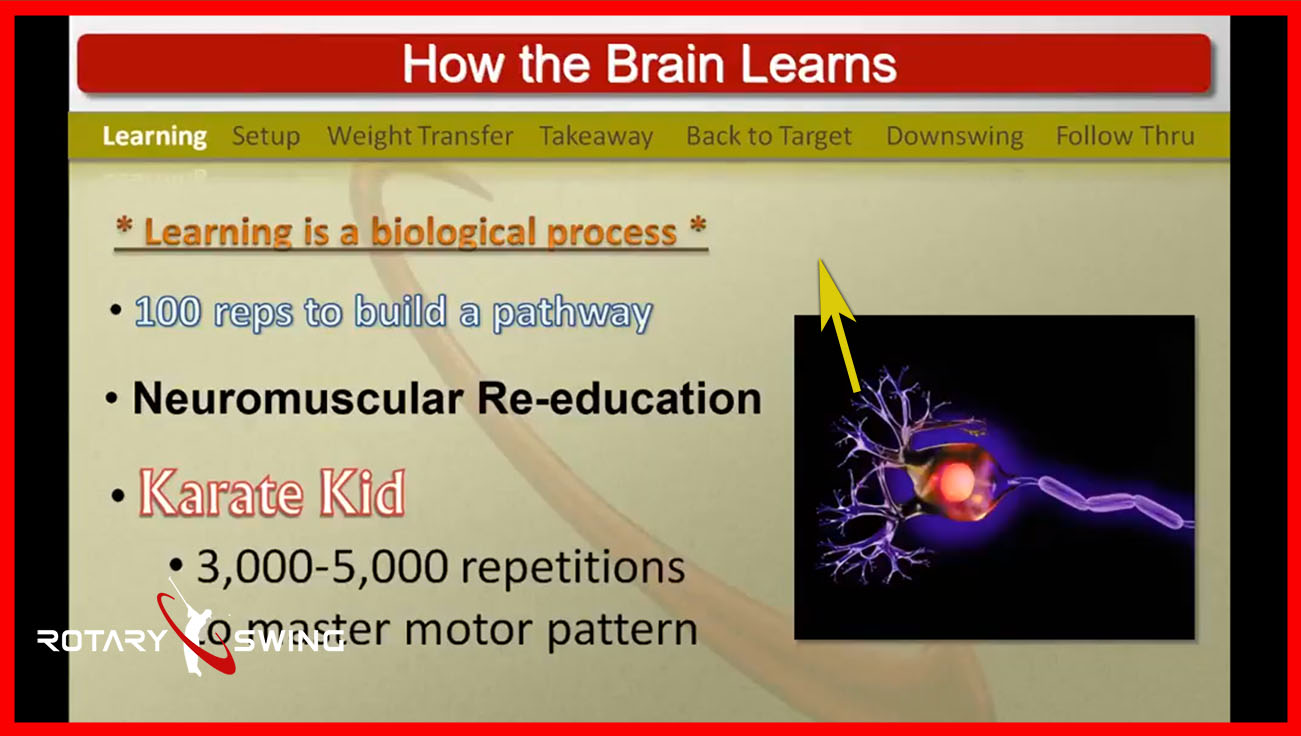

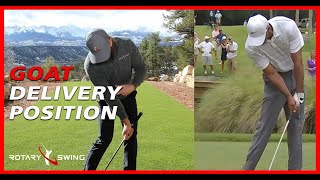
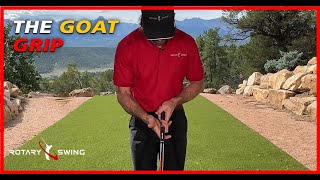
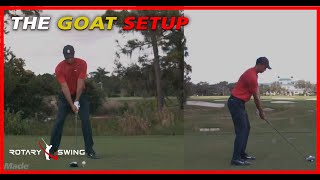
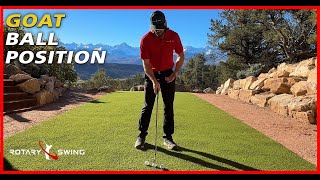
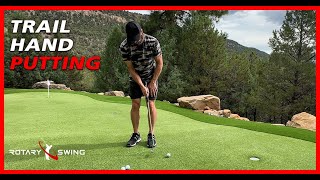

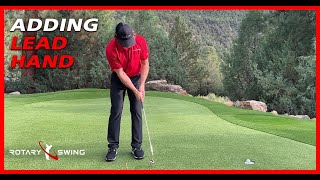
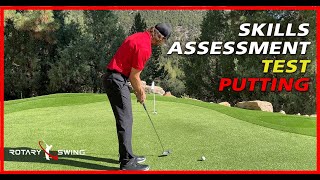
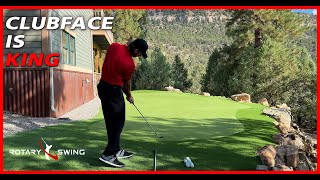
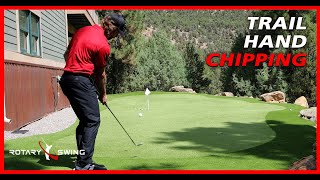
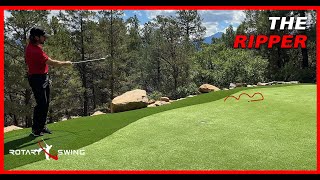
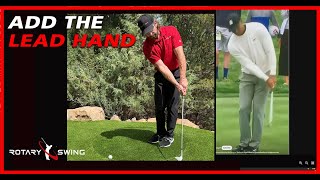

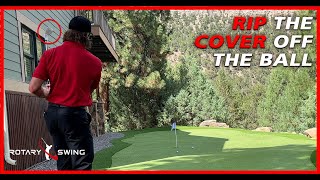

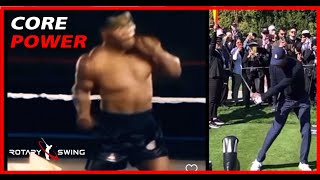
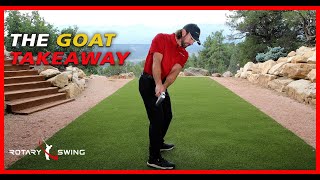
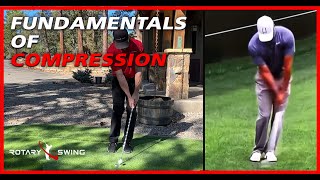
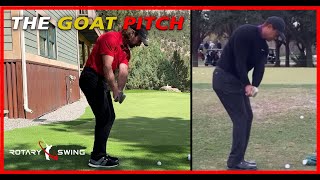
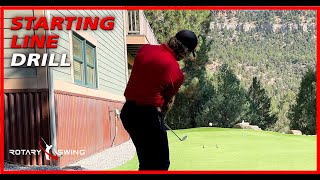

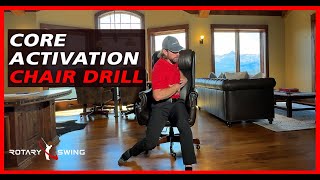
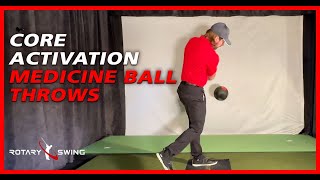
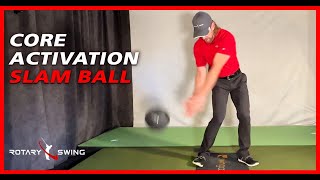
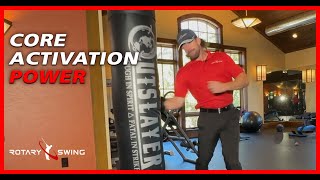
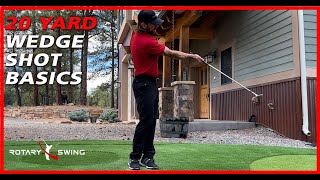
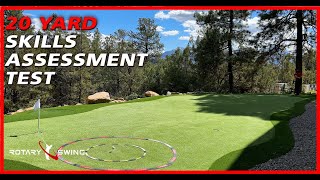
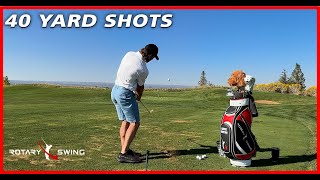
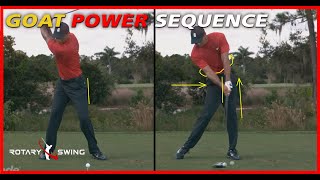
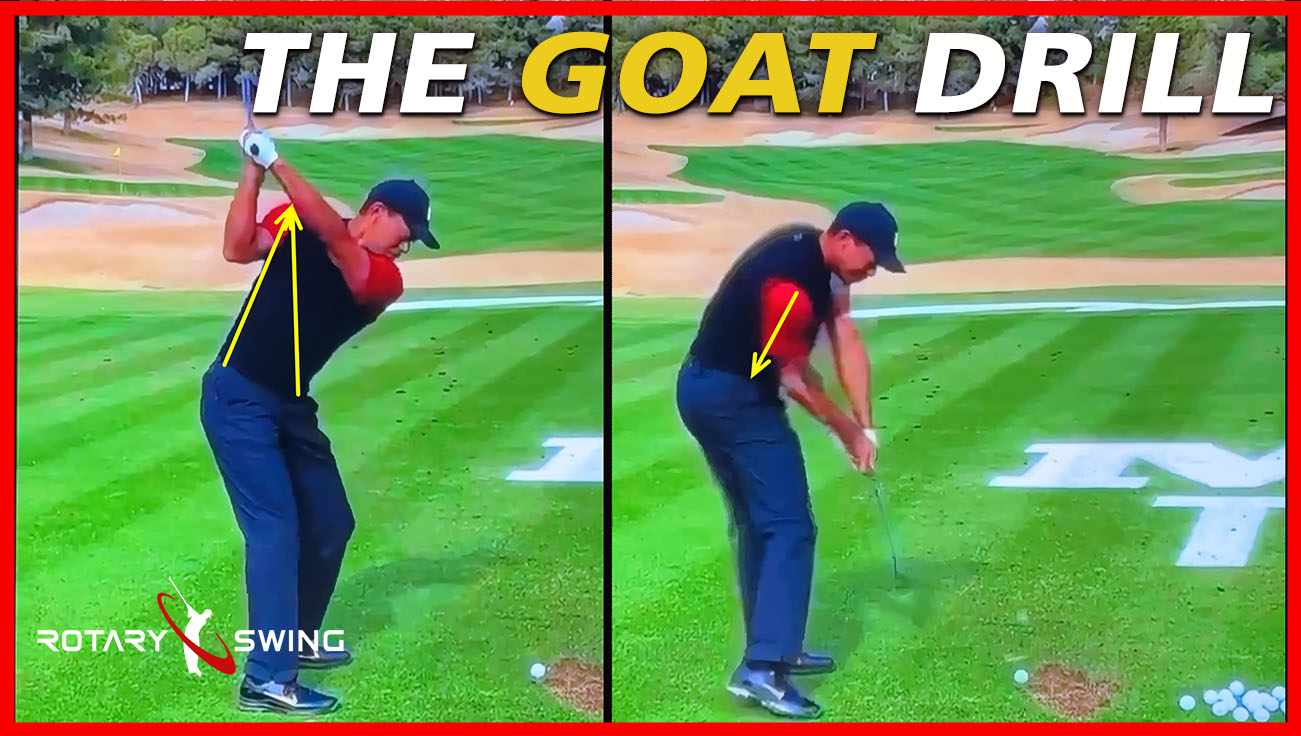
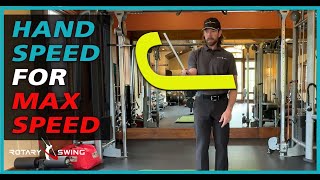
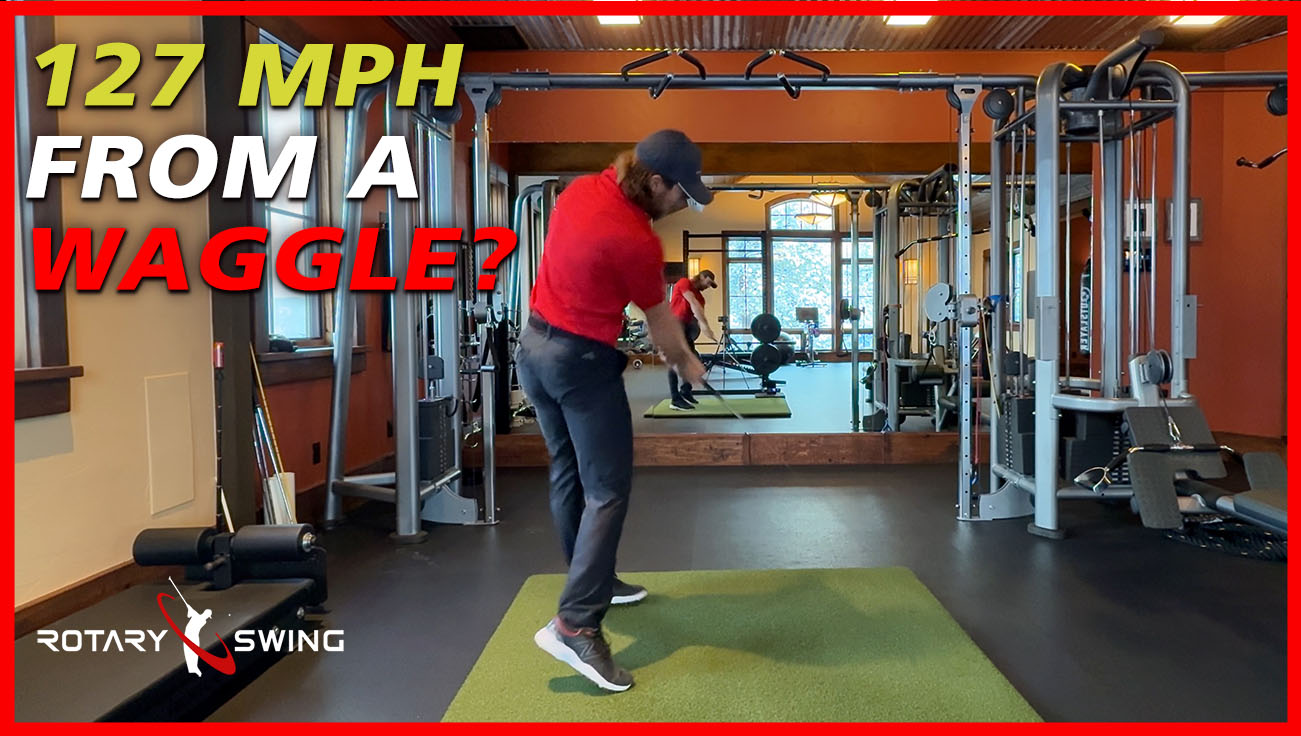
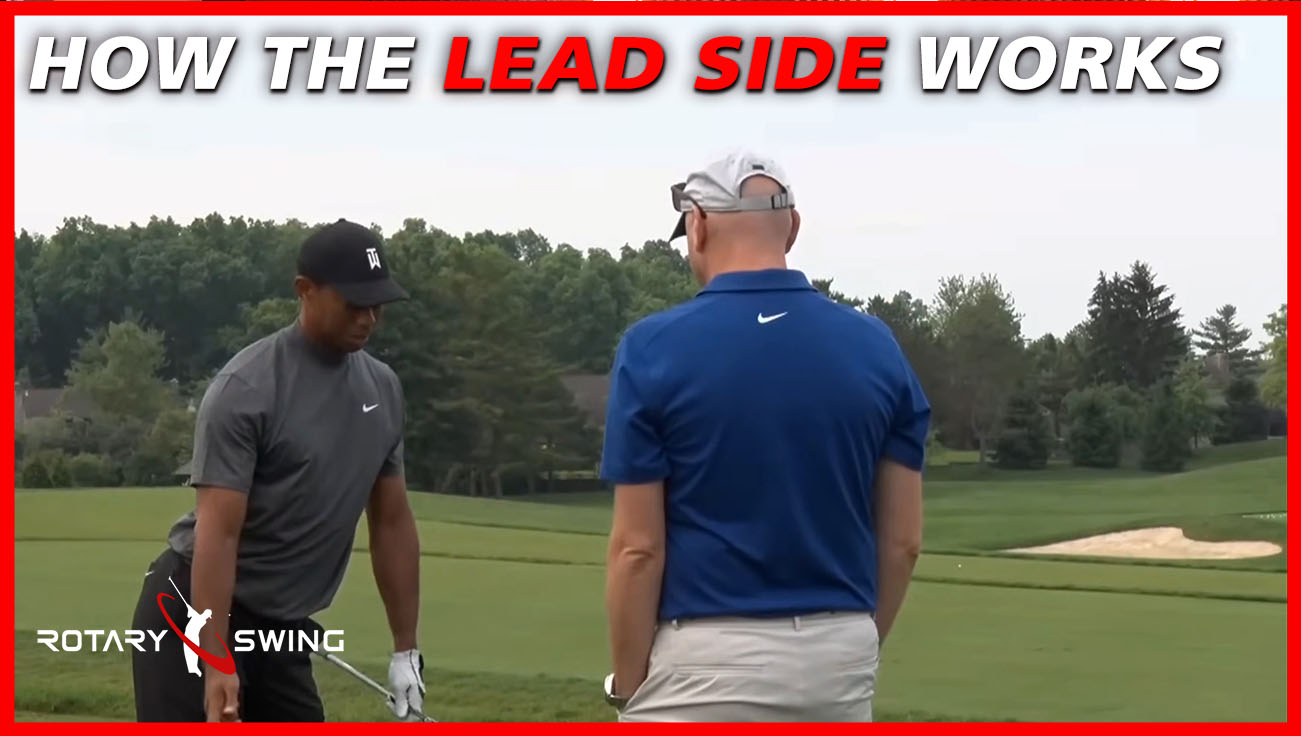
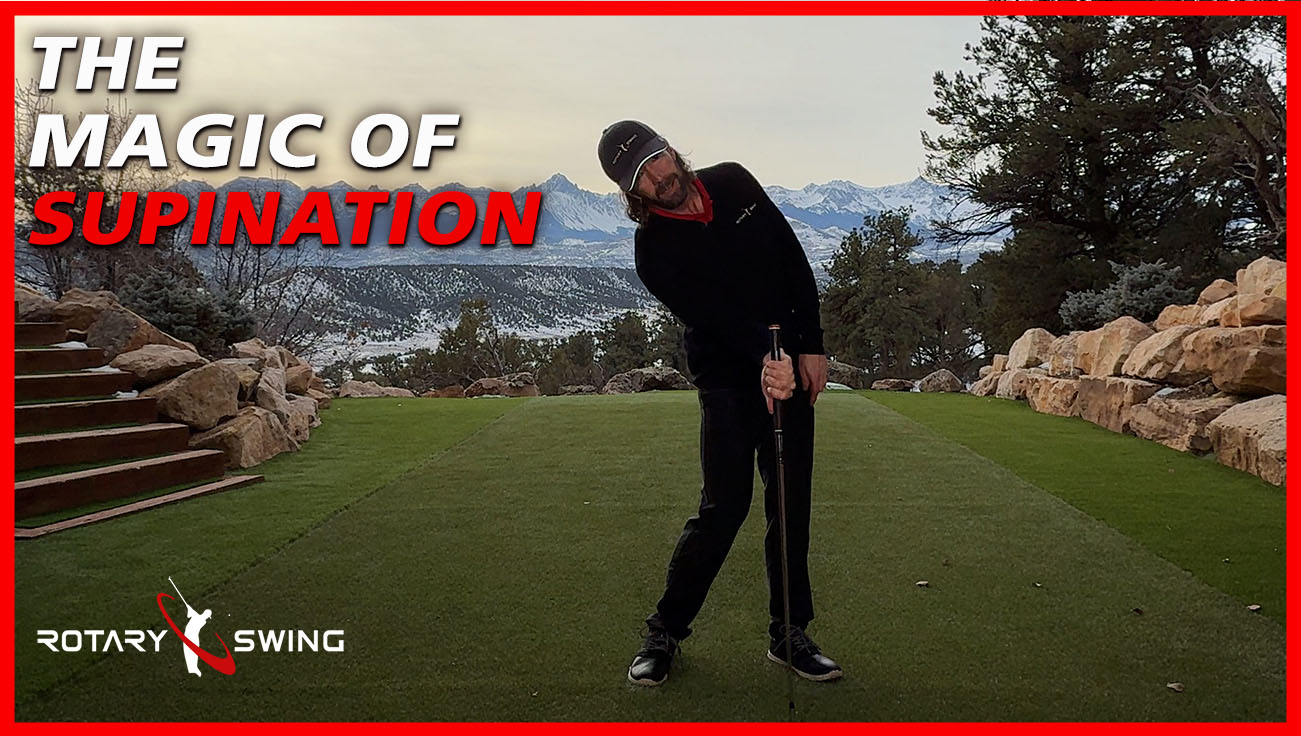
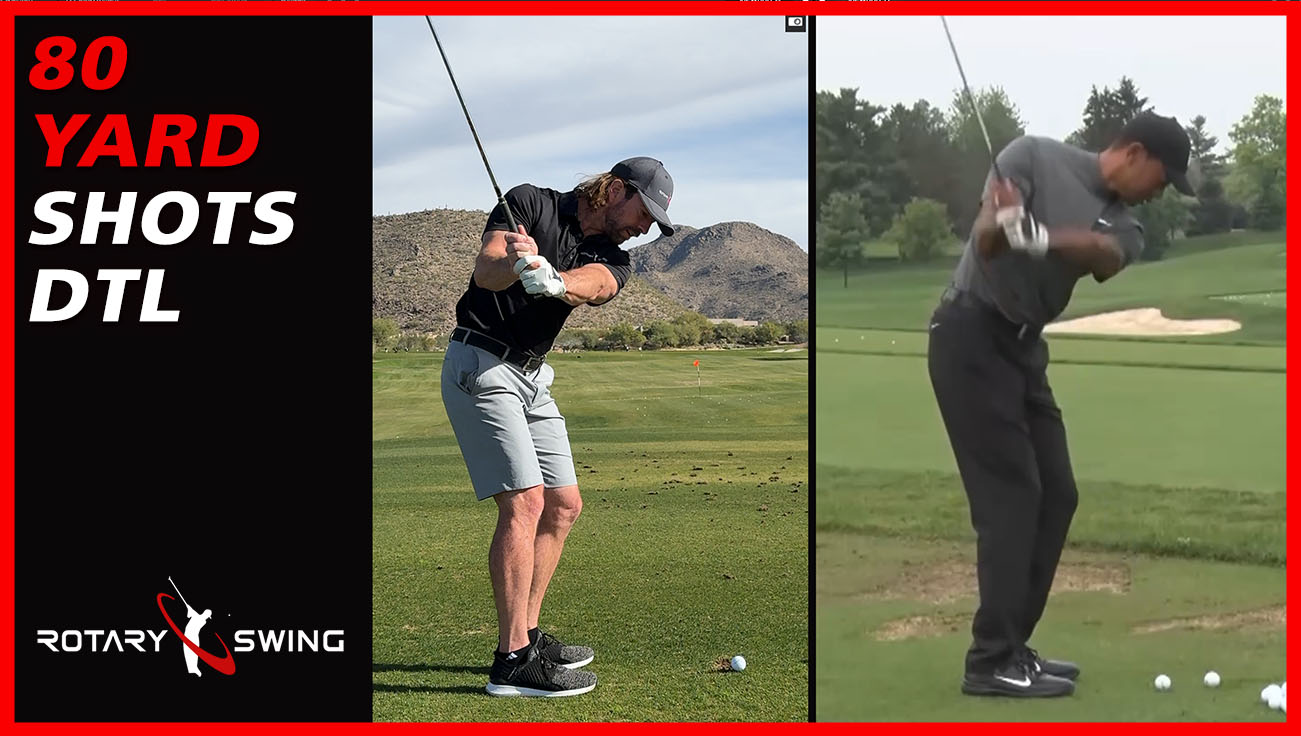
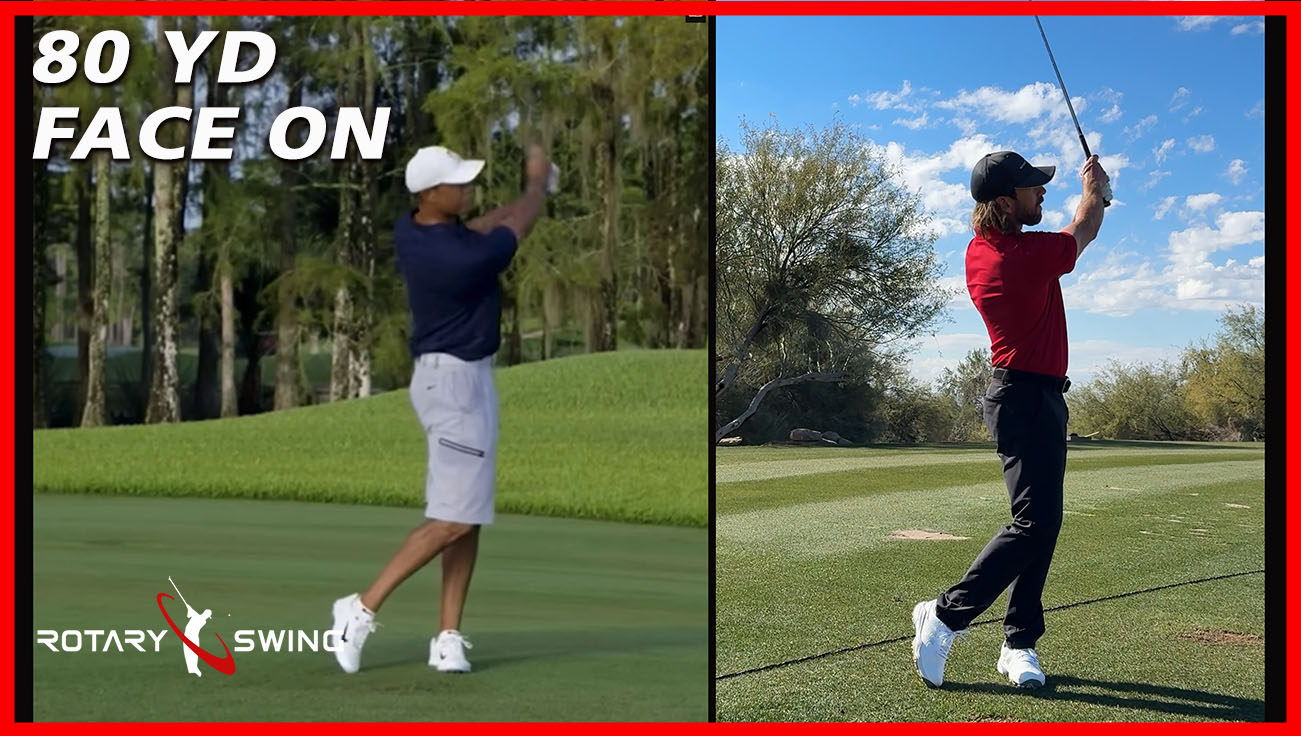
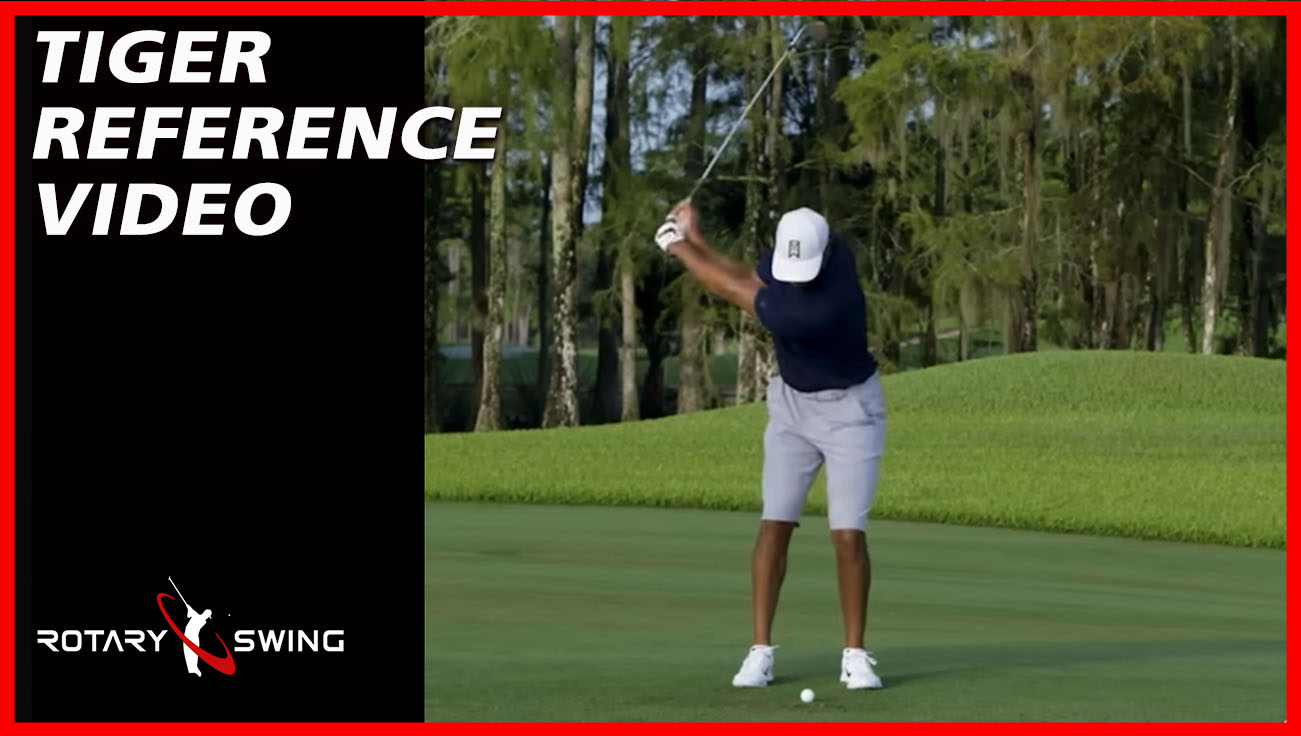


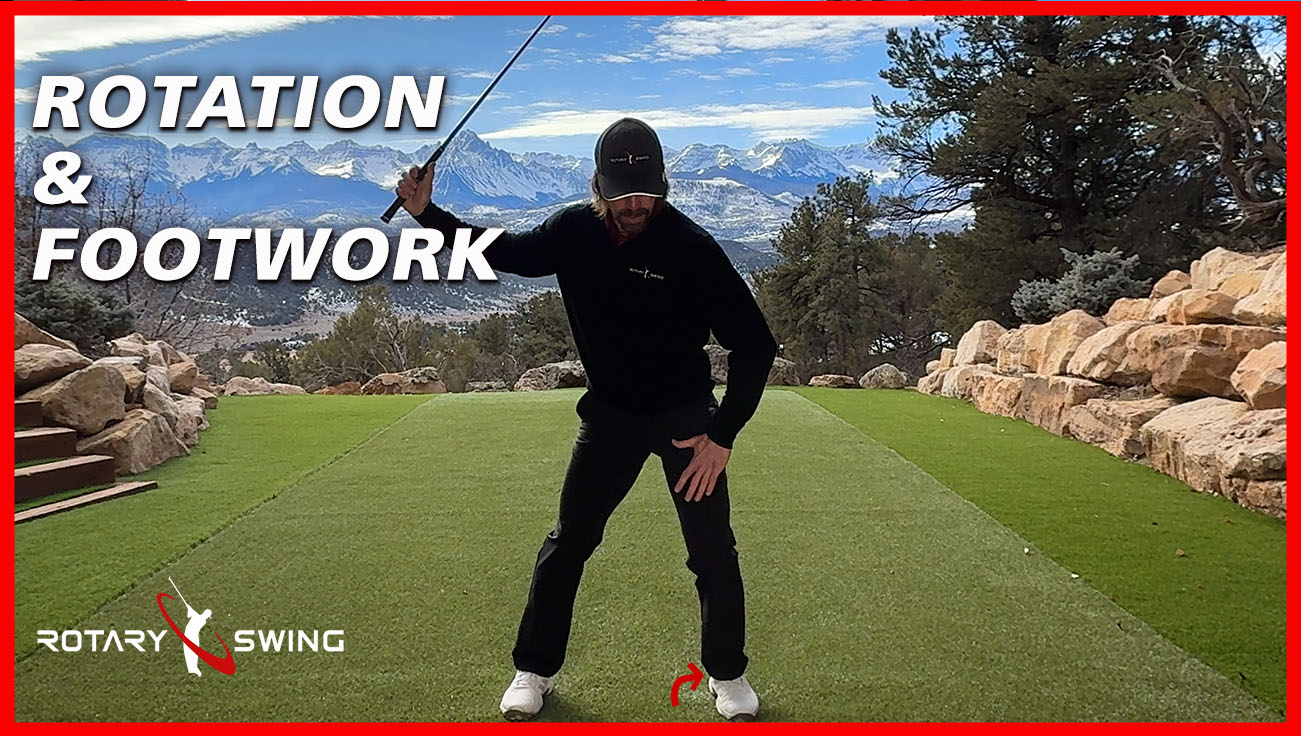
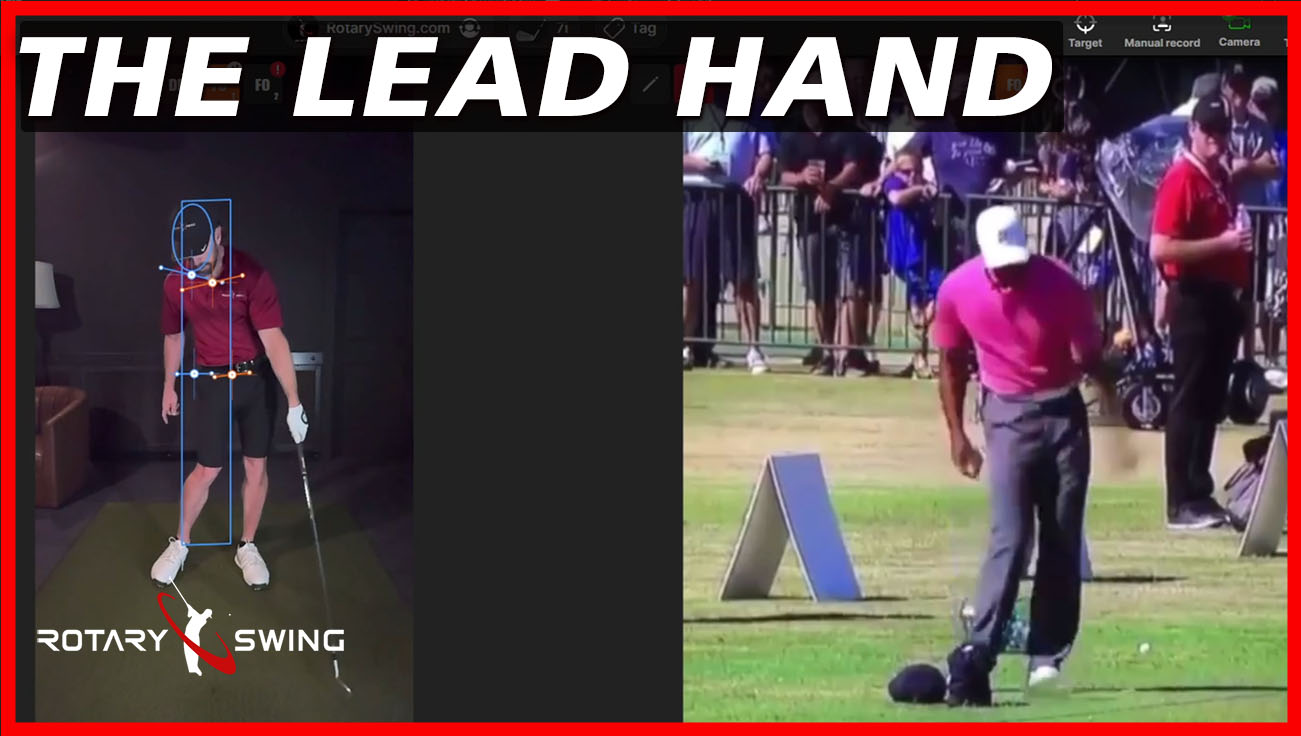
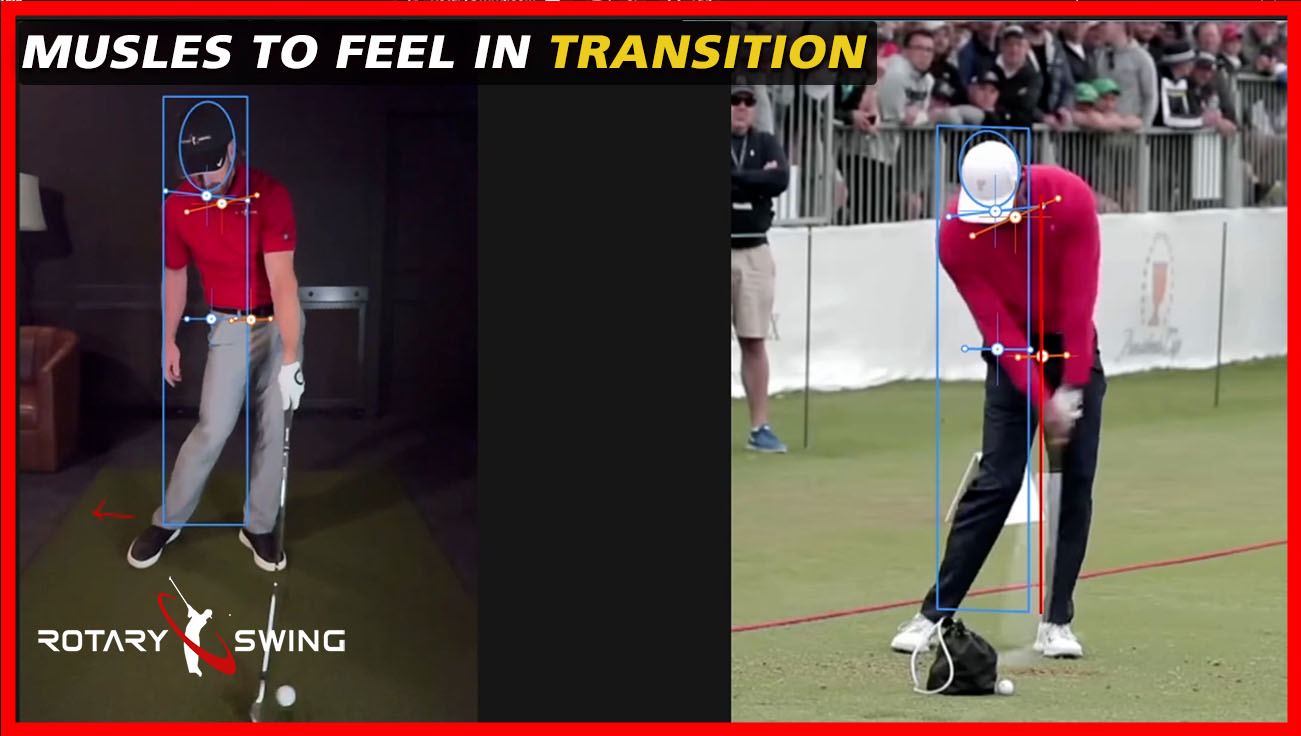
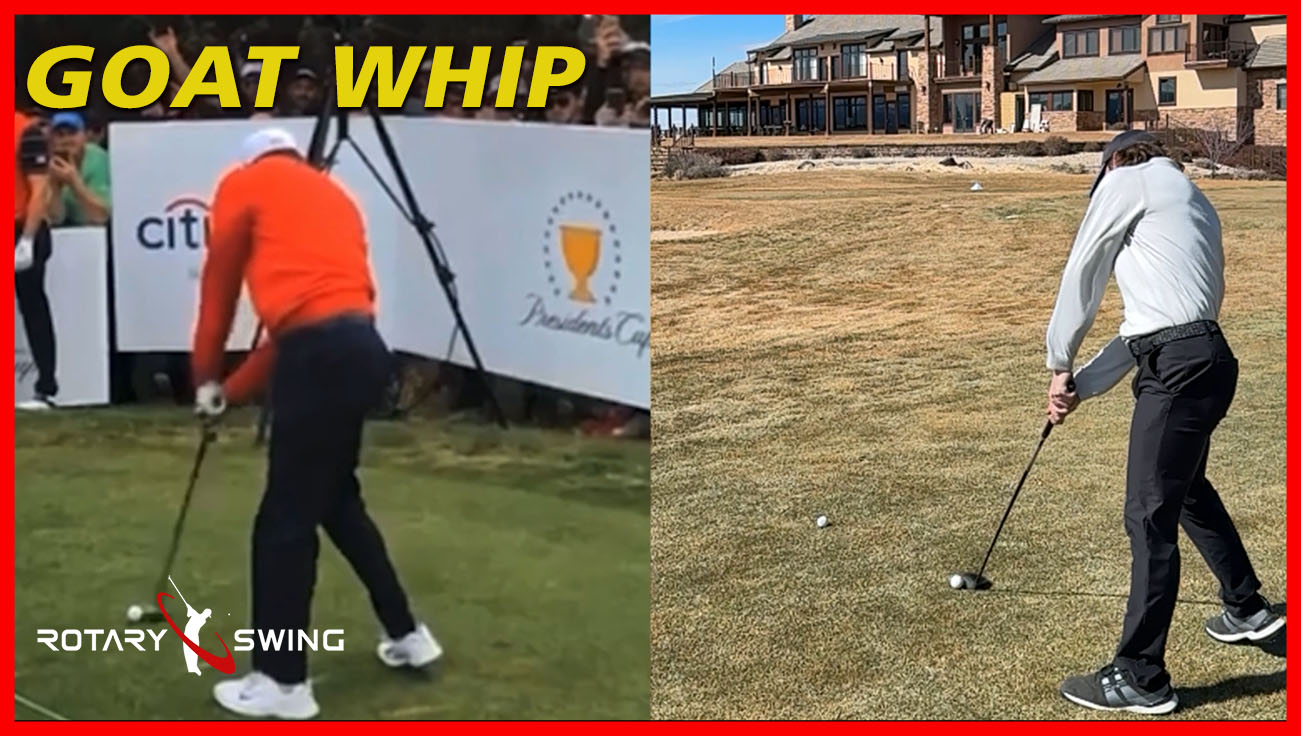
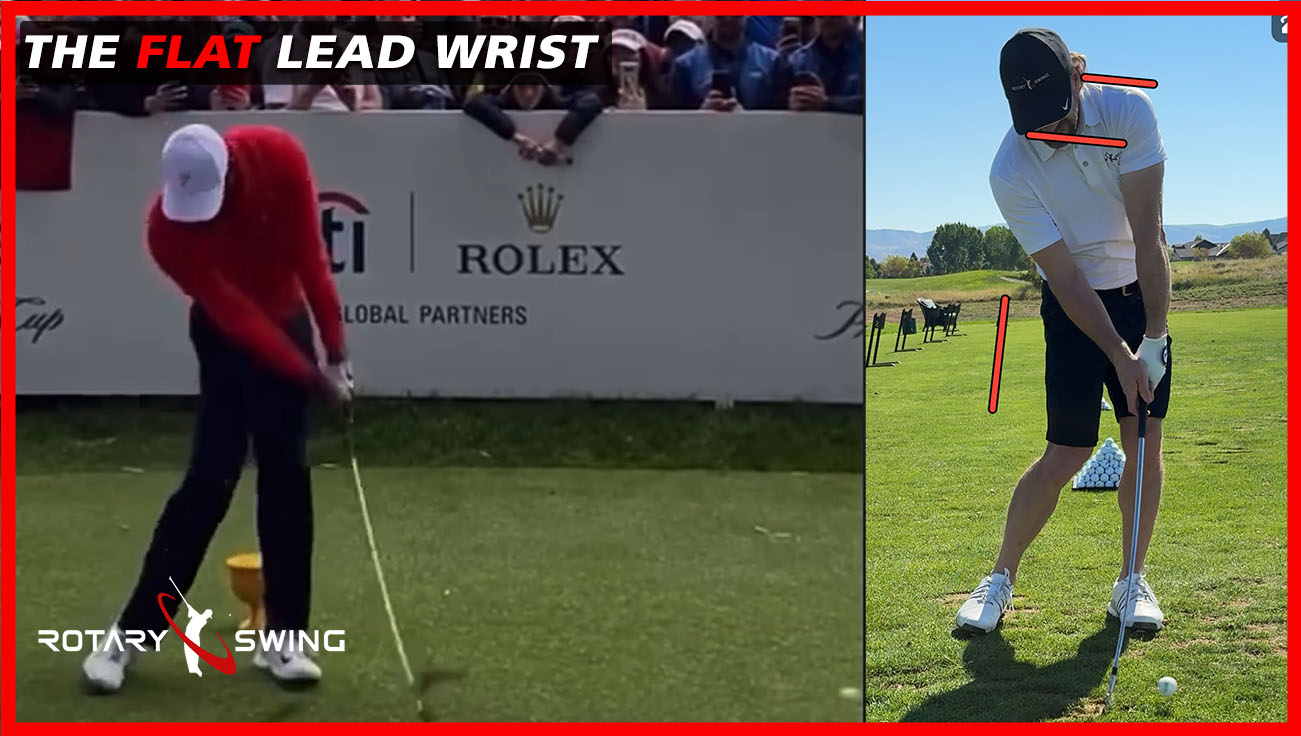
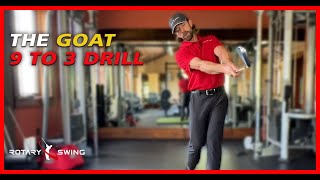
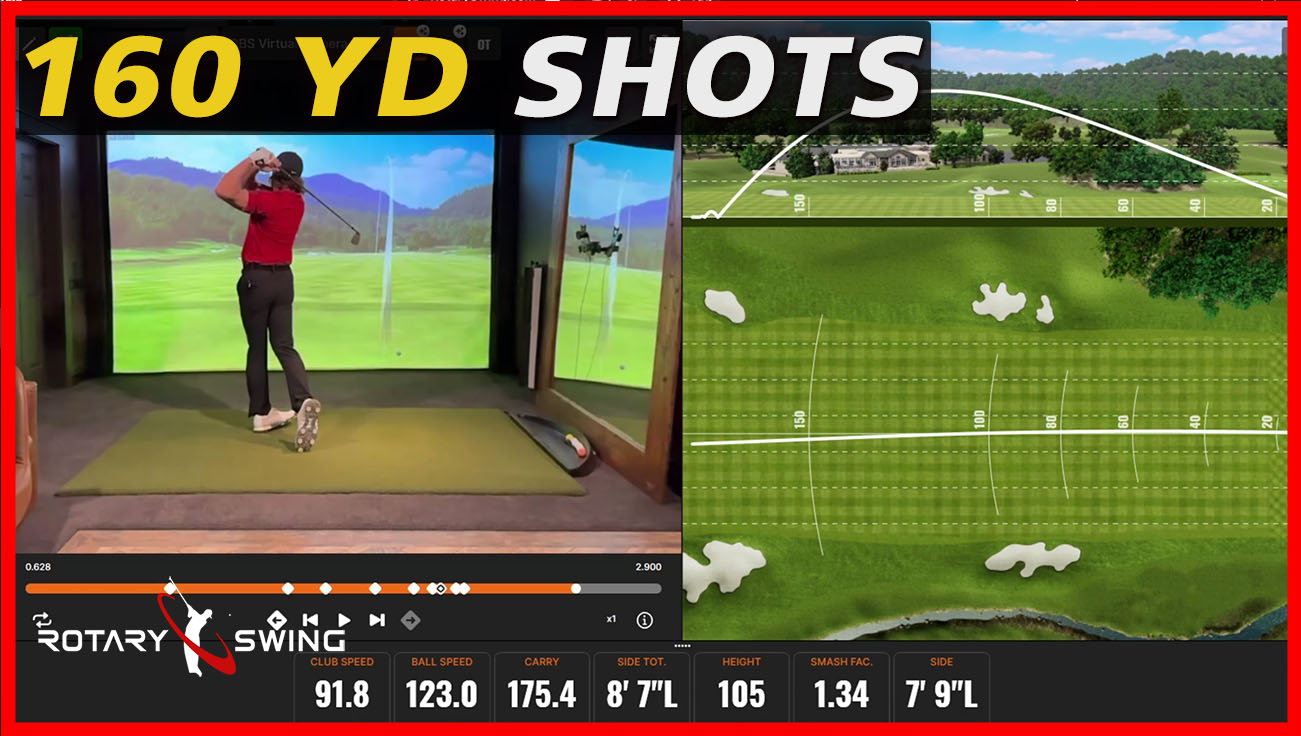
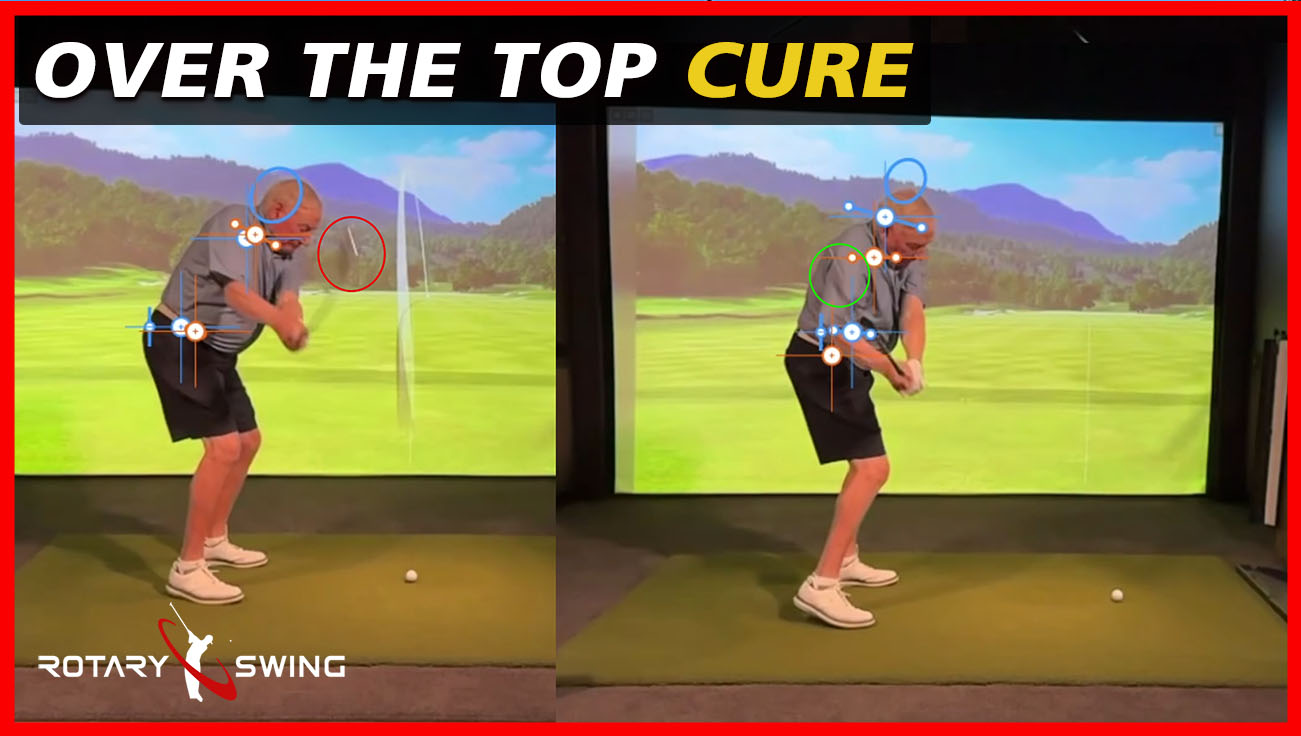

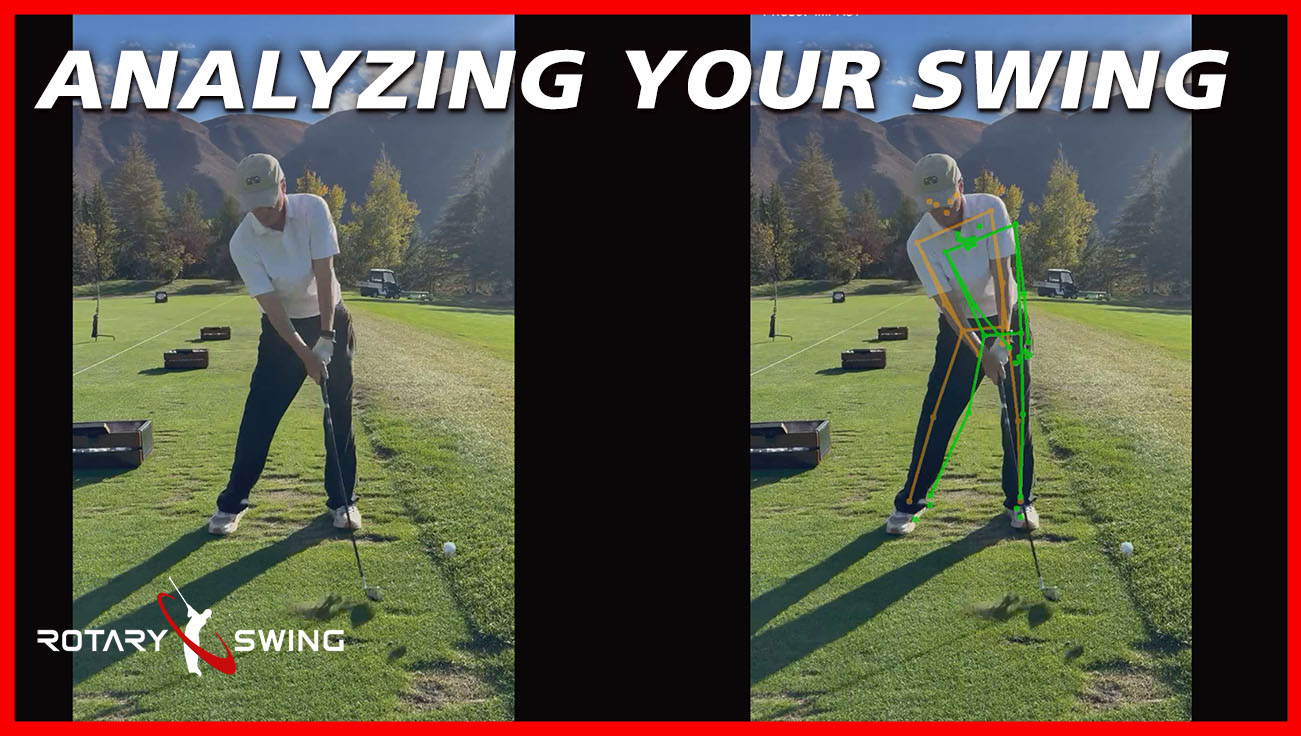

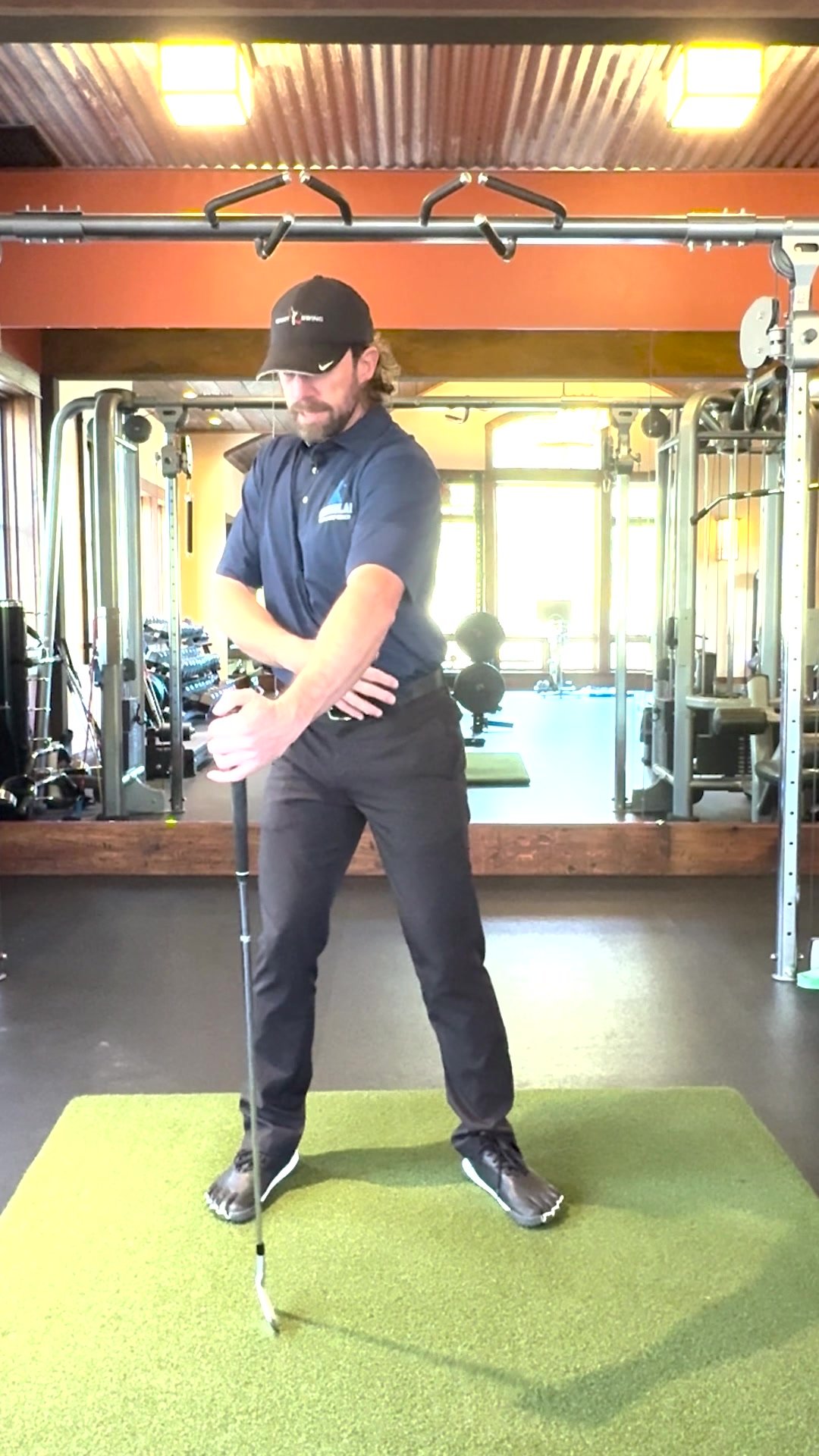
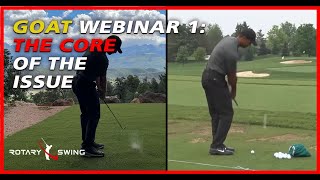
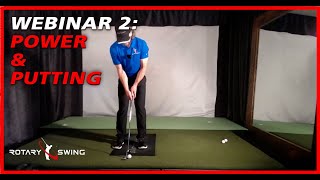
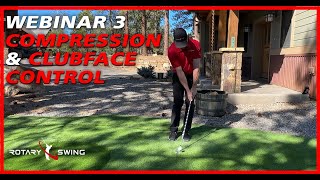
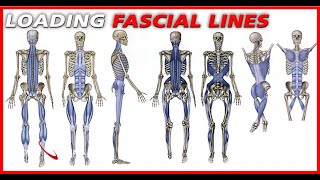
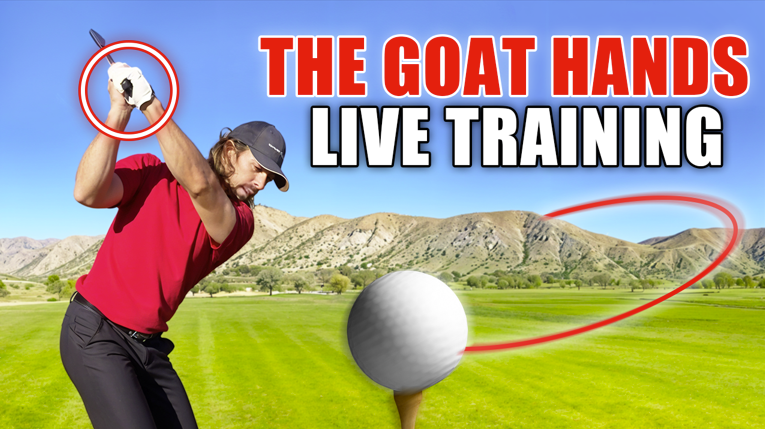

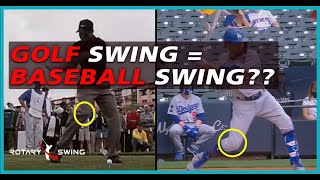
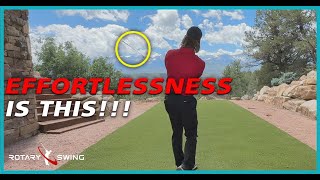

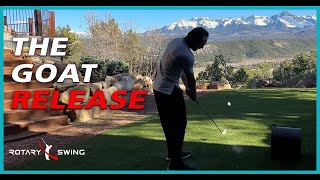
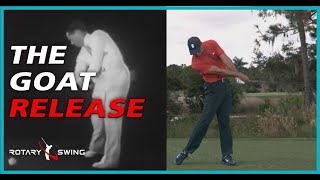
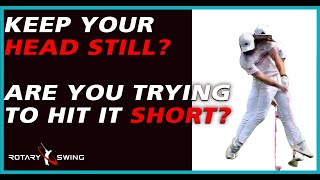
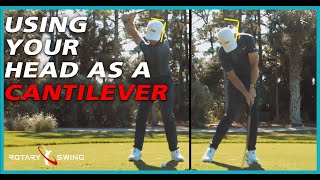
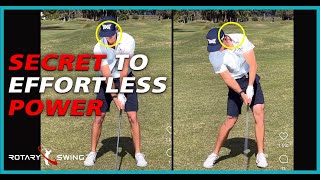
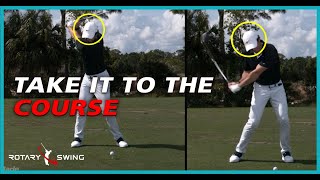
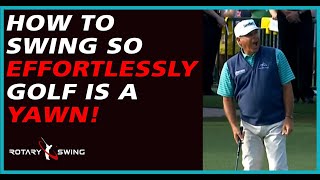
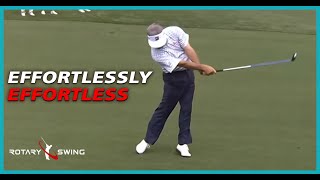
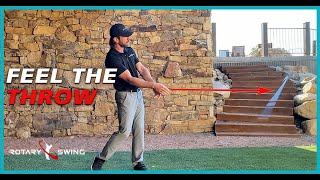
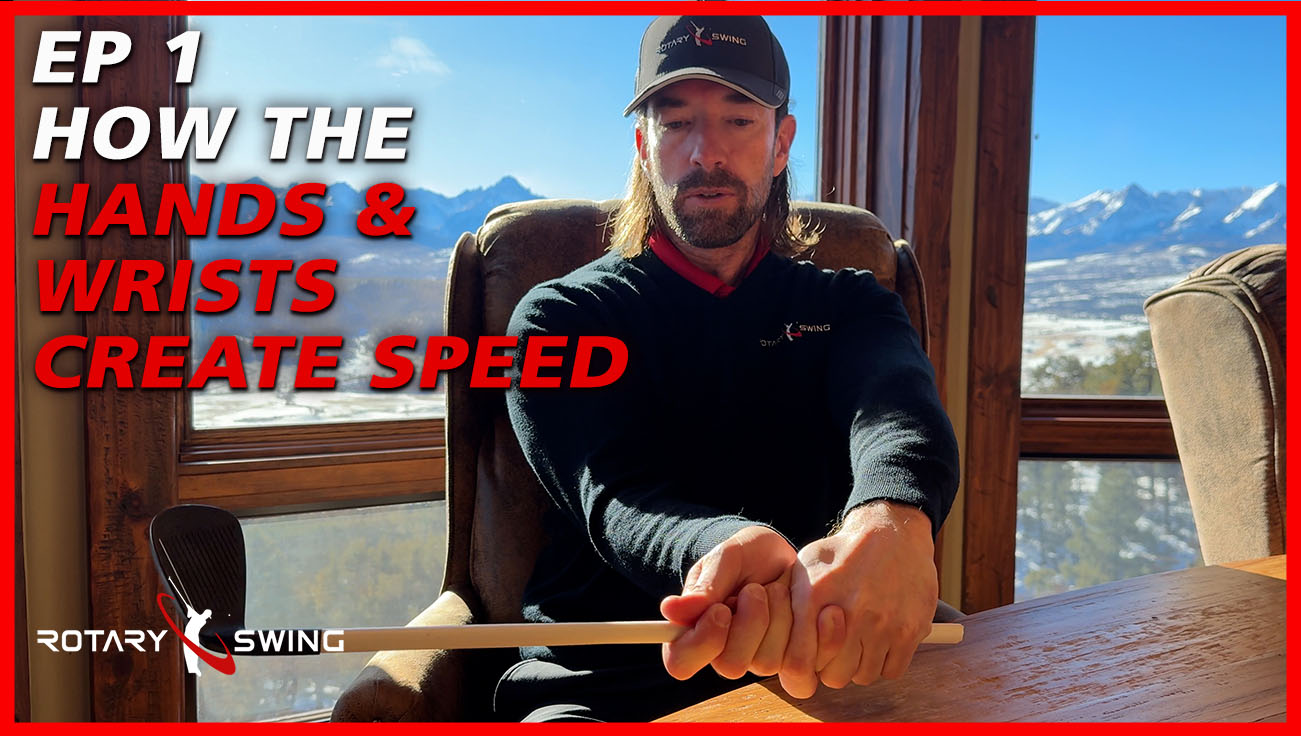

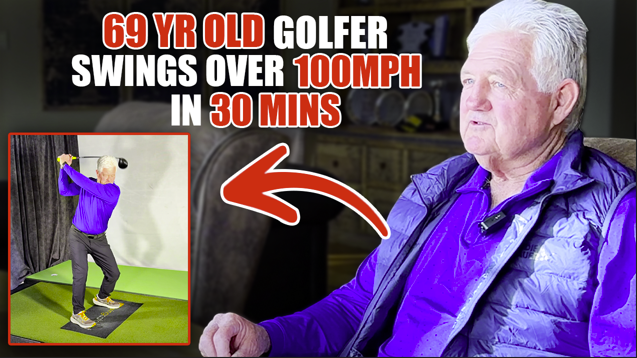

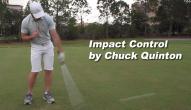
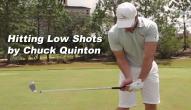


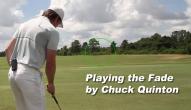
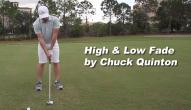

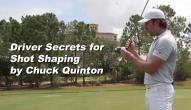

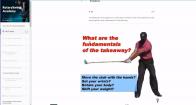
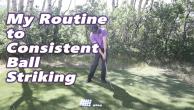

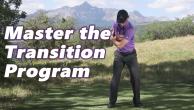
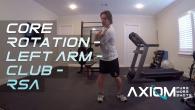
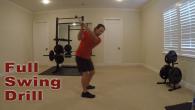
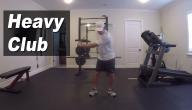
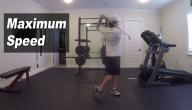
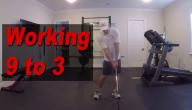
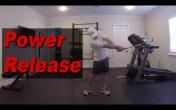

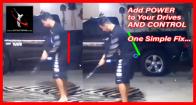
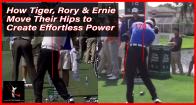
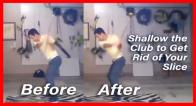

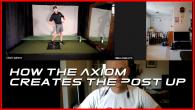
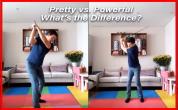
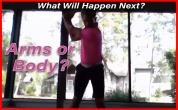
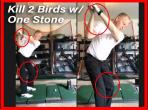

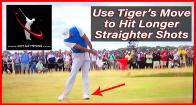

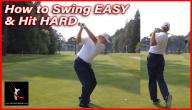
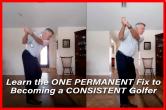
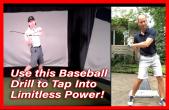
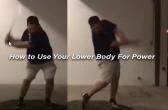
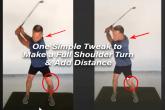

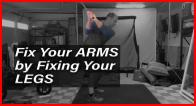
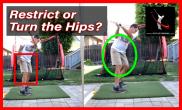
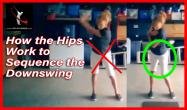
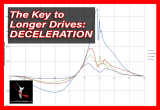
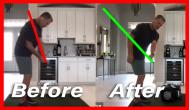
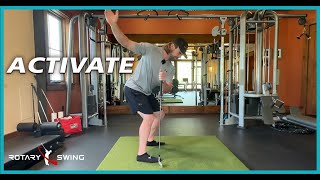
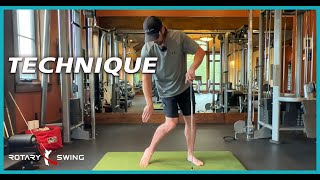
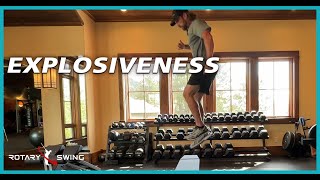
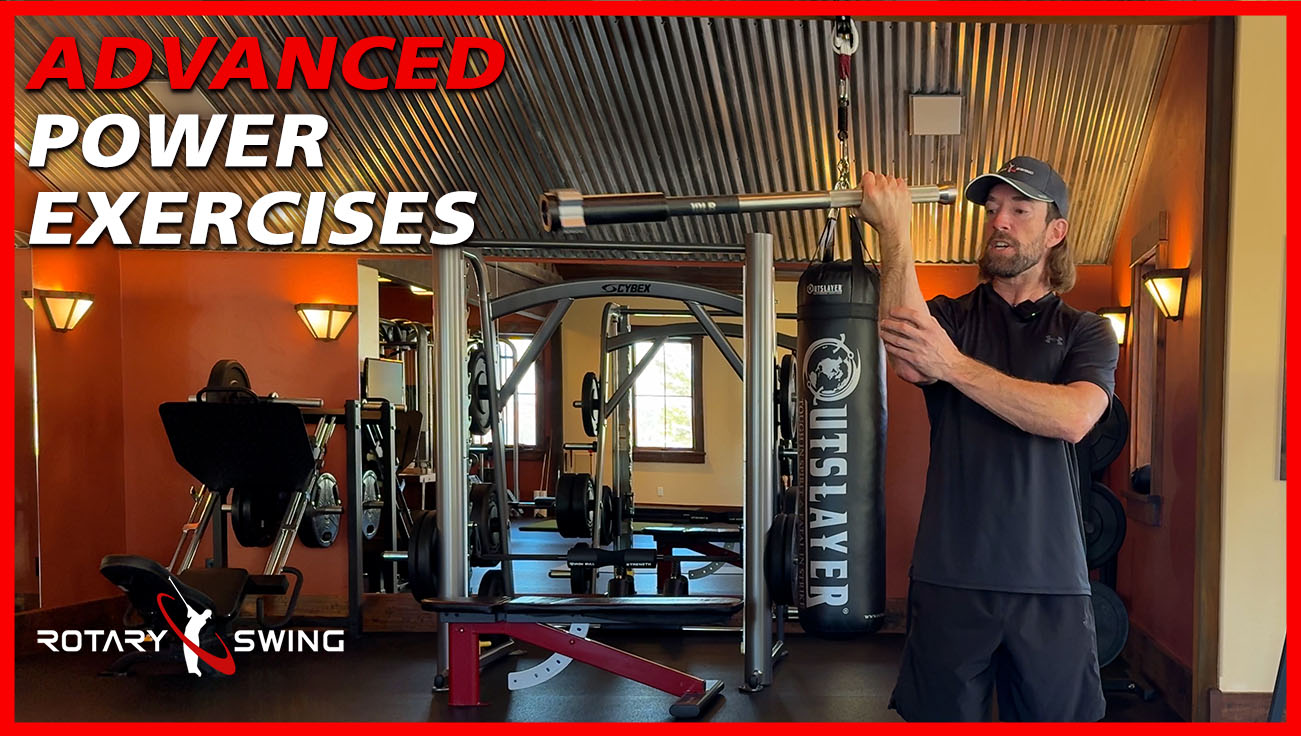
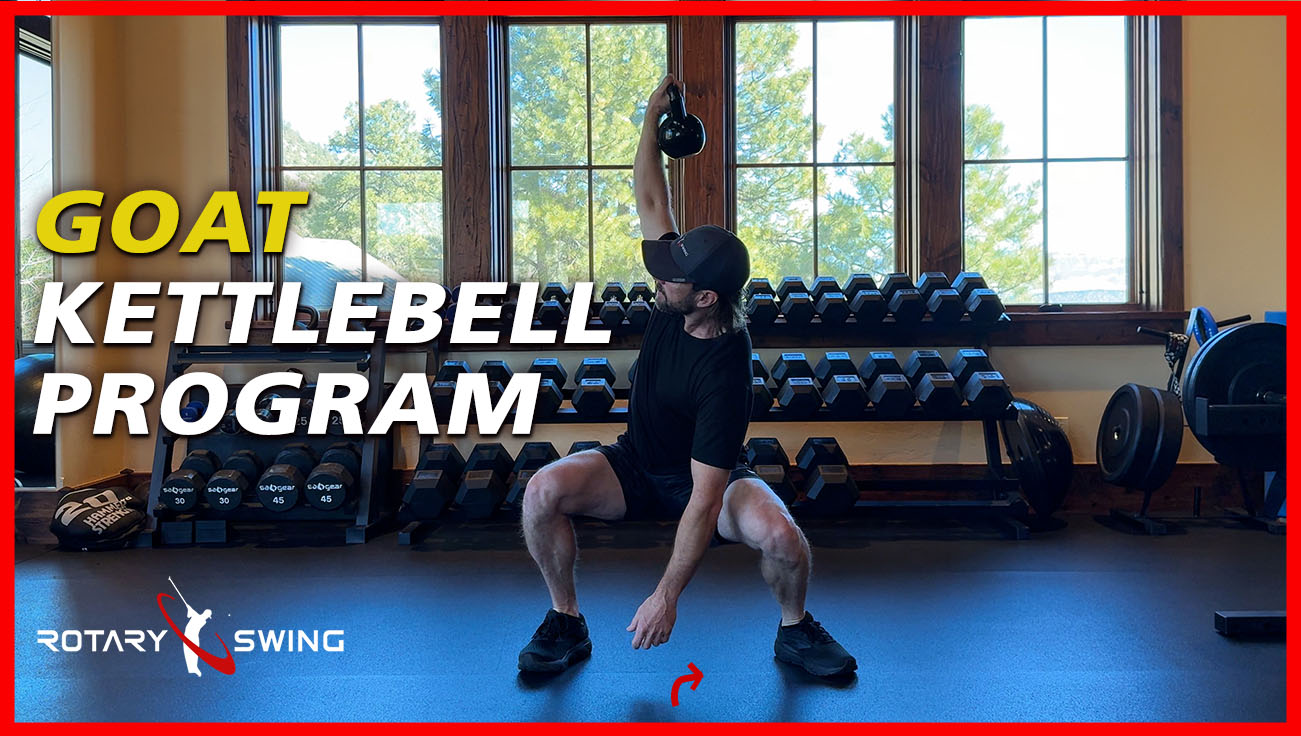

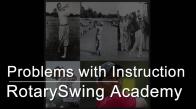
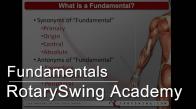

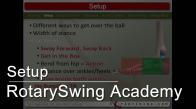
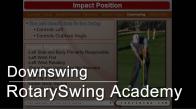

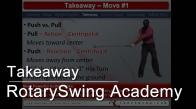
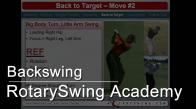
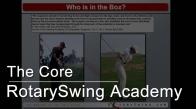
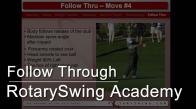


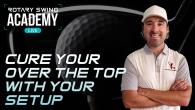
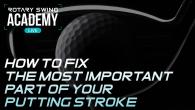
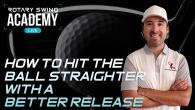
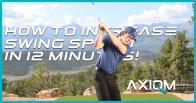
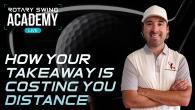
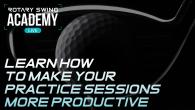
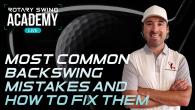
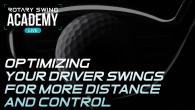
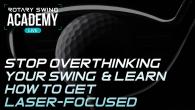



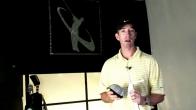
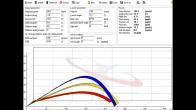

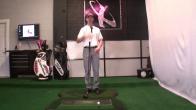
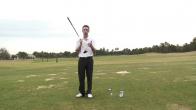
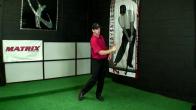
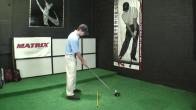
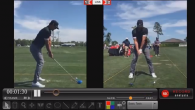

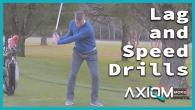
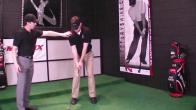
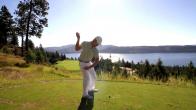
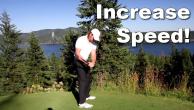
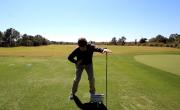
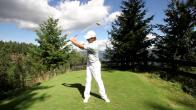
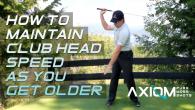
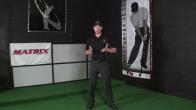
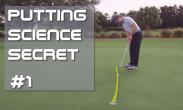
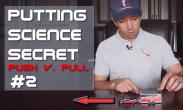

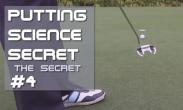
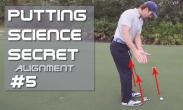
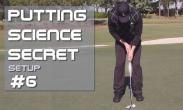
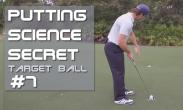
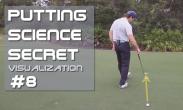
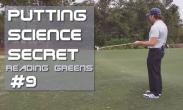





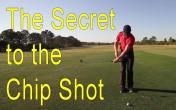
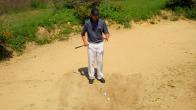
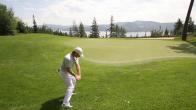
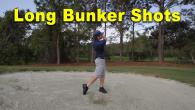

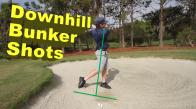
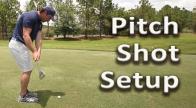
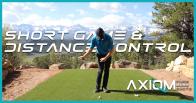
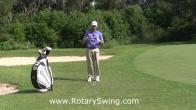
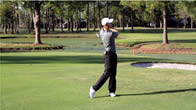
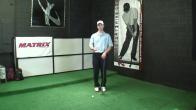
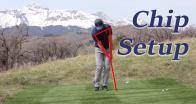


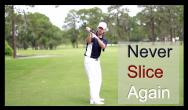
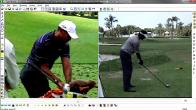
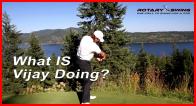
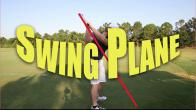
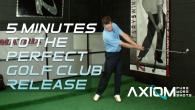
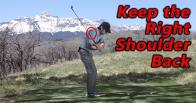

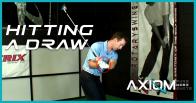



Seth
Craig (Certified RST Instructor)